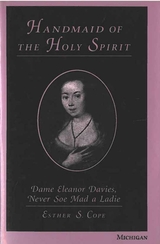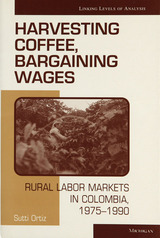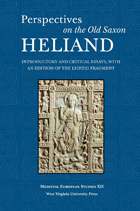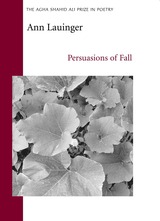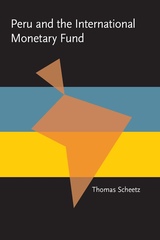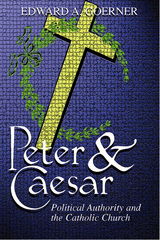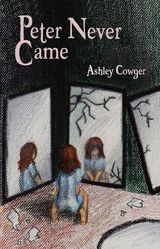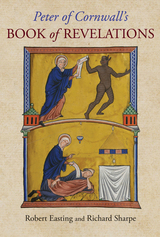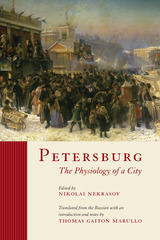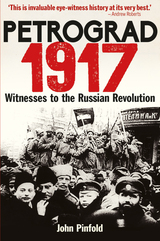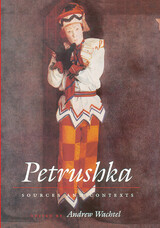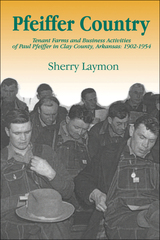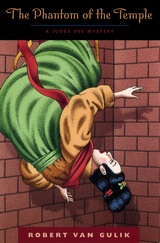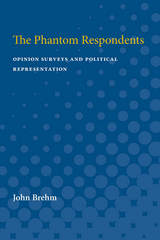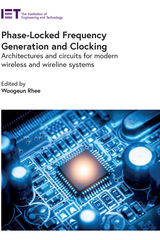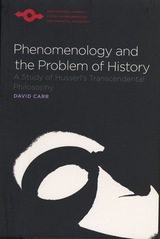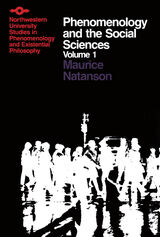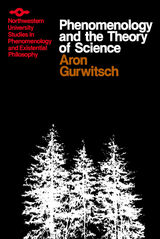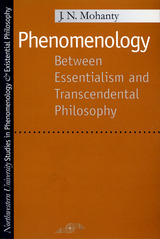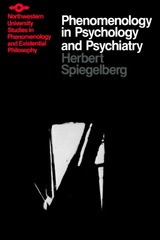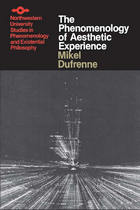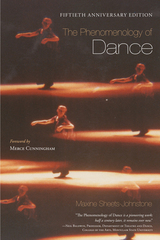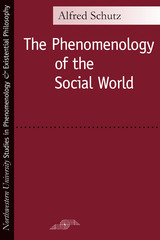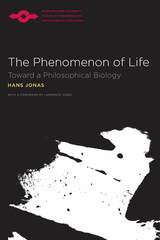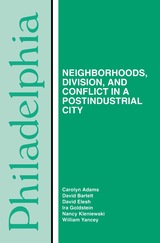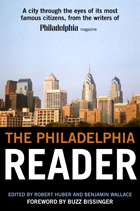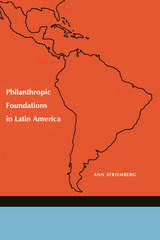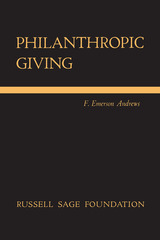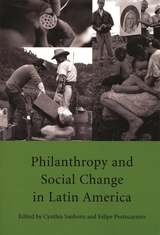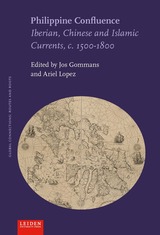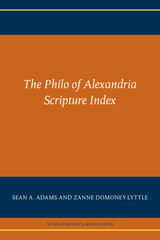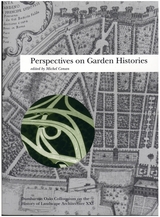 Perspectives on Garden Histories
Michel Conan
Harvard University Press, 1999 Garden history is a discipline of contested purposes. Perspectives on Garden Histories contributes to a self-critical examination of this emergent field of study, at the same time offering an overview of its main achievements in several domains—such as Italian and Mughal gardens—and of the new kinds of investigation to which they have led.
In its early years garden history centered on architectural studies of garden design, but in the 1960s the emphasis shifted from garden design to garden meaning. The new paradigm considered gardens as complex works of art and demanded an extensive documentation of the historical context as well as of the figurative and discursive sources. This approach, in its turn, was challenged by neo-Marxist scholars who proceeded to view landscape appreciation as an ideological superstructure, an outgrowth of agricultural production processes.
Garden designs and their histories can also be viewed as expressions of ideological conflicts in society. Neither gardens nor their history can thus be studied independently of the social, cultural, and political movements that give prominence to the contested ideologies. Gardens can be used to foster some ideologies or reflect a reaction against a social change.
Comparative research offers another fascinating approach, exploring the relations between European landscape concepts and other cultural contexts and discussing issues of cultural dominance and interpretation.
The emergence of various perspectives has led to the incorporation of further questions into the domain of garden studies, which has been moving in new directions and using new methods in search of an adapted theoretical framework. This volume offers a striking view of changes taking place in the discipline.
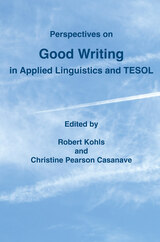 Perspectives on Good Writing in Applied Linguistics and TESOL
Edited by Robert Kohls and Christine Pearson Casanave
University of Michigan Press, 2023 In order to teach, evaluate, and research academic writing, scholars and writing teachers need to have a clear and explicit idea of what they mean by “good” or “bad” writing rather than taking an intuitive, “I know it when I see it” approach. In Perspectives on Good Writing in Applied Linguistics and TESOL, seasoned scholars and pre-service writing teachers offer their insights into the nature and activity of effective writing in first and additional languages at the college and university level. Readers will find first-person accounts of well-established scholars learning to write and publish in English, conceptual articulations on the nature of writing and academic publishing, and how perspectives on good writing shape teacher feedback and writing curricula. In addition, this book suggests new areas of L2 writing research beyond the well-traveled practice of written corrective feedback (WCF). This book is ideal for readers curious to learn more about how established scholars developed their writing skills as well as for pre-service teachers exploring their own beliefs, values, and assumptions about what good writing means to them. In Perspectives on Good Writing in Applied Linguistics and TESOL, readers will develop their understanding of writing practices through chapters covering the following areas: - teaching, learning, and assessing
- mentoring, supervising, and publishing
- personal perspectives
- readers and reading
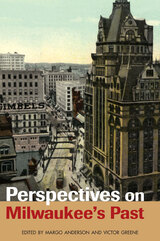 Perspectives on Milwaukee's Past
Edited by Margo Anderson and Victor Greene
University of Illinois Press, 2008 In this volume, a diverse group of scholars explores key themes in the distinctive history of Milwaukee, from settlement to the present, both in terms of the area's internal development and its comparative standing with other Great Lakes cities. Contributors discuss the importance of socialism and labor in local politics; Milwaukee's ethnic diversity, including long-standing African American, Latino, and Asian communities as well as an unusually large and significant German American population; the function and origins of the city's residential architecture; and the role of religious and ethnic culture in forming the city's identity. Rich in detail, the essays also challenge readers and researchers to pursue additional research on the city and the region by identifying critical areas and methods for future investigations into Milwaukee's past. Contributors are Margo Anderson, Steven M. Avella, John D. Buenker, Jack Dougherty, Eric Fure-Slocum, Victor Greene, Thomas C. Hubka, Judith T. Kenny, Genevieve G. McBride, Aims McGuinness, Anke Ortlepp, Joseph A. Rodriguez, and N. Mark Shelley.
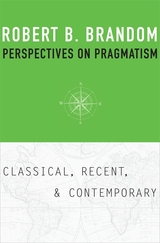 Perspectives on Pragmatism: Classical, Recent, and Contemporary
Robert B. Brandom
Harvard University Press, 2011 Pragmatism has been reinvented in every generation since its beginnings in the late nineteenth century. This book, by one of today’s most distinguished contemporary heirs of pragmatist philosophy, rereads cardinal figures in that tradition, distilling from their insights a way forward from where we are now.
Perspectives on Pragmatism opens with a new accounting of what is living and what is dead in the first three generations of classical American pragmatists, represented by Charles Sanders Peirce, William James, and John Dewey. Post-Deweyan pragmatism at midcentury is discussed in the work of Wilfrid Sellars, one of its most brilliant and original practitioners. Sellars’ legacy in turn is traced through the thought of his admirer, Richard Rorty, who further developed James’s and Dewey’s ideas within the professional discipline of philosophy and once more succeeded, as they had, in showing the more general importance of those ideas not only for intellectuals outside philosophy but for the wider public sphere.
The book closes with a clear description of the author’s own analytic pragmatism, which combines all these ideas with those of Ludwig Wittgenstein, and synthesizes that broad pragmatism with its dominant philosophical rival, analytic philosophy, which focuses on language and logic. The result is a treatise that allows us to see American philosophy in its full scope, both its origins and its promise for tomorrow.
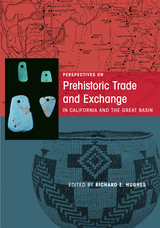 Perspectives on Prehistoric Trade and Exchange in California and the Great Basin
Richard E. Hughes
University of Utah Press, 2011 How does prehistoric material get from its place of origin to its location of archaeological recovery? While this question may seem basic, a moment’s reflection suggests that the answers carry important implications for arc-haeological interpretation about social organization, settlement, and subsistence practices. Archaeologists know much about the temporal and spatial distribution of materials in prehistoric western North America, but comparatively little has emerged regarding the causes of such distributions. Trade and exchange, mobility, and direct access all have been credited with observed distributions, but the reasons for settling on specific behavioral linkages is rarely made clear. This volume investigates the circumstances and conditions under which trade/exchange, direct access, and/or mobility best account for material conveyance across varying distances at different times in the past. Each chapter contextualizes distributional and chemical data, evaluates competing distribution hypotheses, and addresses the reasoning and inferences employed to arrive at conclusions about the human behaviors responsible for the distributions of materials. Contributors showcase a range of diverse and creative ways of thinking about these issues in the California and Great Basin archaeological record, and why it matters.
 Perspectives on the Economics of Aging
Edited by David A. Wise
University of Chicago Press, 2004 This book investigates several important issues in the economics of aging, including the accumulation of wealth and the relationship between health and financial prosperity.
Examining the changes in savings behavior and investment priorities in the United States over the past few decades, contributors to the volume point to a dramatic shift from employer-managed, defined benefit pensions to employee-controlled retirement savings plans. Further, the legislative reforms of the 1980s and the booming stock market of the 1990s did their share to influence individual wealth accumulation patterns of Americans.
These studies also explore the relationship between health status and economic status. Considering issues like pension income and health, mortality, and medical care, contributors present evidence from the United States, Britain, South Africa, and Russia. The volume culminates with wide-ranging discussions on a number of key topics in the field including the innovations that have contributed to a decline in mortality rates; the various medical advances that have benefited populations over time; and the determinants of expenditures on health. The findings with regard to cross-sectional differences in health outcomes and health care utilization also pose troubling questions for policymakers seeking to democratize health care across regions and races.
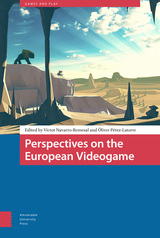 Perspectives on the European Videogame
Víctor Navarro-Remesal
Amsterdam University Press, 2022 The history of European videogames has so far been overshadowed by the global impact of the Japanese and North American industries. However, European game development studios have played a major role in videogame history, and many prominent videogames in popular culture, such as Grand Theft Auto, Tomb Raider, Alone in the Dark, and The Witcher, were made in Europe. This book proposes an inquiry into European videogames, including both analyses of transnational aspects of European production and close readings of national specificities. It offers a kaleidoscope of European videogame culture, focusing on the analysis of European works and creators but also addressing contextual aspects and placing videogames within a wider sociocultural and philosophical ground.
The aim of this collective work is to contribute to the creation of a, until now, almost non-existent yet necessary academic endeavour: a story and critical exploration of the works, authors, styles, and cultures of the European videogame.
 Perspectives on the Human Genome Project and Genomics
Christopher R. Donohue
University of Minnesota Press, 2026 Interdisciplinary voices reflect on some of the most complex and consequential scientific undertakings of our time
Perspectives on the Human Genome Project and Genomics is a groundbreaking volume that examines the pivotal roles of the National Institutes of Health (NIH) and the National Human Genome Research Institute (NHGRI) in the Human Genome Project (HGP) and the development of other major genomics projects. Drawing on newly uncovered archival materials and oral histories from NHGRI, this volume offers a multifaceted narrative of some of the most transformative scientific achievements of the twentieth and twenty-first centuries. Coeditors Christopher R. Donohue and Alan C. Love bring together a range of perspectives on the HGP’s progress and legacy, as well as other major genomics projects, to explore not only their scientific achievements but also their social and political dimensions. Presenting reflections from historians, philosophers, and sociologists alongside those of key NHGRI scientists like Eric Green, Mark Guyer, and Elise Feingold; experts like Nature editor-in-chief Magdalena Skipper and geneticist Eric Vilain; and scholars of the ethical, legal, and social implications of genomics like Jean McEwan and Joy Boyer, Perspectives on the Human Genome Project and Genomics highlights the international, interdisciplinary collaborations and collective long view that underpinned these genomics initiatives aimed at a better understanding of our basic biology and genetic diseases. From genomic variation and sequencing technologies to the integration of big data and the influence of ancestry and gender, this book is an essential resource for deepening the discussion of the scientific, historical, and ethical impacts of genomics and a fascinating collection of insights into coordinated science in the making. Contributors: Rina Bliss, Joy Boyer, Lisa D. Brooks, Michel Dubois, Elise A. Feingold, Adam Felsenfeld, Miguel García-Sancho, Eric Green, Catherine Guaspare, Chris Gunter, Stephan Guttinger, Mark Guyer, Elke Jordan, Jonathan E. LoTempio Jr., Jean McEwen, Jane Peterson, Anya Plutynski, Ramya M. Rajagopalan, Emanuele Ratti, Sahotra Sarkar, Jeffery A. Schloss, Magdalena Skipper, Alexandra Soulier, Thomas Stoeger, Eric Vilain, Kris A. Wetterstrand. Retail e-book files for this title are screen-reader friendly with images accompanied by short alt text and/or extended descriptions.
Perspectives on the Old Saxon Heliand: Introductory and Critical Essays, with an Edition of the Leipzig Fragment
Edited by Valentine A. Pakis
West Virginia University Press, 2010 Heliand, the Old Saxon poem based on the life of Christ in the Gospels, has become more available to students of Anglo-Saxon culture as its influence has reached into a wider range of fields from history to linguistics, literature, and religion. In Perspectives on the Old Saxon Heliand, Valentine Pakis brings together recent scholarship that both addresses new turns in the field and engages with the relevant arguments of the past three decades. Furthering the ongoing critical discussion of both text and culture, this volume also reflects on the current state of the field and demonstrates how it has evolved since the 1970s.
 Perspectives on Trade and Development
Anne O. Krueger
University of Chicago Press, 1990 Developing countries typically have wage rates that are a small fraction of those in developed countries. Trade theories traditionally attributed this difference to two factors: the relative abundance of the labor supply in the two countries and the relative value of the goods produced. These factors, however, inadequately explain the full differential in almost every comparison of developed and developing countries since the second World War.
Providing an important and original perspective for understanding both the development process and policies aimed at raising the standard of living in poorer nations, Perspectives on Trade and Development gathers sixteen of Anne O. Krueger's most important essays on international trade and development economics. Her essays discuss the relationships between trade strategies and development; the links between factor endowments, developing countries' policies, and trade strategies in terms of their growth; the role of economic policy in development; and the international economic environment in which development efforts are taking place. Her analyses are extended to trade and development policies generally, and account for a substantial part of the residue unexplained by past theories. This insightful contribution by an influential scholar will be essential reading for all scholars of trade and development.
Perspectives on War and Peace in Central America: Mis Lam#19
Sung Ho Kim
Ohio University Press, 1992 This volume records the perspectives of a highly diverse group of prominent individuals who met late in 1988 in an important international symposium concerned with the continuing conflicts in Central America. Included are presentations by leading conservative and liberal scholar-authors; high ranking diplomats from the governments of Mexico, the United States, and Nicaragua; directors of conservative and liberal think tanks; a spokesperson for a state governor opposed to Ronald Reagan’s policy of sending National Guard troops to “train” in Central America; a centrally involved media practitioner; and a media critic. It also includes an unofficial translation of the final report of the International Verification and Follow-up Commission established by the Arias Peace Agreement. A preface and an introduction by the editors set this lively and historic debate in context.
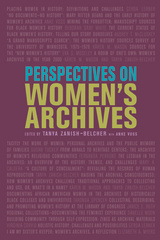 Perspectives on Women's Archives
All rights reserved. No part of this publication may be reproduced, stored in a retrieval system, or transmitted in any form or by any means without prior permission from the publisher.
Society of American Archivists, 2013 The Past, Present, and Future of Women’s Archives
Women’s archives hold a significant place in the historical record, illuminating stories of individuals who had an impact on our past in both powerful and quiet ways. The history of the archives themselves—and the struggle to achieve equal representation within the historical record—also tell a valuable story, one that deftly examines American culture and society over the past few centuries.
In PERSPECTIVES ON WOMEN'S ARCHIVES, eighteen essays written by noted archivists and historians illustrate the origins of a women-centered history, the urgent need to locate records that highlight the diverse experiences of women, and the effort to document women’s experiences. The essays also expose the need for renewed collaboration between archivists and historians, the challenges related to the accessibility of women’s collections, and the development of community archives.
Ultimately, archival relevancy is reinforced, not diminished, by sharing resources and exposing absences. PERSPECTIVES ON WOMEN'S ARCHIVES inspires new thinking about the value of women’s archives and how to fill the gaps in our recordkeeping to move toward a more diverse and inclusive future.
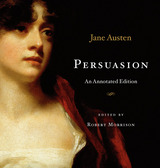 Persuasion: An Annotated Edition
Jane Austen
Harvard University Press, 2011 “Jane Austen lovers worldwide will cherish these books...Prepare yourself for a major treat.”
—Christian Science Monitor
Let us never underestimate the power of a well-written book.
Persuasion, Jane Austen’s final novel, was published posthumously in 1817. The story of Anne Elliot and Captain Wentworth’s once-abandoned, never-forgotten romance has enchanted readers ever since. How long can two people in love withstand their feelings? Experience their enduring love anew with this extraordinary, annotated edition.
For beginners and experts alike—immerse yourself in Jane Austen’s world: For the modern reader, our insightful and illuminating annotations provide clear explanations and context for period language and references. For the enthusiast, they offer fresh, exciting analysis—a passionate friend in the margins.
A work of art—the ideal gift: Perfect for gifting, collecting, and cherishing, this grand hardcover (9” x 9.5”) brims with hundreds of full-color illustrations that vividly recreate Austen’s world—its fashions, carriages, libraries, and estates.
The story: “You pierce my soul. I am half agony, half hope...I have loved none but you.” When Anne Elliot was nineteen, she fell in love with the ambitious naval officer Frederick Wentworth; the pair were quickly engaged. As the daughter of a baronet, however, Anne was persuaded by her family to end the imprudent relationship. Now, seven years later, Sir Walter Elliot’s lavish spending has jeopardized the family fortune, while Wentworth has risen through the ranks to become a wealthy and distinguished captain. When fate brings them together again, their feelings are unchanged—but will they reconcile?
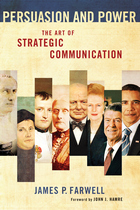 Persuasion and Power: The Art of Strategic Communication
James P. Farwell. Foreword by John J. Hamre
Georgetown University Press, 2012 Now more than ever, in the arenas of national security, diplomacy, and military operations, effective communication strategy is of paramount importance. A 24/7 television, radio, and Internet news cycle paired with an explosion in social media demands it. According to James P. Farwell, an expert in communication strategy and cyber war who has advised the U.S. SPECIAL OPERATIONS COMMAND and the Department of Defense, and worked nationally and internationally as a media and political consultant, this book examines how colorful figures in history from Julius Caesar to Winston Churchill, Napoleon to Hugo Chavez, Martin Luther to Barack Obama and Ronald Reagan, have forged communication strategies to influence audiences. Mark Twain said that history doesn't repeat itself, but rhymes. In showing how major leaders have moved audiences, Farwell bears out Twain's thesis. Obama and Luther each wanted to reach a mass audience. Obama used social media and the Internet. Luther used the printing press. But the strategic mindset was similar. Hugo Chavez identifies with Simon Bolivar, but his attitude towards the media more closely echoes Napoleon. Caesar used coins to build his image in ways that echo the modern use of campaign buttons. His "triumphs," enormous parades to celebrate military victories, celebrated his achievements and aimed to impress the populace with his power and greatness. Adolph Hitler employed a similar tactic with his torchlight parades. The book shows how the US government's approach to strategic communication has been misguided. It offers a colorful, incisive critical evaluation of the concepts, doctrines, and activities that the US Department of Defense and Department of State employ for psychological operations, military information support operations, propaganda, and public diplomacy. Persuasion and Power is a book about the art of communication strategy, how it is used, where, and why. Farwell's adroit use of vivid examples produce a well-researched, entertaining story that illustrates how its principles have made a critical difference throughout history in the outcomes of crises, conflicts, politics, and diplomacy across different cultures and societies.
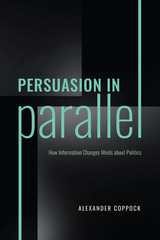 Persuasion in Parallel: How Information Changes Minds about Politics
Alexander Coppock
University of Chicago Press, 2022 A bold re-examination of how political attitudes change in response to information.
Many mistakenly believe that it is fruitless to try to persuade those who disagree with them about politics. However, Persuasion in Parallel shows that individuals do, in fact, change their minds in response to information, with partisans on either side of the political aisle updating their views roughly in parallel. This book challenges the dominant view that persuasive information can often backfire because people are supposedly motivated to reason against information they dislike. Drawing on evidence from a series of randomized controlled trials, the book shows that the backfire response is rare to nonexistent. Instead, it shows that most everyone updates in the direction of information, at least a little bit. The political upshot of this work is that the other side is not lost. Even messages we don't like can move us in the right direction.
Persuasions Of Fall
Ann Lauinger
University of Utah Press, 2004 The Agha Shahid Ali Prize in Poetry was inaugurated in 2003 to honor the late poet, a nationally recognized author of numerous collections of poetry and a former professor at the University of Utah, and is sponsored by the University of Utah Press and the University of Utah Department of English. In Persuasion of Fall, the first prizewinning volume of the annual competition, Ann Lauinger celebrates the quotidian in ways that are wise, uncompromising, and sometimes sly in their playfulness.
Persuasions of the Witch’s Craft: Ritual Magic in Contemporary England
T. M. Luhrmann
Harvard University Press, 1989 To find out why reasonable people are drawn to the seemingly bizarre practices of magic and witchcraft, Tanya Luhrmann immersed herself in the secret lives of Londoners who call themselves magicians. She came to know them as friends and equals and was initiated into various covens and magical groups. She explains the process through which once-skeptical individuals—educated, middle-class people, frequently of high intelligence—become committed to the ideas behind witchcraft and find magical ritual so compellingly persuasive. This intriguing book draws some disturbing conclusions about the ambivalence of belief within modern urban society.
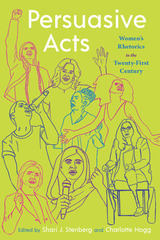 Persuasive Acts: Women's Rhetorics in the Twenty-First Century
Shari Stenberg and Charlotte Hogg
University of Pittsburgh Press, 2020 In June 2015, Bree Newsome scaled the flagpole in front of South Carolina’s state capitol and removed the Confederate flag. The following month, the Confederate flag was permanently removed from the state capitol. Newsome is a compelling example of a twenty-first-century woman rhetor, along with bloggers, writers, politicians, activists, artists, and everyday social media users, who give new meaning to Aristotle’s ubiquitous definition of rhetoric as the discovery of the “available means of persuasion.” Women’s persuasive acts from the first two decades of the twenty-first century include new technologies and repurposed old ones, engaged not only to persuade, but also to tell their stories, to sponsor change, and to challenge cultural forces that repress and oppress.
Persuasive Acts: Women’s Rhetorics in the Twenty-First Century gathers an expansive array of voices and texts from well-known figures including Hillary Rodham Clinton, Malala Yousafzai, Michelle Obama, Lindy West, Sonia Sotomayor, and Chimamanda Ngozi Adichie, so that readers may converse with them, and build rhetorics of their own. Editors Shari J. Stenberg and Charlotte Hogg have complied timely and provocative rhetorics that represent critical issues and rhetorical affordances of the twenty-first century.
The Persuasive Agency of Objects and Practices in Alfred the Great’s Reform Program
Georgina Pitt
Arc Humanities Press, 2024 Alfred the Great's early English kingdom was the only one to resist Viking conquest. His reform program strengthened the kingdom and enabled it to hold fast against the Vikings. But texts are largely silent on the process of reform. There has been a tendency to assume that these reforms would obviously be beneficial, but Alfred’s elites were not to know that in advance. What motivated them to do as their king bid them? This book analyzes how objects and behaviours shaped aristocratic response to the reform program, using assemblage theory and social practice theory. The Alfred Jewel (as shown on the cover) exercised a powerful persuasive agency in Alfredian reform. Broadening the frame of inquiry beyond textual evidence, giving objects and behaviours their due, permits a richer and more nuanced understanding.
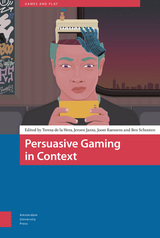 Persuasive Gaming in Context
Teresa de La Hera
Amsterdam University Press, 2021 The rapid developments in new communication technologies have facilitated the popularization of digital games, which has translated into an exponential growth of the game industry in recent decades. The ubiquitous presence of digital games has resulted in an expansion of the applications of these games from mere entertainment purposes to a great variety of serious purposes. In this edited volume, we narrow the scope of attention by focusing on what game theorist Ian Bogost has called 'persuasive games', that is, gaming practices that combine the dissemination of information with attempts to engage players in particular attitudes and behaviors.
This volume offers a multifaceted reflection on persuasive gaming, that is, on the process of these particular games being played by players. The purpose is to better understand when and how digital games can be used for persuasion by further exploring persuasive games and some other kinds of persuasive playful interaction as well. The book critically integrates what has been accomplished in separate research traditions to offer a multidisciplinary approach to understanding persuasive gaming that is closely linked to developments in the industry by including the exploration of relevant case studies.
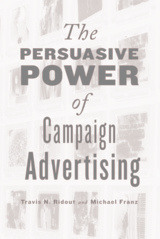 The Persuasive Power of Campaign Advertising
Authored by Travis N. Ridout and Michael M. Franz
Temple University Press, 2011 The Persuasive Power of Campaign Advertising offers a comprehensive overview of political advertisements and their changing role in the Internet age. Travis Ridout and Michael Franz examine how these ads function in various kinds of campaigns and how voters are influenced by them.
The authors particularly study where ads are placed, asserting that television advertising will still be relevant despite the growth of advertising on the Internet. The authors also explore the recent phenomenon of outrageous ads that "go viral" on the web-which often leads to their replaying as television news stories, generating additional attention.
It also features the first analysis of the impact on voters of media coverage of political advertising and shows that televised political advertising continues to have widespread influence on the choices that voters make at the ballot box.
The Perturbation of O
Joseph G. Peterson
University of Iowa Press, 2025 The Perturbation of O tells the comic story of how a loser became a winner with the publication of his memoir, Gideon’s Confession, and the chaotic aftermath that the book and an encounter with Oprah Winfrey have had on two people: Gideon Anderson and Regina Blast, a woman about whom Gideon wrote intimately in his memoir.
Told mostly in a single conversation between Gideon and Regina as they sit on a spring morning drinking coffee and eating pastries, The Perturbation of O deals with concepts of fame and intimacy, and who has the right to speak about whom.
 A Perturbed System: Religion and Climate Change from the End of a World
Susannah Crockford
University of Chicago Press A moving study of how religion shapes Western climate discourse.
Our ecological system is disturbed, and with it, every other system we’ve built to inhabit it. We do not face inevitable destruction, yet many of us cannot conceive of climate change as anything but the end of the world, an apocalypse with all its biblical trappings. Why?
In A Perturbed System, anthropologist Susannah Crockford argues that we must understand the climate emergency as a spiritual crisis, a result of Christian colonialism that we (religious or not) still struggle to describe without religious language. Climate discourse in the United States and northern Europe, Crockford shows, is framed by the same theological motifs that drove extraction, including ideas about prophecy, mediation, sacrifice, original sin, cult, messiah, and apocalypse. By listening to people on the edge of the crisis, A Perturbed System reveals a world in transition, what happens when worlds end—ecologically, socially, politically, and personally—and how we might live through these endings together.
 Perturbing the Organism: The Biology of Stressful Experience
Herbert Weiner
University of Chicago Press, 1992 The concept of stress pervades modern society, with relief from it promised on everything from vitamin to vacation packages. Yet there exists no generally accepted classification of stressful experience, nor is the concept itself universally considered a valid subject for research.
This authoritative work is the first to analyze critically the entire range of research and theory on stress in animals and humans, from the earliest studies in the 1930s up to the present day. Herbert Weiner not only documents the many empirical and conceptual advances of recent years, but also supplies a new working definition and classification of stressful experience. He describes the integrated, organismic responses to stressful environmental changes, tasks, and challenges in terms of functional adaptation: the failure of these responses results in injury, ill-health, disease, and death. To examine the coordination between behavior and bodily functions, Weiner reviews current knowledge on how stressful experiences also alter biobehavioral rhythms.
Providing a useful, integrative concept of stress rooted in an understanding of the organism as an interactive communication system composed of many subsystems, Perturbing the Organism will interest a wide range of clinicians and researchers throughout the medical and behavioral sciences.
The John D. and Catherine T. MacArthur Foundation Series on Mental Health and Development
Peru and the International Monetary Fund
Thomas Scheetz
University of Pittsburgh Press, 1986 Thomas Scheetz shows that the Internationaly Monetary Fund’s approach in 1980s Peru did not addresses the roots of debt and financial crisis, but instead has instituted inadequate stopgap policies, which have caused great inequities because of incorrect or biased assumptions. He argues that policies to eliminate “excess demand” in fact harm the poor, and the support the rich.
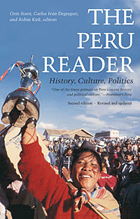 The Peru Reader: History, Culture, Politics
Orin Starn, Carlos Iván Degregori and Robin Kirk, editors
Duke University Press, 2005 Sixteenth-century Spanish soldiers described Peru as a land filled with gold and silver, a place of untold wealth. Nineteenth-century travelers wrote of soaring Andean peaks plunging into luxuriant Amazonian canyons of orchids, pythons, and jaguars. The early-twentieth-century American adventurer Hiram Bingham told of the raging rivers and the wild jungles he traversed on his way to rediscovering the “Lost City of the Incas,” Machu Picchu. Seventy years later, news crews from ABC and CBS traveled to Peru to report on merciless terrorists, starving peasants, and Colombian drug runners in the “white gold” rush of the coca trade. As often as not, Peru has been portrayed in broad extremes: as the land of the richest treasures, the bloodiest conquest, the most poignant ballads, and the most violent revolutionaries. This revised and updated second edition of the bestselling Peru Reader offers a deeper understanding of the complex country that lies behind these claims. Unparalleled in scope, the volume covers Peru’s history from its extraordinary pre-Columbian civilizations to its citizens’ twenty-first-century struggles to achieve dignity and justice in a multicultural nation where Andean, African, Amazonian, Asian, and European traditions meet. The collection presents a vast array of essays, folklore, historical documents, poetry, songs, short stories, autobiographical accounts, and photographs. Works by contemporary Peruvian intellectuals and politicians appear alongside accounts of those whose voices are less often heard—peasants, street vendors, maids, Amazonian Indians, and African-Peruvians. Including some of the most insightful pieces of Western journalism and scholarship about Peru, the selections provide the traveler and specialist alike with a thorough introduction to the country’s astonishing past and challenging present.
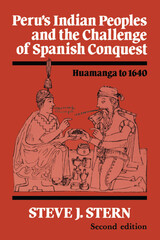 Peru's Indian Peoples and the Challenge of Spanish Conquest: Huamanga to 1640
Steve J. Stern
University of Wisconsin Press, 1993 This second edition of Peru’s Indian Peoples and the Challenge of Spanish Conquest includes Stern’s 1992 reflections on the ten years of historical interpretation that have passed since the book’s original publication—setting his analysis of Huamanga in a larger perspective. “This book is a monument to both scholarship and comprehension, comparable in its treatment of the indigenous peoples after the conquest only to that of Charles Gibson for the Aztecs, and perhaps the best volume read by this reviewer in several years.”—Frederick P. Bowser, American Historical Review “Peru’s Indian Peoples and the Challenge of Spanish Conquest is clearly indispensable reading for Andeanists and highly recommended to ethnohistorians generally. In technical respects it is a job done right, and conceptually it stands out as a handsome example of anthropology and history woven into one tight fabric of inquiry.”—Frank Salomon, Ethnohistory
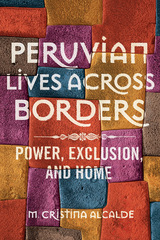 Peruvian Lives across Borders: Power, Exclusion, and Home
M. Cristina Alcalde
University of Illinois Press, 2018 In Peruvian Lives across Borders, M. Cristina Alcalde examines the evolution of belonging and the making of home among middle- and upper-class Peruvians in Peru, the United States, Canada, and Germany. Alcalde draws on interviews, surveys, participant observation, and textual analysis to argue that to belong is to exclude. To that end, transnational Peruvians engage in both subtle and direct policing along the borders of belonging. These acts allow them to claim and maintain the social status they enjoyed in their homeland even as they profess their openness and tolerance. Alcalde details these processes and their origins in Peru's gender, racial, and class hierarchies. As she shows, the idea of return—whether desired or rejected, imagined or physical—spurs constructions of Peruvianness, belonging, and home. Deeply researched and theoretically daring, Peruvian Lives across Borders answers fascinating questions about an understudied group of migrants.
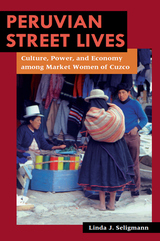 Peruvian Street Lives: Culture, Power, and Economy among Market Women of Cuzco
Linda J. Seligmann
University of Illinois Press, 2004 For more than twenty years, Linda J. Seligmann walked the streets of Peru in city and countryside alike, talking to the women who work in the informal and open-air markets in Cuzco's Andean highlands. Her combination of ethnographic analysis, insightful and human vignettes, and superb photographs offers a humane yet incisive portrait of the women's lives against the backdrop of globalization and other powerful forces. In Peruvian Street Lives, Seligmann argues that the sometimes invisible and informal economic, social, and political networks market women establish may appear disorderly and chaotic, but in fact often keep dysfunctional economies and corrupt bureaucracies from utterly destroying the ability of citizens to survive from day to day. Seligmann asks why the constructive efforts of market women to make a living provoke such negative social perceptions from some members of Peruvian society, who see them as symbols and actual catalysts of social disorder. At the same time, Seligmann shows how market women eke out a living, combat discrimination, and transgress racial and gender ideologies within the rich and expressive cultural traditions they have developed.
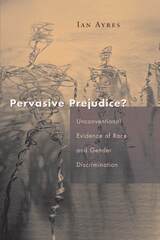 Pervasive Prejudice?: Unconventional Evidence of Race and Gender Discrimination
Ian Ayres
University of Chicago Press, 2001 If you're a woman and you shop for a new car, will you really get the best deal? If you're a man, will you fare better? If you're a black man waiting to receive an organ transplant, will you have to wait longer than a white man?
In Pervasive Prejudice? Ian Ayres confronts these questions and more. In a series of important studies he finds overwhelming evidence that in a variety of markets—retail car sales, bail bonding, kidney transplantation, and FCC licensing—blacks and females are consistently at a disadvantage. For example, when Ayres sent out agents of different races and genders posing as potential buyers to more than 200 car dealerships in Chicago, he found that dealers regularly charged blacks and women more than they charged white men. Other tests revealed that it is commonly more difficult for blacks than whites to receive a kidney transplant because of federal regulations. Moreover, Ayres found that minority male defendants are frequently required to post higher bail bonds than their Caucasian counterparts.
Traditional economic theory predicts that free markets should drive out discrimination, but Ayres's startling findings challenge that position. Along with empirical research, Ayres offers game—theoretic and other economic methodologies to show how prejudice can enter the bargaining process even when participants are supposedly acting as rational economic agents. He also responds to critics of his previously published studies included here. These studies suggest that race and gender discrimination is neither a thing of the past nor merely limited to the handful of markets that have been the traditional focus of civil rights laws.
 Perverse Attachments: Reading Fiction Around 1800
Anastasia Eccles
University of Chicago Press This new theory of reader response describes “perverse attachment,” or the powerful desire to intervene in a story, even when it is impossible to do so.
Fiction has long inspired resistance in its readers: making them, for example, wish for a different plot, cringe at a moment of social discomfort, or want to warn a character about an approaching calamity. These are symptoms of a condition that Anastasia Eccles calls “perverse attachment,” in which a person feels a strong desire to act on something beyond their control. Eccles theorizes this form of frustrated agency as a constitutive aspect of the experience of reading fiction, especially as it developed under the long influence of literary sentimentalism in the late eighteenth and early nineteenth centuries. It was also, significantly, a defining condition of the mass politics that emerged in the same period, which rested on the demands of new political subjects to participate in a process that excluded them.
Perverse Attachments recovers a repertoire of aesthetic responses keyed to the psychodynamics of modern political life: complicity, suspense, historical regret, and cringing. Combining identification and disidentification, immersion and detachment, these experiences challenge deep-seated binaries in our theories of reading and point toward a new account of the political stakes of literary form.
Through readings of works by Charlotte Smith, Walter Scott, Jane Austen, and others Eccles shows how this distinctive aesthetic and political relation shaped the major genres of Romantic fiction and gave rise to some of the novel’s characteristic forms, like the character type of the witness-protagonist and the techniques of free indirect discourse. The result is a major work in the theory of the novel and the history of readerly experience.
 A Perverse History of the Human Heart
Milad Doueihi
Harvard University Press, 1997 The seat of the soul, the center of legends, the pulsing middle of cults and cultural taboos: the heart has a history as long and complex, and often as sordid, as that of the secret life it once signified. And this is the history that Milad Doueihi tells in a book that follows the adventures of the human heart through custom, legend, religion, and literature from antiquity to early modern times.
Most prominent, and macabre, in this history is the account of the eaten heart, beginning with the myth of Dionysos, who was kidnapped and devoured by the Titans. Doueihi shows us, from the Middle Ages through the seventeenth century, strange tales combining a cuisine of the macabre with the devotion of the lover, in which a jealous husband serves his unwitting wife the heart of her murdered lover. Beyond the tensions of courtly love, manifest in the Lai d'Ignaure, the Roman du Chatelain du Coucy, and works by Dante and Boccaccio, Doueihi evokes the image of the devoured heart invoked in Francis Bacon's Essay on Friendship.
Not to be outdone by literature and legend, religion, particularly in the theology of the Sacred Heart, takes its place in this story, exerting its influence on the legend of the eaten heart, with stories of perverse consumption coming to be explained in terms of the mystery of the Eucharist, the magical and mystical consumption of the body of Christ. Finally, with the discovery of physiology and the emerging science of blood circulation, the heart loses its symbolic place--though Doueihi leaves us with the possible marriage of mysticism and science that Pascal's descriptions of intuitive intelligence open up for the heart.
 Perverse Subsidies: How Misused Tax Dollars Harm The Environment And The Economy
Norman Myers and Jennifer Kent
Island Press, 2001 Much of the global economy depends upon large-scale government intervention in the form of subsidies, both direct and indirect, to support specific industries or economic sectors. Distressingly, many of these subsidies can be characterized as “perverse” -- rather than helping society achieve a desired goal, they work in the opposite direction, causing damage to both our economies and our environments. Worldwide subsidies have long been thought to total $2 trillion per year, but until now, no attempt has been made to determine what proportion of that actually subverts the public interest.In Perverse Subsidies, leading environmental analyst Norman Myers takes a detailed look at the subject, offering a comprehensive view of subsidies worldwide with a particular focus on the extent, causes, and consequences of perverse subsidies. He defines many different kinds of subsidies, from tax incentives to government handouts, and considers their wide-ranging impacts, as he: examines the role of subsidies in policymaking quantifies the direct costs of perverse subsidies examines the major subsidies in agriculture, energy, road transportation, water, fisheries, and forestry considers the environmental effects of those subsidies offers policy advice and specific recommendations for eliminating harmful subsidies .The book provides a valuable framework for evaluation of perverse subsidies, and offers a dramatic illustration of the scale and dimensions of the problem. It will be the standard reference on those subsidies for government reform advocates, policy analysts, and environmentalists, as well as for scholars and students interested in the interactions between policymaking and environmental issues.
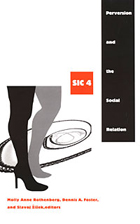 Perversion and the Social Relation: sic IV
Molly Anne Rothenberg, Dennis A. Foster and Slavoj Zizek, eds.
Duke University Press, 2003 The masochist, the voyeur, the sadist, the sodomite, the fetishist, the pedophile, and the necrophiliac all expose hidden but essential elements of the social relation. Arguing that the concept of perversion, usually stigmatized, ought rather to be understood as a necessary stage in the development of all non-psychotic subjects, the essays in Perversion and the Social Relation consider the usefulness of the category of the perverse for exploring how social relations are formed, maintained, and transformed. By focusing on perversion as a psychic structure rather than as aberrant behavior, the contributors provide an alternative to models of social interpretation based on classical Oedipal models of maturation and desire. At the same time, they critique claims that the perverse is necessarily subversive or liberating. In their lucid introduction, the editors explain that while fixation at the stage of the perverse can result in considerable suffering for the individual and others, perversion motivates social relations by providing pleasure and fulfilling the psychological need to put something in the place of the Father. The contributors draw on a variety of psychoanalytic perspectives—Freudian and Lacanian—as well as anthropology, history, literature, and film. From Slavoj Žižek's meditation on “the politics of masochism” in David Fincher's movie Fight Club through readings of works including William Styron's The Confessions of Nat Turner, Don DeLillo’s White Noise, and William Burroughs's Cities of the Red Night, the essays collected here illuminate perversion's necessary role in social relations.
Contributors. Michael P. Bibler, Dennis A. Foster, Bruce Fink, Octave Mannoni, E. L. McCallum, James Penney, Molly Anne Rothenberg, Nina Schwartz, Slavoj Žižek
 The Perversion of Autonomy: Coercion and Constraints in a Liberal Society, Revised and Expanded Edition
Willard Gaylin and Bruce Jennings
Georgetown University Press, 2003 Modern psychological and political theory meet head-on in this powerful re-evaluation of America's contradictory and sometimes dangerous addiction to individualism. Best-selling author Gaylin and co-author Jennings investigate the contentious intersections of interdependence and autonomy, rights and public responsibility. They examine the painful abrasion occurring between America's tradition of personal freedom and privacy, as it rubs against the still valuable if almost vanishing ideals of sacrifice and social order. Our current culture of autonomy—championed by both liberals on the left and libertarians on the right—is based on the idea of rationality as the motivation for human conduct. But, as the authors remind us, people are not simply rational creatures—appeals to emotions are always far more effective than logical argument in changing our behavior. This timely edition includes a new preface; updated examples and illustrations throughout; and new coverage of contemporary social critics and their work since the publication of the first edition. Two essential new chapters, one on the movement to forgo life-sustaining treatment and the other on physician-assisted suicide, particularly clarify the authors' arguments. Drawing on these and numerous other illustrations—with significant emphasis on the state of American health care—Gaylin and Jennings demonstrate that society has not just the right but the duty to occasionally invoke fear, shame, and guilt in order to motivate humane behavior. As cases of AIDS are once again on the upswing, as the dangerously mentally ill are allowed to wander free and untreated, as starvation and poverty still hold too many in its grip in the richest nation on the planet, this controversial book, considerably revised and expanded, is needed more than ever. If we are to indeed preserve and nurture a genuinely free—and liberal—society, the authors suggest that these "coercions" may be essential for the health and the maturity of a nation where we all too often avert our eyes, not seeing that our neighbor is in pain or trouble and needs our help.
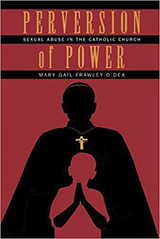 Perversion of Power: Sexual Abuse in the Catholic Church
Mary Gail Frawley-O'Dea
Vanderbilt University Press, 2007 Since 2002, the Roman Catholic Church has been in crisis over the sexual abuse of minors by priests and the cover-up of those crimes by bishops. Over 11,000 alleged victims have reported their experiences to the Church, and more than 4,700 priests since 1950 have been credibly accused of sexually victimizing minors. The Church has paid over one billion dollars to adults who claim to have been sexually abused by priests and there is no end in sight to these lawsuits. Celibacy, homosexuality in the priesthood, the infiltration into the priesthood of secular moral relativism, too much liberalism in the Church since Vatican II, damaging rollback of Vatican II reforms by conservative prelates--all have been suggested as causes for the crisis. This book, however, begins with the premise that, because the pattern of abuse and cover-up was so similar across the world, there is something fundamentally awry with Church traditions and power structures in relationship to sexuality and sexual abuse. Specifically, in chapters on suffering and sadomasochism, bodies and gender, desire and sexuality, celibacy and homosexuality, the author concludes that aspects of the Catholic theology of sexuality set the stage for the abuse of minors and its cover-up. Frawley-O'Dea also analyzes the American bishops' lack of pastoral care and tendency towards clerical narcissism--the belief that the needs of the hierarchy represent the needs of the wider Church--as central factors in the scandal. She balances this criticism with a discussion of the backgrounds of the bishops presiding over the crisis and the challenges they faced in their relationships with the Pope and Vatican officials. Drawing on twenty years of clinical experience, she imagines the dynamics of sexual abuse both from the victim's point of view and from the priest's, and she probes why the Church hierarchy, fellow priests, and lay people were silent for so long. Finally, Frawley-O'Dea examines factors internal to the Church and outside of it that drew this scandal into the public square and kept it there.
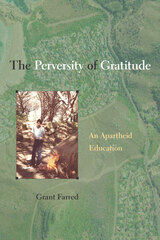 The Perversity of Gratitude: An Apartheid Education
Farred, Grant
Temple University Press, 2024 Apartheid, ironically, provided Grant Farred with the optimal conditions for thinking. He describes South Africa’s apartheid regime as an intellectual force that, “Made thinking apartheid, more than anything else, an absolute necessity.” The Perversity of Gratitude is a provocative book in which Farred reflects on an upbringing resisting apartheid. Although he is still inclined to struggle viscerally against apartheid, he acknowledges, “It is me.”
Unsentimental about his education, Farred’s critique recognizes the impact of four exceptional teachers—all engaging pedagogical figures who cultivated a great sense of possibility in how thinking could be learned through a disenfranchised South African education.
The Perversity of Gratitude brings to bear the work of influential philosophers such as Martin Heidegger and Jacques Derrida. The book tackles broad philosophical concepts—transgression, withdrawal, and the dialectic. This leads to the creation of a new concept, “the diaspora-in-place,” which Farred explains, “is having left a place before one physically removes oneself from this place.”
Farred’s apartheid education in South Africa instilled in him a lifelong commitment to learning thinking. “And for that I am grateful,” Farred writes in The Perversity of Gratitude. His autopoiesis is sure to provoke and inspire readers.
 The Perversity of Things: Hugo Gernsback on Media, Tinkering, and Scientifiction
Hugo Gernsback
University of Minnesota Press, 2016 In 1905, a young Jewish immigrant from Luxembourg founded an electrical supply shop in New York. This inventor, writer, and publisher Hugo Gernsback would later become famous for launching the first science fiction magazine, Amazing Stories, in 1926. But while science fiction’s annual Hugo Awards were named in his honor, there has been surprisingly little understanding of how the genre began among a community of tinkerers all drawn to Gernsback’s vision of comprehending the future of media through making. In The Perversity of Things, Grant Wythoff makes available texts by Hugo Gernsback that were foundational both for science fiction and the emergence of media studies. Wythoff argues that Gernsback developed a means of describing and assessing the cultural impact of emerging media long before media studies became an academic discipline. From editorials and blueprints to media histories, critical essays, and short fiction, Wythoff has collected a wide range of Gernsback’s writings that have been out of print since their magazine debut in the early 1900s. These articles cover such topics as television; the regulation of wireless/radio; war and technology; speculative futures; media-archaeological curiosities like the dynamophone and hypnobioscope; and more. All together, this collection shows how Gernsback’s publications evolved from an electrical parts catalog to a full-fledged literary genre. The Perversity of Things aims to reverse the widespread misunderstanding of Gernsback within the history of science fiction criticism. Through painstaking research and extensive annotations and commentary, Wythoff reintroduces us to Gernsback and the origins of science fiction.
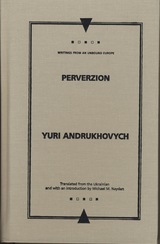 Perverzion
Yuri Andrukhovych
Northwestern University Press, 2005 What was the fate of Stanislav Perfetsky—poet, provocateur, and hero of Ukrainian underground culture? Evidence points to suicide. But some whisper murder. Some suggest the grand Eastern European tradition of coerced suicide. It may even be related to the religious cult ceremony he happened upon in Munich . . . or that job as a dancer in a strip club for older women.
Or, then again, it may not.
Perverzion constructs Perfetsky's final days using a mishmash of relics, from official documents to recorded interviews to scraps of paper. Perfetsky, the personification of the Ukrainian artistic superman—he used his masterful musicianship in a collaboration with Elton John during the pop star's secret sojourn in Ukraine—is bound for Venice to participate in a seminar to save the world from absurdity. On the way he becomes a Ukrainian Orpheus descending into the decadence of the West, navigating through surrealistic adventures and no less surrealistic seminar topics as he charges head up (and pants down) toward his fate.
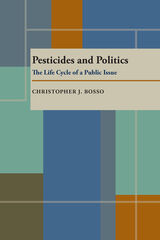 Pesticides And Politics: The Life Cycle of a Public Issue
Christopher J. Bosso
University of Pittsburgh Press, 1988
Winner of the 1988 Policy Studies Organization Book Award
Among the more dramatic changes brought by World War II was the widespread introduction of new synthetic chemical pesticides - products welcomed as technological answers to a whole host of agricultural problems. The dangers posed by these products were often ignored in the rush to get them onto the market. Federal policy primarily reflected the interests of those promoting the new technologies. The risks associated with pesticides, as yet ill-understood, continued to be played down during the 1950s, despite their sudden emergence as a public problem as a result of health scares and fish and wildlife deaths following massive pest eradication campaigns. These events, together with the publication of Rachel Carson’s Silent Spring, spawned the environmental movement of the 1960s.
Dramatic changes came in the early 1970s as environmental values permeated the institutions and dynamics of American politics. Such changes produced new priorities, and - in part - a redirection in federal policy on chemical pesticides. The National Environmental Policy Act, the creation of the Environmental Protection Agency, congressional reforms, and broad popular support opened opportunities for those seeking to alter pesticides policy. But by the mid-1980s, after more than a decade of conflict, that policy is in limbo, caught between powerful environmental, economic, and political forces.
How did this happen?
Pesticides and Politics traces the long battle over control of pesticides through an analytical framework that is at the same time historical, comparative, and theoretical. Christopher J. Bosso’s account analyzes the responses to this complex problem by commercial interests, government, the media, and the public, and shows how the issue evolved over forty years of technological and political change.
Bosso’s research leads to a number of insights about the U.S. structure of governance. It shows how the system itself determines who gains access to decision making and who is excluded, and how conflicts are redefined as the range of interests attached to them grows. Bosso concludes that for fundamental institutional reasons, as well as political ones, federal pesticides policy lies stalled and impotent in the mid-1980s.
Relying heavily on government documents, the sizable literature on environmental politics, and interviews with relevant policy actors, Pesticides and Politics will enlighten students of the public policy process, and also be useful in courses in policy making and policy analysis.
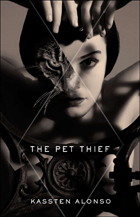 The Pet Thief
Kassten Alonso
University of Alabama Press, 2013 The Pet Thief is a dystopian fable of science, rebellion, humankind’s inhumanity, and the struggle for identity and survival in a post-human world. When scientists, the government, and venture capitalists conspire to hybridize humans with animals—cats, specifically—for organ harvesting, drug testing, and military applications, the experiment is an irredeemable failure, producing human-like beings with uncanny abilities who are nonetheless fundamentally defective.
Oboy and his mentor/tormentor Freda are two wayward hybrids, “cat people,” who have escaped with others to the depths of a rundown European city being leveled for reconstruction. They are members of a street gang led by an ominous leader called Swan.
Oboy is unable to think or speak except in mimicry, but he is a physical savant, which serves Freda’s mission. Enraged at what has been done to her, Freda wants to “rescue” every pet she can. When Oboy returns with a human baby after his first solo outing, their world and the truths of their existence come unraveled.
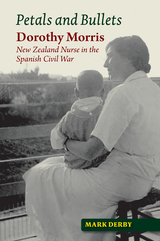 Petals and Bullets: Dorothy Morris - New Zealand Nurse in the Spanish Civil War
Mark Derby
Sussex Academic Press, 2022 "It was bright moonlight -- good bombing light -- and once we had to stop and put out our lights as a Fascist aeroplane flew over. They usually come swooping down with guns firing at cars, especially ambulances. Finally we arrived at a town among the hills about 12.30pm. Here there is a hospital of about 100 beds in a former convent. They expect an attack tonight". In these words New Zealand nurse Dorothy Morris described her journey to a Republican medical unit of the Spanish civil war in early 1937. This book is based on the vivid, detailed and evocative letters she sent from Spain and other European countries. They have been supplemented by wide-ranging research to record a life of outstanding professional dedication, resourcefulness and courage. Dorothy Aroha Morris (1904-1988) volunteered to serve with Sir George Young's University Ambulance Unit, and worked at an International Brigades base hospital and as head nurse to a renowned Catalan surgeon. She then headed a Quaker-funded children's hospital in Murcia, southern Spain. As Franco's forces advanced, she fled to France and directed Quaker relief services for tens of thousands of Spanish refugees. Nurse Morris spent the Second World War in London munitions factories, as welfare supervisor to their all-female workforces. She then joined the newly formed UN Relief and Rehabilitation Administration, working in the Middle East and Germany with those who had been displaced and made homeless and destitute as a result of the war. Dorothy Morris's remarkable and pioneering work in the fields of military medicine for civilian casualties, and large-scale humanitarian relief projects is told in this book for the first time. Published in association with the Canada Blanch Centre for Contemporary Spanish Studies.
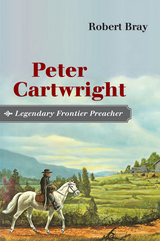 Peter Cartwright, Legendary Frontier Preacher
Robert Bray
University of Illinois Press, 2005 Believing deeply that the gospel touched every aspect of a person's life, Peter Cartwright was a man who held fast to his principles, resulting in a life of itinerant preaching and thirty years of political quarrels with Abraham Lincoln. Peter Cartwright, Legendary Frontier Preacher is the first full-length biography of this most famous of the early nineteenth-century Methodist circuit-riding preachers.
Robert Bray tells the full story of the long relationship between Cartwright and Lincoln, including their political campaigns against each other, their social antagonisms, and their radical disagreements on the Christian religion, as well as their shared views on slavery and the central fact of their being "self-made."
In addition, the biography examines in close detail Cartwright's instrumental role in Methodism's bitter "divorce" of 1844, in which the southern conferences seceded in a remarkable prefigurement of the United States a decade later. Finally, Peter Cartwright attempts to place the man in his appropriate national context: as a potent "man of words" on the frontier, a self-authorizing "legend in his own time," and, surprisingly, an enduring western literary figure.
 Peter Comestor's Lectures on the Glossed Gospel of John: A Study with a Critical Edition and Translation
Peter Comestor
Catholic University of America Press, 2023 This monograph encompasses the first critical edition, translation, and historical study of a series of lectures from the cathedral school of Notre-Dame, Peter Comestor’s Glosses on the Glossed Gospel of John. Delivered in Paris in the mid-1150s, Comestor’s expansive lecture course on the Glossa ordinaria on the Gospel of John has survived in no fewer than seventeen manuscript witnesses, being preserved in the form of continuous transcripts taken in shorthand by a student-reporter (reportationes). The editor has selected the fifteen best witnesses to produce a critical edition and translation of the first chapter of Comestor’s lectures on the Gospel of John. In addition to the text of the original lectures, the edition includes appendices containing accretions to the lecture materials added by Comestor and his students, as well as the corresponding text of the Glossa ordinaria from which Comestor lectured.
The Latin text and translation of Peter Comestor’s lectures are preceded by a wide-ranging critical study of the historical and intellectual context of Peter Comestor’s biblical teaching. This study begins with an outline of Comestor’s scholastic career and known works, with a detailed introduction to his Gospel lectures and the relevant historiography. Subsequently, a survey is made of the intellectual landscape of Comestor’s lectures: namely, the tradition of biblical teaching originating at the School of Laon, preserved in the Glossa ordinaria, and developed in the classroom by Peter Lombard and a succession of Parisian masters, notably Comestor himself. The following section examines the portion of the lectures presented in this book, encompassing an overview of its contents and structure, a description of Comestor’s teaching method and scholastic setting, a study of the text’s sources, and a consideration of Comestor’s participation and reception in the scholastic tradition. The final chapters contain a careful description of the manuscripts and editorial principles adopted in the Latin edition and translation.
 Peter Comestor's Lectures on the Gospel of Luke and its Glosses
Peter Comestor
Catholic University of America Press Through a partial critical edition and study of Peter Comestor’s lectures, this volume recontextualizes the biblical exegesis of the twelfth-century Latin cathedral schools within the frameworks of the study of ars grammatica, underscoring the importance of the master-disciple relationship in forming medieval exegetical schools of thought. This study critically examines the Latin biblical lectures of Peter Comestor, a twelfth-century scholar based in Paris, focusing on his commentary on the Gospel of Luke and its glossing tradition. The study positions Comestor’s lectures among Latin biblical commentaries produced in the cathedral schools of Laon and Paris, a vital intellectual movement shaped by well-known figures such as Anselm of Laon and Peter Lombard, and which provided the foundations for the University of Paris.
Recent scholarship has sought to bridge the gap between biblical commentaries and systematic theological treatises by highlighting the shared didactic methodologies between the medieval study of the liberal arts and sacred scripture. This study of Comestor’s Luke lectures expands these efforts, underscoring the role of classical philology and liberal arts pedagogy in shaping medieval theological thought.
The volume highlights how the cathedral school scholars of northern France approached Christian theology as a work of textual criticism, exploring a wide range of subjects—from geometry to canon law—through biblical interpretation. By tracing these intellectual traditions, the study uncovers the pedagogical practices that informed the understanding of Christian biblical exegesis in the Latin Middle Ages, particularly in the period leading up to the establishment of Europe’s first universities and theology faculties.
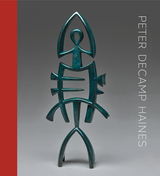 Peter DeCamp Haines: Sculpture, 1975–2024
Belinda Rathbone
The Artist Book Foundation, 2025 This book will be the first major monograph on the work of Haines’s oeuvre, which builds on the evolution of Modernism as much as it harkens back to the Bronze Age. The clearest expression of this is a series of 1,000 elemental bronze “artifacts” he has created over the course of nearly fifty years, to which he contributes yearly, ranging from palm-size to colossal outdoor works. He calls this output “a personal archaeology,” or “an archaeology of the subconscious,” referencing ancient tools, animal and human shapes, and the synchronicity of antique forms with the purely abstract.
Haines’s interest in psychology and anthropology has deeply informed his art. Working in a Modernist tradition, his career has pursued a continuing exploration of the formal attributes of sculpture: form, scale, negative space, and composition. As Haines sees it, one of the satisfactions of sculpture is that ideas such as wholeness, beauty, and timelessness can be expressed without words and one of the critical elements of this wordless communication is negative space. Thus, the doorways, windows, and silhouettes of his sculptures can suggest an area larger than the sculpture itself.
Born in 1942, Haines grew up in Ohio. He holds a Bachelor of Arts degree from the University of Colorado, Boulder, a Master of Business Administration from Harvard University, and he is a graduate of the School of the Museum of Fine Arts in Boston. He is a founding member of the Boston Sculptors Gallery and co-founder of the Vermont Gentlemen’s Foundry. His work has been shown in numerous solo and group exhibitions, and can be found in the DeCordova Museum and Sculpture Park in Concord, Massachusetts, and the Chen Yunxian Museum in Nanchang, China, among other collections in Boston, New York, and South Korea. Haines lives and works in Cambridge, Massachusetts.
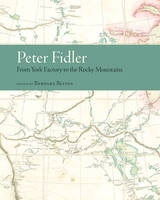 Peter Fidler: From York Factory to the Rocky Mountains
Barbara Belyea
University Press of Colorado, 2020 In 1792–93 Peter Fidler surveyed the Hudson’s Bay Company’s river and overland routes west from York Factory. He traveled with a fur brigade up the Hayes and Saskatchewan Rivers and then spent the winter months with a Piikani band who hunted buffalo in the Rocky Mountain foothills. Fidler kept precise journals that make it possible to follow the traders’ passage over a lake-strewn landscape and across the plains. The journal texts combine astronomical observations, notation of distances and directions, small sketch maps, and verbal descriptions. Peter Fidler: From York Factory to the Rocky Mountains presents two of Fidler’s survey journals edited and extensively annotated by historian Barbara Belyea from manuscripts in the Hudson’s Bay Company Archives.
The two journals—“From York Factory to Buckingham House” and “From Buckingham House to the Rocky Mountains”—detail Fidler’s travels over a period of nine months. They include remarks on fur trade history, organization of the inland brigade, three distinct geographical regions, and the daily life of a Plains nation. Belyea’s introduction and ample notes provide insight into the way geographic, specifically cartographic, information was noted in the journals, with additional information on industry trading techniques, traders’ economic decisions, broad changes in regional social and economic conditions, and interactions with indigenous peoples.
Fidler’s journals are an exceptional record of the fur trade’s western expansion and the daily life of a Plains nation at the height of its power and prosperity. With its rich analysis of primary source documents and painstaking reproduction of historical trade routes, Peter Fidler: From York Factory to the Rocky Mountains will be of great value to students and scholars in the fields of fur trade studies, cartography, travel literature, and Canadian history, as well as general readers interested in westward expansion, exploration, commerce, and indigenous-colonial relations.
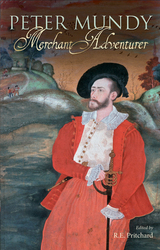 Peter Mundy, Merchant Adventurer
Edited by R. E. Pritchard
Bodleian Library Publishing, 2011 Peter Mundy was an English merchant trader of the seventeenth century who spent most of his life traveling the world, including western Europe, Poland, and Istanbul. Fueled by an insatiable curiosity about the world around him, Mundy kept a detailed account of his travels, illustrated throughout with his own lively drawings of the people and animals he encountered.
Drawing on the unique manuscript held by the Bodleian Library, Peter Mundy, Merchant Adventurer collects Mundy’s vivid accounts of the Ottoman, Mughal, Chinese, and Russian Empires, as well as his reports of the first, difficult contact between Britain and China, of exhausting journeys through famine-devastated northern India, and of the troubled times in London following the Restoration of Charles II.
Historians and lovers of travel literature will find this extraordinary account of one man’s encounters with very different, early modern cultures an invaluable resource and a compelling read.
Peter Never Came
Ashley Cowger
Autumn House Press, 2011 The characters in Ashley Cowger's short stories learn to accept the fear, the regret, and the beauty of growing up in a world where Peter Pan will never come. The lives portrayed here are firmly planted in reality, a place where dreams loom only as hope on a farway horizon.
Peter Nielsen’s Story
Niels Thorpe
University of Minnesota Press, 1949 Peter Nielsen's Story was first published in 1949. Minnesota Archive Editions uses digital technology to make long-unavailable books once again accessible, and are published unaltered from the original University of Minnesota Press editions.
Peter Weir: A Creative Journey from Australia to Hollywood
Serena Formica
Intellect Books, 2012 Peter Weir has been directing Hollywood films since his successful US debut, Witness, in 1985. But does this make him a Hollywood director? Or should he still be considered an Australian filmmaker as many scholars argue? For the first time, Weir’s entire three-decade creative journey from Australia to Hollywood is considered in light of the recent theories on transnational cinema and through a close examination of four key films: Picnic at Hanging Rock, The Year of Living Dangerously, Witness, and The Truman Show The films’ analyses integrate original interviews with Weir and his closest collaborators, including Russell Boyd. The book concludes that Weir is both an Australian and a Hollywood filmmaker—and would be better seen as a transnational filmmaker whose success in the United States reflects the fact that he was already a “Hollywood” director by the time he relocated.
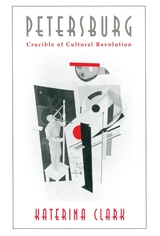 Petersburg: Crucible of Cultural Revolution
Katerina Clark
Harvard University Press, 1995 One of the most creative periods of Russian culture and the most energized period of the Revolution coincided in the fateful years 1913–1931. During this time both the Party and the intellectuals of Petersburg strove to transform backward Russia into a nation so advanced it would shine like a beacon for the rest of the world. Yet the end result was the Stalinist culture of the 1930s with its infamous purges.
In this new book, Katerina Clark does not attempt to account for such a devolution by looking at the broad political arena. Rather, she follows the quest of intellectuals through these years to embody the Revolution, a focus that casts new light on the formation of Stalinism. This revisionist work takes issue with many existing cultural histories by resisting the temptation to structure its narrative as a saga of the oppressive regime versus the benighted intellectuals. In contrast, Clark focuses on the complex negotiations between the extraordinary environment of a revolution, the utopian striving of both politicians and intellectuals, the local culture system, and that broader environment, the arena of contemporary European and American culture. In doing so, the author provides a case study in the ecology of cultural revolution, viewed through the prism of Petersburg, which on the eve of the Revolution was one of the cultural capitals of Europe. Petersburg today is in the national imagination of modern Russia, a symbol of Westernization and radical change.
Petersburg: The Physiology of a City
Thomas Gaiton Marullo
Northwestern University Press, 2009 This landmark collection of short works forms a vivid documentary of life in midnineteenth-century St. Petersburg. Editor Nikolai Nekrasov was the most influential literary entrepreneur of the day, and he assembled works ranging from ethnography to fiction to literary criticism, all written by leading authors and thinkers of the time. The book he edited represents many important strands in Russian culture and history, including the development of Russian prose and the rise of the intelligentsia. A vital political document as well, Petersburg is a record of—and served as a spur to—the changes in Russian society that culminated in the 1917 revolution. This first-ever English edition brings its storied and studied illumination to a new audience, providing a key to understanding the place that St. Petersburg holds in Russia’s identity.
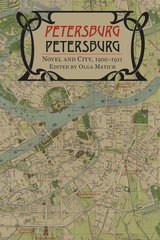 Petersburg/Petersburg: Novel and City, 1900–1921
Olga Matich
University of Wisconsin Press, 2010 Since its founding three hundred years ago, the city of Saint Petersburg has captured the imaginations of the most celebrated Russian writers, whose characters map the city by navigating its streets from the aristocratic center to the gritty outskirts. While Tsar Peter the Great planned the streetscapes of Russia’s northern capital as a contrast to the muddy and crooked streets of Moscow, Andrei Bely’s novel Petersburg (1916), a cornerstone of Russian modernism and the culmination of the “Petersburg myth” in Russian culture, takes issue with the city’s premeditated and supposedly rational character in the early twentieth century.
“Petersburg”/Petersburg studies the book and the city against and through each other. It begins with new readings of the novel—as a detective story inspired by bomb-throwing terrorists, as a representation of the aversive emotion of disgust, and as a painterly avant-garde text—stressing the novel’s phantasmagoric and apocalyptic vision of the city. Taking a cue from Petersburg’s narrator, the rest of this volume (and the companion Web site, stpetersburg.berkeley.edu/) explores the city from vantage points that have not been considered before—from its streetcars and iconic art-nouveau office buildings to the slaughterhouse on the city fringes. From poetry and terrorist memoirs, photographs and artwork, maps and guidebooks of that period, the city emerges as a living organism, a dreamworld in flux, and a junction of modernity and modernism.
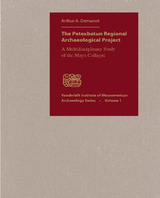 The Petexbatun Regional Archaeological Project: A Multidisciplinary Study of the Maya Collapse
Arthur A. Demarest
Vanderbilt University Press, 2006 This overview and introduction to the multi-volume Petexbatun project series describes the objectives, structure, personnel, and major findings of the seven-year multidisciplinary investigation. The previous research, issues, and problem-orientation of the project are reviewed, and an unusually frank history of the 1989-1996 field investigations is presented. Final results of the dozen Petexbatun subprojects are previewed, including summaries of site-specific studies of centers and subordinate kingdoms and the regional disciplinary subprojects exploring osteology, ecology, faunal studies, ceramics, epigraphic history, settlement patterns, defensive systems, caves, and other aspects of Classic period civilization and culture change. Then, based on the project's findings, Demarest presents interpretive reconstructions of the linked histories of the Pasion River kingdoms and correlates these interpretations with the variable evidence and culture-histories of other regions of the Classic Maya lowlands. He points out that only through linking such accurate regional culture-histories can we begin to understand the eighth- through tenth-century changes in Classic Maya civilization. The volume describes how the Petexbatun project addressed this challenge in its research design, structure, and large, multicentered zone of study. Building on the previous twenty years of Harvard research in adjacent zones, the Vanderbilt projects succeeded in reconstructing events and processes throughout the Pasion River Valley, the largest single inland trade route of the ancient Maya world. In its conclusions, this first of the Petexbatun volumes of multidisciplinary studies, evidence, analyses, and interpretations, provides answers to some long-standing questions about the "Classic Maya collapse," as well as a new, preliminary culture-history of the abandonment, decline, or transformation of the Classic Maya kingdoms of the western Peten. It is an exciting preview and summary of a decade of evidence on the debate over the fate of the Classic Maya civilization, one of the great controversies in the history of Pre-Columbian archaeology. VIMA Series #1
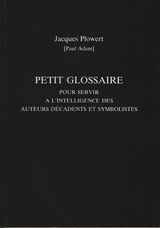 Petit Glossaire pour Servir a L'intelligence des Auteurs Decadents et Symbolistes
Jaques Plowert
University of Exeter Press, 1998
This glossary, published in 1888, is the only work of its kind produced by Decadent and Symbolist writers themselves, and is full of ‘definitions’ as mystifying as the words they claim to define. It offers both a scholarly and a humorous examination of linguistic innovation and succeeds in showing how literary language remains subtler and more alive than any of the instruments designed to explain it.
A parody of a glossary as much as a glossary proper, and produced as a response to critical accusations of obscurity and preciosity, it assembles an extraordinary array of evocative, hermetic, and often bizarre examples of Symbolist and Decadent writing, including luminaries such as Mallarmé, Rimbaud, Laforgue and Verlaine as well as such writers as Fénéon, Moréas and René Ghil.
This is a volume in the series Textes littéraries/Exeter French Texts. The text, intorudction and essential notes are all in French.
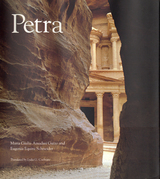 Petra
Maria Giulia Amadasi Guzzo and Eugenia Equini Schneider
University of Chicago Press, 2002 "If ever a dead city held romance it is Petra. . . . Hewn out of ruddy rock in the midst of a mountain wilderness, sumptuous in ornament and savage in environs, poised in wildness like a great carved opal glowing in a desert, this lost caravan city staggers the most experienced traveller." So wrote Rose Macaulay in her Pleasure of Ruins (1953), echoing the sentiments of generations of travelers before and since. Reached through a narrow, winding crevasse between looming cliffs in south Jordan, Petra served as the capital city of the Nabatean Arabs from the third century B.C.E to 106 C.E. (when it was occupied by the Roman emperor Trajan).
In this lavishly illustrated book, Maria Giulia Amadasi Guzzo and Eugenia Equini Schneider provide an accessible overview of the history and culture of the Nabateans, including their language, religion, politics, and economy, as well as a detailed guide to the city of Petra and its art and architecture. A major stop on the spice trade route, Petra attracted wealth and culture from across the Arabic and classical worlds and was abundantly furnished with more than 800 monuments. Perhaps the most well known of these is the Khazneh el-Faroun, or Treasury, a royal tomb more than 130 feet high with a magnificent Hellenistic facade carved from the salmon pink sandstone of the surrounding cliffs. But no less impressive were Petra's advanced achievements in hydraulic engineering, including elaborate water conservation systems and dams.
For anyone who has felt the lure and wonder of ancient cities and civilizations in exotic locations, Petra will be a delightful and invaluable resource.
 Petra and the Lost Kingdom of the Nabataeans
Jane Taylor
Harvard University Press, 2002 The Nabataean Arabs, one of the most gifted peoples of the ancient world, are today known only for their hauntingly beautiful rock-carved capital--Petra. Here, in the wild and majestic landscapes of southern Jordan, they created some of the most prodigious works of man in the vast monuments that they chiseled from the sandstone mountains. The very scale of their achievement is breathtaking, but beyond mere magnitude is their creative vision, for they transformed the living rock of Petra into an enduring architectural masterpiece.
For nearly two thousand years, their civilization has been lost and all but forgotten. Yet the Nabataeans were famous in their day--Herod the Great and his sons, and a kaleidoscope of Roman emperors, were keenly aware of their power and wealth. Often victims of Greek, Roman, or Herodian duplicity, murder, and power politics, the Nabataeans were major players in the drama of the Middle East in biblical times.
This richly illustrated volume recounts the story of a remarkable but lost civilization and the capacity of its people to diversify their skills as necessity demanded. It describes their nomadic origins, the development of their multifaceted culture, their relations with their now famous neighbors, and the demise of their kingdom. It looks at their continued, if unrecognized, survival as Christians and farmers under the Byzantine Empire and into the early years of Islam.
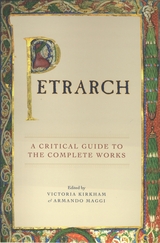 Petrarch: A Critical Guide to the Complete Works
Edited by Victoria Kirkham and Armando Maggi
University of Chicago Press, 2009 Although Francesco Petrarca (1304–74) is best known today for cementing the sonnet’s place in literary history, he was also a philosopher, historian, orator, and one of the foremost classical scholars of his age. Petrarch: A Critical Guide to the Complete Works is the only comprehensive, single-volume source to which anyone—scholar, student, or general reader—can turn for information on each of Petrarch’s works, its place in the poet’s oeuvre, and a critical exposition of its defining features. A sophisticated but accessible handbook that illuminates Petrarch’s love of classical culture, his devout Christianity, his public celebrity, and his struggle for inner peace, this encyclopedic volume covers both Petrarch’s Italian and Latin writings and the various genres in which he excelled: poem, tract, dialogue, oration, and letter. A biographical introduction and chronology anchor the book, making Petrarch an invaluable resource for specialists in Italian, comparative literature, history, classics, religious studies, the Middle Ages, and the Renaissance.
 Petrarch and Dante: Anti-Dantism, Metaphysics, Tradition
Zygmunt Baranski and Theodore J. Cachey, Jr.
University of Notre Dame Press, 2009
Since the beginnings of Italian vernacular literature, the nature of the relationship between Francesco Petrarch (1304-1374) and his predecessor Dante Alighieri (1265-1321) has remained an open and endlessly fascinating question of both literary and cultural history. In this volume nine leading scholars of Italian medieval literature and culture address this question involving the two foundational figures of Italian literature.
Through their collective reexamination of the question of who and what came between Petrarch and Dante in ideological, historiographical, and rhetorical terms, the authors explore the emergence of an anti-Dantean polemic in Petrarch's work. That stance has largely escaped scrutiny, thanks to a critical tradition that tends to minimize any suggestion of rivalry or incompatibility between them.
The authors examine Petrarch's contentious and dismissive attitude toward the literary authority of his illustrious predecessor; the dramatic shift in theological and philosophical context that occurs from Dante to Petrarch; and their respective contributions as initiators of modern literary traditions in the vernacular. Petrarch's substantive ideological dissent from Dante clearly emerges, a dissent that casts in high relief the poets' radically divergent views of the relation between the human and the divine and of humans' capacity to bridge that gap.
“An absolute A-list of contributors here considers all that falls, all forms of regard and disregard, between two of the great poets and cultural legislators of the western world. Timely, original, and highly recommended.” —David Wallace, Judith Rodin Professor, University of Pennsylvania
"A collection of sparkling essays exploring Petrarch's efforts to conceal his enormous debt to Dante while seeking to replace Dante's authority with his own. I found it hard to stop reading." —Ronald Witt, Duke University
“Petrarch and Dante is a magnificent volume of uniformly superb essays. Instead of surveying Petrarch’s variety or his influence upon later culture, the authors have ingeniously focused on shifting relationships with the poet’s most formidable Italian predecessor, Dante; in so doing, they have produced scholarship that teases out the issues with great subtlety and nuance.” —William J. Kennedy, Cornell University
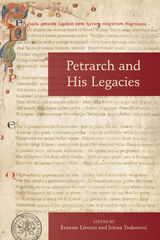 Petrarch and His Legacies
Edited by Ernesto Livorni and Jelena Todorovic
Arizona Center for Medieval and Renaissance Studies, 2021 This book gathers cutting-edge articles by prominent scholars reflecting on Petrarch’s poetry and his long legacy, from the Renaissance to the present day. The scholars engaged in this volume read Petrarch in the context of his own world and with a variety of theoretical and critical approaches, never overlooking the opportunity for an interdisciplinary reading that combines poetry and visual arts. The volume includes scholars from the United States and Europe (Italy, in particular), thus offering the opportunity to compare different theoretical approaches. The articles in the second half of the volume celebrate Petrarch’s legacies beyond the historically fundamental Renaissance Petrarchism, while exploring the presence of Petrarch’s poetry in several cultural realities. The scholars also read Petrarch with necessary attention to new disciplines such as digital humanities. The richness of the volume lies in these innovative perusals of Petrarch’s works not only through the critical lens of dedicated scholars, but also through their readings of artists who throughout the centuries appreciated and revived Petrarch’s poetry in their own literary endeavors.
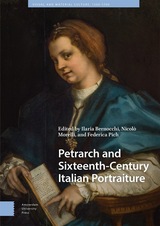 Petrarch and Sixteenth-Century Italian Portraiture
Ilaria Bernocchi
Amsterdam University Press, 2024 The volume presents a wide-ranging investigation of the ways in which Petrarch’s legacy informed the relationship between visual and literary portraits in sixteenth-century Italy. Petrarch’s vast literary production influenced the intellectual framework in which new models of representation and self-representation developed during the Renaissance. His two sonnets on Laura’s portrait by Simone Martini and his ambivalent fascination with the illusionary power of portraiture in his Latin texts — such as the Secretum, the Familiares and De remediis utriusque fortune — constituted the theoretical reference for artists and writers alike. In a century dominated by the rhetorical comparison between art and literature (ut pictura poësis) and by the paragone debate, the interplay between Petrarch’s oeuvre, Petrarchism and portraiture shaped the discourse on the relationship between the sitters’ physical image and their inner life. The volume brings together diverse interdisciplinary contributions that explore the subject through a rich body of literary and visual sources.
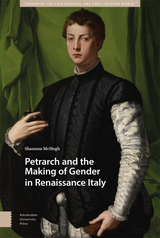 Petrarch and the Making of Gender in Renaissance Italy
Shannon McHugh
Amsterdam University Press, 2023 This book is a new history of early modern gender, told through the lyric poetry of Renaissance Italy. In the evolution of Western gender roles, the Italian Renaissance was a watershed moment, when a confluence of cultural developments disrupted centuries of Aristotelian, binary thinking. Men and women living through this upheaval exploited Petrarchism’s capacity for subjective expression and experimentation - as well as its status as the most accessible of genres - in order to imagine new gendered possibilities in realms such as marriage, war, and religion. One of the first studies to examine writing by early modern Italian men and women together, it is also a revolutionary testament to poetry’s work in the world. These poets’ works challenge the traditional boundaries drawn around lyric’s utility. They show us how poems could be sites of resistance against the pervading social order - how they are texts capable not only of recording social history, but also of shaping it.
Petrarch’s Lyric Poems: The Rime Sparse and Other Lyrics
Francesco Petrarch
Harvard University Press, 1976 For teachers and students of Petrarch, Robert M. Durling’s edition of the poems has become the standard one. Readers have praised the translation as both graceful and accurate, conveying a real understanding of what this difficult poet is saying.
The literalness of the prose translation makes this beautiful book especially useful to students who lack a full command of Italian. And students reading the verse in the original will find here an authoritative text.
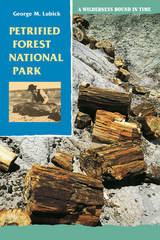 Petrified Forest National Park: A Wilderness Bound in Time
George M. Lubick
University of Arizona Press, 1996 Yellowstone, Yosemite, the Grand Canyon—a few American national parks enjoy amusement-park status, eclipsing many other beautiful and significant parks due to their heavy political support and spectacular sights. Visitors to Petrified Forest National Park in northeastern Arizona can escape from the litter, snack bars, and crowds of the recreational parks to a 200-million-year-old ecosystem locked in stone. Enhanced by the unrivaled, colorful beauty of the adjacent Painted Desert, Petrified Forest National Park has captivated visitors since the area was discovered by early explorers. The history of the huge fossilized forest parallels that of Arizona. It was discovered and looted by adventurers and largely ignored by the government until President Theodore Roosevelt made it a national monument in 1906. The forest's location along Route 66 brought a large number of visitors during the time it enjoyed only monument status, but lack of funding for protection allowed much damage and theft of fossilized wood.
Petrified Forest National Park: A Wilderness Bound in Time speeds the reader on an ancient ecological journey, from the time of dinosaurs to the discovery of their Triassic fossils and on through a century of political maneuvering to create a place for the forest in American history. George Lubick describes how a dedicated few understood the environmental importance as well as the unique beauty of the park's Triassic Chinle Formation and the Painted Desert. Nearly a million people "visit the Triassic" annually; this environmental history of the ancient forest is important for those who know the park as well as those interested in natural America. Petrified Forest National Park is one of the few complete histories of any national park, a well-told, balanced treatment of the environmental, political, and historical factors that shape America's natural history.
The Petrine Revolution in Russian Architecture
James Cracraft
University of Chicago Press, 1988 In this highly original book James Cracraft provides a major case study of the cultural revolution in Russia initiated by Peter the Great, tsar and first emperor (1682-1725). He recounts in fascinating detail how modern standards of architecture supplanted traditional norms in Russia following a massive injection of European expertise and indicates how, thereby, the modern Russian built world came into being. The first comprehensive study of the Petrine revolution in Russian architecture to be published in any language, the book includes nearly 250 illustrations, many of them original photographs appearing here for the first time.
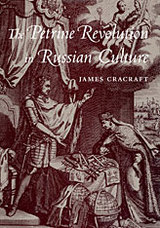 The Petrine Revolution in Russian Culture
James Cracraft
Harvard University Press, 2004 The reforms initiated by Peter the Great transformed Russia not only into a European power, but into a European culture--a shift, argues James Cracraft, that was nothing less than revolutionary. The author of seminal works on visual culture in the Petrine era, Cracraft now turns his attention to the changes that occurred in Russian verbal culture.
The forceful institutionalization of the tsar's reforms--the establishment of a navy, modernization of the army, restructuring of the government, introduction of new arts and sciences--had an enormous impact on language. Cracraft details the transmission to Russia of contemporary European naval, military, bureaucratic, legal, scientific, and literary norms and their corresponding lexical and other linguistic effects. This crucial first stage in the development of a "modern" verbal culture in Russia saw the translation and publication of a wholly unprecedented number of textbooks and treatises; the establishment of new printing presses and the introduction of a new alphabet; the compilation, for the first time, of grammars and dictionaries of Russian; and the initial standardization, in consequence, of the modern Russian literary language. Peter's creation of the St. Petersburg Academy of Sciences, the chief agency advancing these reforms, is also highlighted.
In the conclusion to his masterwork, Cracraft deftly pulls together the Petrine reforms in verbal and visual culture to portray a revolution that would have dramatic consequences for Russia, and for the world.
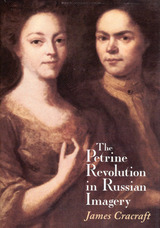 The Petrine Revolution in Russian Imagery
James Cracraft
University of Chicago Press, 1997 The Petrine Revolution in Russian Imagery is the second volume of James Cracraft's comprehensive study of the cultural revolution engineered in Russia by Peter the Great. Throughout the study, Cracraft explores how medieval Muscovey became modern Russia, and situates the Petrine revolution in Russian visual and verbal culture in its wider political, economic, and social setting.
In this second volume of the series, Cracraft considers the impact of Peter's intensive program of Europeanization on the visual arts, and shows how modern forms of imagery came into being in Russia along with allied techniques of image-making.
Drawing on a wealth of primary sources as well as numerous secondary works in Russian and other languages, Cracraft discusses the advent in Russia of painting in the Renaissance tradition, bronze and stone sculpture, and the modern graphic arts. He also discusses the decline of manuscript illumination, the rise of modern coinage, the production of new-style flags and altar cloths, and the arrival in Russia of the new cartography and the new heraldry. Cracraft draws special attention to the early history of the St. Petersburg Academy of Fine Arts, and to the impact of Peter's program on popular imagery and on the cult art of the Russian Orthodox Church. He argues in sum that the imagery of the Russian Empire can tell us as much or more about its dominant ethos and ideology as can the written texts normally studied by historians.
Like its predecessor, The Petrine Revolution in Russian Architecture, this second volume presents a highly original argument supported by numerous illustrations, many of them not previously published. It will appeal to art historians as well as to those more generally interested in European or modern history.
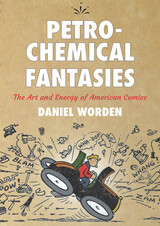 Petrochemical Fantasies: The Art and Energy of American Comics
Daniel Worden
Ohio State University Press, 2024 Finalist, Comics Studies Society Charles Hatfield Book Prize 2025
Nominee, Eisner Award for Best Academic/Scholarly Work 2025
In Petrochemical Fantasies, Daniel Worden reveals the entwined history of comics and fossil fuels in the United States. From the 1840s to the present, comics have depicted the power, pollution, and rapid expansion of energy systems—especially the explosive growth of coal and oil. In the 1930s, some of the first comic books were the gas station giveaways Gulf Funny Weekly and Standard Oil Comics. And in recent years, comics have become one of the major sites for visualizing life after oil, a striking reversal of the medium’s early boosterism.
Surveying the work of acclaimed artists such as Nell Brinkley, George Herriman, Jack Kirby, Winsor McCay, and R. F. Outcault and recovering little-known works, Worden advances a new history of American comics in the Anthropocene. From late nineteenth- and early twentieth-century editorial cartoons and superhero comics that visualize our modern energy culture to contemporary comics grappling with climate crises, Petrochemical Fantasies places comics, environmental humanities, and energy studies in conversation with each other to unearth the crucial but overlooked history of comics’ place in US energy culture.
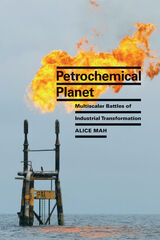 Petrochemical Planet: Multiscalar Battles of Industrial Transformation
Alice Mah
Duke University Press, 2023 In Petrochemical Planet Alice Mah examines the changing nature of the petrochemical industry as it faces the existential threats of climate change and environmental activism. Drawing on research from high-level industry meetings, petrochemical plant tours, and polluted communities, Mah juxtaposes the petrochemical industry’s destructive corporate worldviews with environmental justice struggles in the United States, China, and Europe. She argues that amid intensifying public pressures, a profound planetary industrial transformation is underway that is challenging the reigning age of plastics and fossil fuels. This challenge comes from what Mah calls multiscalar activism—a form of collective resistance that spans local, regional, national, and planetary sites and scales and addresses the interconnected issues of environmental justice, climate, pollution, health, extraction, land rights, workers’ rights, systemic racism, and toxic colonialism. Reflecting on the obstacles and openings for critical interventions in the petrochemical industry, Mah offers important insights into the possibilities for resistance and for developing alternatives to the reliance on fossil fuels.
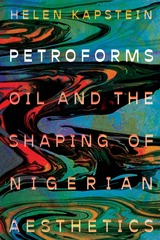 Petroforms: Oil and the Shaping of Nigerian Aesthetics
Helen Kapstein
West Virginia University Press, 2025 Petroforms contributes a much-needed theory of form and genre to the cutting-edge field of petrocriticism, itself an offshoot of developments in postcolonial ecocriticism. Studies of resource fiction and inquiries in the energy humanities have recently taken their rightful place as necessary reflections on the role of the literary imagination in intervening in the Anthropocene as we find ourselves precariously placed in the face of a fossil fuel crisis, climate change, and mass extinctions.
With Petroforms, Helen Kapstein undertakes close readings of a range of Nigerian aesthetic forms: short stories, romance novels, documentary film, the “Nollywood” film industry, fine art sculpture, and poetry. She uses these forms to argue that the demands of paying attention to petroleum extraction, production, consumption, and distribution in the creation of resource fictions must necessarily alter and affect conventional forms and structures. What results is a new set of genre-bending forms, like documentary film that we can read as horror, in response to the forceful and fluid demands of the petroleum industry and its master narrative.
Nigeria is one of the world’s largest oil-producing nations, in which that production is concentrated in the Niger Delta, resulting in a local environment that has been steadily degraded by oil spills, flares, pollution, and contamination, and a local culture shaped by false scarcity in a space of abundance, murderous politics, and escalating violence. At the same time as the Niger Delta grounds Kapstein’s argument in its own political realities and cultural responses, Nigeria’s participation in a global economy of petrodependency allows her theory of petroforms to be extended and applied more generally.
What Peter Hitchcock calls “oil’s generative law” is that it is “everywhere and obvious, it must be opaque or otherwise fantastic.” He means the coexistence of oil’s taken-for-granted qualities is something constitutive of every level of everyday life and its spectacular displays—gushers, spills, explosions. Oil’s nature, the fact that it is everywhere, unctuously oozing into every corner of everyday life, means that it constantly spills over out of our existing forms, genres, and systems, demanding accommodation. To try to contain it, we create new forms. Thus, a petroform is simultaneously reactionary (a necessary response to oil’s pressures, a by-product of the commodity itself) and resistant (an attempt at containment, at generating a retort to the very thing that shapes it). Each form figures oil and then configures and reconfigures itself in reaction to it.
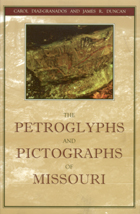 The Petroglyphs and Pictographs of Missouri
Carol Diaz-Granados
University of Alabama Press, 1999 Images on rocks depicting birds, serpents, deer, and other designs are haunting reminders of prehistoric peoples. This book documents Missouri's rich array of petroglyphs and pictographs, analyzing the many aspects of these rock carvings and paintings to show how such representations of ritual activities can enhance our understanding of Native American culture. Missouri is a particularly important site for rock art because it straddles the Plains, the Ozarks, and the Southeast. Carol Diaz-Granados and James Duncan have established a model for analyzing this rock art as archaeological data and have mapped the patterning of fifty-eight major motifs across the state. Of particular importance is their analysis of motifs from Mississippi River Valley sites, including Cahokia. The authors include interpretive discussions on iconography and ideology, drawing on years of research in the ethnographic records and literature of Native Americans linguistically related to earlier peoples. Their distribution maps show how motifs provide clues to patterns of movement among prehistoric peoples and to the range of belief systems. Rock art is an aspect of the archaeological record that has received little attention, and the art is particularly subject to the ravages of time. By documenting these fragile images, this book makes a major contribution to rock art research in North America.
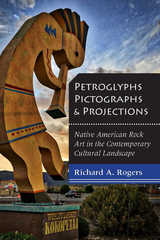 Petroglyphs, Pictographs, and Projections: Native American Rock Art in the Contemporary Cultural Landscape
Richard A. Rogers
University of Utah Press, 2018 Recent decades have seen an upsurge in visitation to rock art sites as well as an increase in commercial reproduction of rock art and attempts to understand the meaning and function of that art within the indigenous cultures that produced it. What motivates this growing interest and what do these interpretations and appropriations of Native American petroglyphs and pictographs reveal about contemporary cultural dynamics? Focusing on the southwestern U.S., this book critically examines the contemporary implications of the interpretation, appropriation, commodification, and management of indigenous rock art.
Neither archaeological interpretations nor commercial reproductions of rock art operate in a cultural vacuum. Both the motivation to seek out rock art and the specific meanings attached to it are deeply embedded in narratives about Native Americans already created by anthropologists, archaeologists, photographers, novelists, film and television producers, the tourism industry, and New Age discourse. For those interested in rock art as a window into indigenous cultures of the past, our contemporary projections of meanings are of great concern. Applying the tools of critical/cultural studies to both academic and popular discourse, Rogers explores the implications of such projections for rock art studies, contemporary gender dynamics, and the neocolonial relationship between Euro-Americans and Native Americans.
Petrograd, 1917: Witnesses to the Russian Revolution
John Pinfold
Bodleian Library Publishing, 2017 The 1917 Bolshevik Revolution irrevocably changed the course of history, with consequences still being felt a century later. This book offers a dramatic depiction of the chaotic events of the revolution, drawn from selected firsthand accounts.
Assembling extracts from letters, journals, diaries, and memoirs from a remarkably diverse cast of both Russians and foreign nationals who were there when the revolution broke, Petrograd, 1917 is a strikingly close-up account of these world-shaking events. Each entry is supplemented with a short introductory note that sets it in context, and the book is rounded out with more than seventy illustrations, including photographs of the Romanovs and the violence in the streets as well as propaganda posters, postcards to loved ones, and more. In these pages, the drama and terror of those days comes to life once more, a century on.
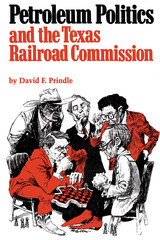 Petroleum Politics and the Texas Railroad Commission
By David F. Prindle
University of Texas Press, 1981 The single most important domestic source of oil and gas is managed by the Texas Railroad Commission. As a result, the Commission has for decades exerted a profound influence on United States and world energy policy. This influence may even increase with the recent decision to remove price controls on oil and gas. Commission decisions determine where and when oil and gas wells are drilled, how much can be produced from them, and how the products can be transported. Since the 1930s the Commission has heavily influenced both the supply and the price of petroleum in the rest of the country simply because Texas provides such a large proportion of the United States' petroleum. As might be expected with the management of resources worth billions of dollars, the Railroad Commission has been an arena of intense political maneuvering. David Prindle examines in detail seven policymaking episodes, covering five decades of the Commission's history. He recounts the economic and political cleavages arising from clashes of interest, the efforts of individuals and organizations to exert influence, the motives and methods underlying the policy choices of the Commissioners, and the political and economic consequences of those choices, both for Texas and for the rest of the country. This detailed look at the Railroad Commission and the politics of petroleum in Texas will be of interest to the general public and all those involved in the oil and gas industry. Scholars and students in the field of policy studies, especially energy policy, will find this book to be an invaluable guide to an important sector of the American petroleum industry.
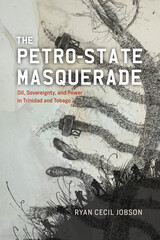 The Petro-state Masquerade: Oil, Sovereignty, and Power in Trinidad and Tobago
Ryan Cecil Jobson
University of Chicago Press, 2024 A historical and ethnographic study of the fraught relationship between fossil fuels and political power in Trinidad and Tobago.
Examining the past, present, and future of Trinidad and Tobago’s oil and gas industries, anthropologist Ryan Cecil Jobson traces how a model of governance fashioned during prior oil booms is imperiled by declining fossil fuel production and a loss of state control. Despite the twin-island nation’s increasingly volatile and vulnerable financial condition, however, government officials continue to promote it as a land of inexhaustible resources and potentially limitless profits.
The result is what Jobson calls a “masquerade of permanence” whereby Trinbagonian state actors represent the nation as an interminable reserve of hydrocarbons primed for multinational investment. In The Petro-state Masquerade, Jobson examines the gulf between this narrative crafted by the postcolonial state and the vexed realities of its dwindling petroleum-fueled aspirations. After more than a century of commercial oil production, Trinidad and Tobago instructs us to regard the petro-state as less a permanent form than a fragile relation between fossil fuels and sovereign authority. Foregrounding the concurrent masquerades of oil workers, activists, and Carnival revelers, Jobson argues that the promise of decolonization lies in the disarticulation of natural resources, capital, and political power by ordinary people in the Caribbean.
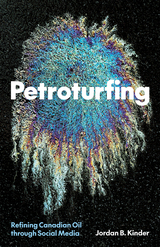 Petroturfing: Refining Canadian Oil through Social Media
Jordan B. Kinder
University of Minnesota Press, 2024 How social media has become a critical tool for advancing the interests of the Canadian oil industry
Petroturfing presents an incisive look into how Canada’s pro-oil movement has leveraged social media to rebrand the extractive economy as a positive force. Adapting its title from the concept of astroturfing, which refers to the practice of disguising political and corporate media campaigns as grassroots movements, the book exposes the consequences of this mutually informed relationship between social media and environmental politics. Since the early 2010s, an increasingly influential network of pro-oil groups, organizations, and campaigns has harnessed social media strategies originally developed by independent environmental organizations in order to undermine resistance to the fossil fuel industry. Situating these actions within the broader oil culture wars that have developed as an outgrowth of contemporary right-wing media, Petroturfing details how this coalition of groups is working to reform the public view of oil extraction as something socially, economically, and ecologically beneficial. By uncovering these concerted efforts to influence the “energy consciousness,” Jordan B. Kinder reveals the deep divide between Canada’s environmentally progressive reputation and the economic interests of its layers of government and private companies operating within its borders. Drawing attention to the structures underlying online political expression, Petroturfing highlights the limitations of social media networks in the work of promoting environmental justice and contributing to a more equitable future.
Petrushka: Sources and Contexts
Andrew Baruch Wachtel
Northwestern University Press, 1998 In this groundbreaking book, four distinguished scholars offer a detailed exploration of the ballet Petrushka, which premiered in Paris in 1911 and became one of the most important and influential theatrical works of the modernist period. The first book to study every level of a complex theatrical production, this is a work unlike any other in Russian or theater studies.
"The book is a joy to read." --Slavic Review
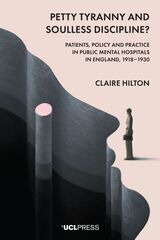 Petty Tyranny and Soulless Discipline?: Patients, Policy and Practice in Public Mental Hospitals in England, 1918–1930
Claire Hilton
University College London, 2025 The first dedicated book on public mental hospital services in England in the decade following World War I.
Petty Tyranny and Soulless Discipline? examines England’s public mental hospitals for the working class after World War I. Claire Hilton combines narratives of patients’ difficult daily lives with an analysis of competing agendas from campaigners, the government, and new medical knowledge to build a complex picture of mental health provision. Patient experiences, including their admission, care, treatment, discharge, and sometimes death, are illuminated in previously unexplored primary sources and situated within the broader context of reform and change (or lack thereof). While offering a comprehensive history of psychiatric care in early twentieth-century England, the book also draws on historical insights to reflect on contemporary mental health practices, making it relevant to historians, mental health professionals, and patients alike.
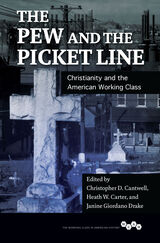 The Pew and the Picket Line: Christianity and the American Working Class
Edited by Christopher D. Cantwell, Heath W. Carter, and Janine Giordano Drake
University of Illinois Press, 2016 The Pew and the Picket Line collects works from a new generation of scholars working at the nexus where religious history and working-class history converge. Focusing on Christianity and its unique purchase in America, the contributors use in-depth local histories to illustrate how Americans male and female, rural and urban, and from a range of ethnic backgrounds dwelt in a space between the church and the shop floor. Their vivid essays show Pentecostal miners preaching prosperity while seeking miracles in the depths of the earth, while aboveground black sharecroppers and white Protestants establish credit unions to pursue a joint vision of cooperative capitalism. Innovative and essential, The Pew and the Picket Line reframes venerable debates as it maps the dynamic contours of a landscape sculpted by the powerful forces of Christianity and capitalism. Contributors: Christopher D. Cantwell, Heath W. Carter, Janine Giordano Drake, Ken Fones-Wolf, Erik Gellman, Alison Collis Greene, Brett Hendrickson, Dan McKanan, Matthew Pehl, Kerry L. Pimblott, Jarod Roll, Evelyn Sterne, and Arlene Sanchez Walsh.
 Pews, Prayers, and Participation: Religion and Civic Responsibility in America
Corwin E. Smidt, Kevin R. den Dulk, James M. Penning, Stephen V. Monsma, and Douglas L. Koopman
Georgetown University Press, 2008 Is the "private" experience of religion counterproductive to engagement in public life? Does the "public" experience of religion contribute anything distinctive to civic engagement? Pews, Prayers, and Participation offers a fresh approach to key questions about what role religion plays in fostering civic responsibility in contemporary American society. Written by five prominent scholars of religion and politics, led by Calvin College's Corwin Smidt, the book brilliantly articulates how religion shapes participation in a range of civic activities—from behaviors (such as membership in voluntary associations, volunteering, and charitable contributions) to capacities (such as civic skills and knowledge), to virtues (such as law-abidingness, tolerance, and work ethic). In the course of their study the authors examine whether an individual exhibits a diminished, a privatized, a public, or an integrated form of religious expression, based on the individual's level of participation in both the public (worship) or private (prayer) dimensions of religious life. They question whether the privatization of religious life is counterproductive to engagement in public life, and they show that religion does indeed play a significant role in fostering civic responsibility across each of its particular facets. Pews, Prayers, and Participation is a bold and provocative clarion call to the continuing importance and changing nature of religion in American public life. It will be of particular interest to students and scholars of religion and politics, and culture and politics, as well as general readers with an interest in the impact of religion in the public sphere.
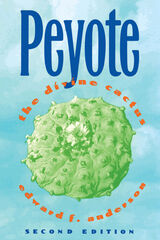 Peyote: The Divine Cactus
Edward F. Anderson
University of Arizona Press, 1996 Dry whiskey, Divine herb, Devil’s root, Medicine of God, Peyote: for some people, to use it is to hear colors and see sounds. For many Native Americans, it brings an ability to reach out of their physical lives, to communicate with the spirits, and to become complete. For chemists, pharmacologists, and psychiatrists, the plant is fascinating in its complexity and in the ways its chemicals work upon the human mind.
What is it in peyote that causes such unusual effects? Can modern medical science learn anything from Native Americans’ use of peyote in curing a wide variety of ailments? What is the Native American Church, and how do its members use peyote? Does anyone have the legal right to use drugs or controlled substances in religious ceremonies?
Within this volume are answers to these and dozens of other questions surrounding the controversial and remarkable cactus. Greatly expanded and brought up-to-date from the 1980 edition, these pages describe peyote ceremonies and the users’ experiences, and also cover the many scientific and legal aspects of using the plant. Well written, informative, comprehensive, and enlightening, the book will be welcomed by counselors, anthropologists, historians, physicians, chemists, lawyers, and observers of the contemporary drug scene, as well as by interested general readers.
Pfeiffer Country: The Tenant Farms and Business Activities of Paul Pfeiffer in Clay County, Arkansas, 1902-1954
Sherry Laymon
Butler Center for Arkansas Studies, 2009 Clay County, Arkansas, was a flatland with little improvements at the outset of the twentieth century. Into this primitive society came a St. Louis entrepreneur with a liking for agriculture. Paul Pfeiffer bought large tracts of land, set up tenant farmers, and reigned for nearly fifty years as a beneficent landlord. Laymon records the gratitude of many a family who remember with appreciation loans made to acquire equipment. When farming was interrupted by the coming of the railroad, both Pfeiffer and his tenants adapted to a lumbering economy—so long as the hardwood forest lasted. Interestingly, Laymon’s account includes the fate of tenants following the break-up of “Pfeiffer Country.”
 The Phaedo: A Platonic Labyrinth and On Plato’s Euthyphro: New Edition
Ronna Burger
St. Augustine's Press, 2023 Since antiquity the Phaedo has been considered the source of “the twin pillars of Platonism” – the theory of ideas and the immortality of the soul. Tracing the movement of the argument through the work as a whole, Burger is led to a radical rethinking of those doctrines. That movement is indicated by the structure of the dialogue, divided in two halves by a central interlude in which Socrates warns against the great danger of “misology,” loss of trust in human reason. The discussion that follows, with that danger in mind, brings about a transformation in the understanding of knowledge, the ideas, the soul, death, and immortality. With this "second sailing," as Socrates calls it, the Platonism presented in the Phaedo emerges as precisely the target of which the dialogue is a critique.
This revised and expanded edition includes a new Preface, “The Death of Socrates and the Post-Socratic Schools,” and an essay, “On Plato's Euthyphro.”
“This is a comprehensive study of the Phaedo, thoroughly researched, and sparkling with insights into the text.” – Paul Woodruff, University of Texas
“Burger has a wonderfully fertile mind and supports her imaginative thesis with a close reading, extremely sensitive to nuance.” – Jerome Schiller, The Journal of the History of Philosophy 1986
"On Plato's Euthyphro" presents a more thoughtful and careful analysis of the dialogue than any previous full-length commentary. -- Lewis Fallis, Interpretation 2016
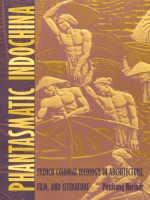 Phantasmatic Indochina: French Colonial Ideology in Architecture, Film, and Literature
Panivong Norindr
Duke University Press, 1996 This reflection on colonial culture argues for an examination of “Indochina” as a fictive and mythic construct, a phantasmatic legacy of French colonialism in Southeast Asia. Panivong Norindr uses postcolonial theory to demonstrate how French imperialism manifests itself not only through physical domination of geographic entities, but also through the colonization of the imaginary. In this careful reading of architecture, film, and literature, Norindr lays bare the processes of fantasy, desire, and nostalgia constituent of French territorial aggression against Indochina.
Analyzing the first Exposition Coloniale Internationale, held in Paris in 1931, Norindr shows how the exhibition’s display of architecture gave a vision to the colonies that justified France’s cultural prejudices, while stimulating the desire for further expansionism. He critiques the Surrealist counter-exposition mounted to oppose the imperialist aims of the Exposition Coloniale, and the Surrealist incorporation and appropriation of native artifacts in avant-garde works. According to Norindr, all serious attempts at interrogating French colonial involvement in Southeast Asia are threatened by discourse, images, representations, and myths that perpetuate the luminous aura of Indochina as a place of erotic fantasies and exotic adventures. Exploring the resilience of French nostalgia for Indochina in books and movies, the author examines work by Malraux, Duras, and Claudel, and the films Indochine, The Lover, and Dien Bien Phu.
Certain to impact across a range of disciplines, Phantasmatic Indochina will be of interest to those engaged in the study of the culture and history of Vietnam, Cambodia, Thailand, and Laos, as well as specialists in the fields of French modernism, postcolonial studies, cultural studies, and comparative literature.
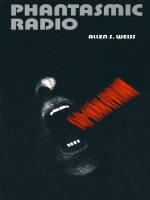 Phantasmic Radio
Allen S. Weiss
Duke University Press, 1995 The alienation of the self, the annihilation of the body, the fracturing, dispersal, and reconstruction of the disembodied voice: the themes of modernism, even of modern consciousness, occur as a matter of course in the phantasmic realm of radio. In this original work of cultural criticism, Allen S. Weiss explores the meaning of radio to the modern imagination. Weaving together cultural and technological history, aesthetic analysis, and epistemological reflection, his investigation reveals how radiophony transforms expression and, in doing so, calls into question assumptions about language and being, body and voice.
Phantasmic Radio presents a new perspective on the avant-garde radio experiments of Antonin Artaud and John Cage, and brings to light fascinating, lesser-known work by, among others, Valère Novarina, Gregory Whitehead, and Christof Migone. Weiss shows how Artaud’s "body without organs" establishes the closure of the flesh after the death of God; how Cage’s "imaginary landscapes" proffer the indissociability of techne and psyche; how Novarina reinvents the body through the word in his "theater of the ears." Going beyond the art historical context of these experiments, Weiss describes how, with their emphasis on montage and networks of transmission, they marked out the coordinates of modernism and prefigured what we now recognize as the postmodern.
 Phantom Byzantium: Europe, Empire, and Identity from Late Antiquity to World War II
Anthony Kaldellis
University of Chicago Press How the West appropriated aspects of the eastern Roman empire while portraying it as inferior.
Unveiling the ideological foundations of Byzantine studies, Phantom Byzantium is a pioneering survey of western European perceptions of the eastern Roman empire (also known as Byzantium) spanning late antiquity to World War II. Through ten chronological chapters, Anthony Kaldellis makes the case that western Europe gradually formed its identity by adopting prestigious cultural elements from the eastern empire but simultaneously portraying the east as inferior. The West modeled its Roman imperial style on Constantinople while minimizing the latter as Greek rather than Roman; appropriated a host of Christian traditions from the east while casting the east as schismatic, heretical, or treacherous; and, during the Renaissance, used classical Hellenic philology from Greek scholars before marginalizing them as unworthy bearers of that tradition. This orientalizing impulse worked to buttress western exceptionalism and resulted in the fictitious construction of “Byzantium” as Europe’s evil doppelgänger, embodying the worst versions of traditions fundamental to European identity and casting the region as despotic, superstitious, and degenerate.
Explaining the creation, history, and functions of the ideological construct of Byzantium in the western imagination and European self-fashioning, this book has critical implications for contemporary views of European history.
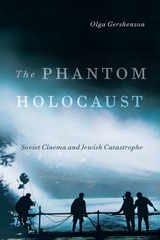 The Phantom Holocaust: Soviet Cinema and Jewish Catastrophe
Gershenson, Olga
Rutgers University Press, 2013 Even people familiar with cinema believe there is no such thing as a Soviet Holocaust film. The Phantom Holocaust tells a different story. The Soviets were actually among the first to portray these events on screens. In 1938, several films exposed Nazi anti-Semitism, and a 1945 movie depicted the mass execution of Jews in Babi Yar. Other significant pictures followed in the 1960s. But the more directly filmmakers engaged with the Holocaust, the more likely their work was to be banned by state censors. Some films were never made while others came out in such limited release that the Holocaust remained a phantom on Soviet screens.
Focusing on work by both celebrated and unknown Soviet directors and screenwriters, Olga Gershenson has written the first book about all Soviet narrative films dealing with the Holocaust from 1938 to 1991. In addition to studying the completed films, Gershenson analyzes the projects that were banned at various stages of production.
The book draws on archival research and in-depth interviews to tell the sometimes tragic and sometimes triumphant stories of filmmakers who found authentic ways to represent the Holocaust in the face of official silencing. By uncovering little known works, Gershenson makes a significant contribution to the international Holocaust filmography.
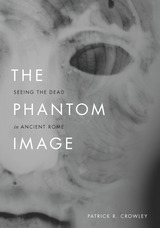 The Phantom Image: Seeing the Dead in Ancient Rome
Patrick R. Crowley
University of Chicago Press, 2019 Drawing from a rich corpus of art works, including sarcophagi, tomb paintings, and floor mosaics, Patrick R. Crowley investigates how something as insubstantial as a ghost could be made visible through the material grit of stone and paint. In this fresh and wide-ranging study, he uses the figure of the ghost to offer a new understanding of the status of the image in Roman art and visual culture. Tracing the shifting practices and debates in antiquity about the nature of vision and representation, Crowley shows how images of ghosts make visible structures of beholding and strategies of depiction. Yet the figure of the ghost simultaneously contributes to a broader conceptual history that accounts for how modalities of belief emerged and developed in antiquity. Neither illustrations of ancient beliefs in ghosts nor depictions of afterlife, these images show us something about the visual event of seeing itself. The Phantom Image offers essential insight into ancient art, visual culture, and the history of the image.
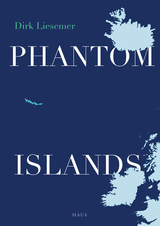 Phantom Islands: In Search of Mythical Lands
Dirk Liesemer
Haus Publishing, 2018 From the famed Atlantis to the remote Rupes Nigra, islands have long held our fascination: they are locales isolated from ordinary life, lurking in unexplored corners of the globe and thus full of undisclosed mysteries. At times, however, our fascination with islands has bled into reality, as real maps bear the coordinates of fictional lands and travelogues tell tall tales of their inhabitants, their natural wonders, or their treasures. In Phantom Islands, Dirk Liesemer tells the stories of thirty of these fantastical islands. Beginning with their supposed discovery, he recreates their fabled landscapes, the voyages that attempted to verify their existence, and, ultimately, the moment when their existence was finally disproven. Spanning oceans and centuries, these curious tales are a chronicle of human lust for discovery and wealth.
Beautifully illustrated with colored maps and charts, Phantom Islands shows the cunning of imposters and frauds, the earnestness of explorers searching for knowledge, and the pleasure that can be found in our willingness to deceive and to be deceived.
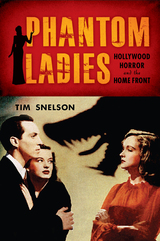 Phantom Ladies: Hollywood Horror and the Home Front
Snelson, Tim
Rutgers University Press, 2014 Defying industry logic and gender expectations, women started flocking to see horror films in the early 1940s. The departure of the young male audience and the surprise success of the film Cat People convinced studios that there was an untapped female audience for horror movies, and they adjusted their production and marketing strategies accordingly.
Phantom Ladies reveals the untold story of how the Hollywood horror film changed dramatically in the early 1940s, including both female heroines and female monsters while incorporating elements of “women’s genres” like the gothic mystery. Drawing from a wealth of newly unearthed archival material, from production records to audience surveys, Tim Snelson challenges long-held assumptions about gender and horror film viewership. Examining a wide range of classic horror movies, Snelson offers us a new appreciation of how dynamic this genre could be, as it underwent seismic shifts in a matter of months. Phantom Ladies, therefore, not only includes horror films made in the early 1940s, but also those produced immediately after the war ended, films in which the female monster was replaced by neurotic, psychotic, or hysterical women who could be cured and domesticated. Phantom Ladies is a spine-tingling, eye-opening read about gender and horror, and the complex relationship between industry and audiences in the classical Hollywood era.
 Phantom Number: An Abecedarium for April
Spring Ulmer
Tupelo Press, 2025 Poems that ask an urgent question: how might a white friend write in protest of intimate Black death without becoming complicit in the commodification of Black trauma?
Phantom Number listens for an absent voice. To survive and answer to her best friend and fellow poet April Freely’s death, Spring Ulmer rips meaning apart in her poems, then repairs it, only to rip it up again. Words bend, meaning shifts—abstraction a tool Ulmer wields to better get at the question at the heart of Phantom Number: How might a white friend write in protest of intimate Black death at a time when the push is to write Black joy as antidote to the commodification of Black trauma? Ulmer understands her position is suspect yet cannot shirk her love or rage. Ulmer asks the reader to do the work or else. Her abstracted poems vibrate, emotion emerging from a poem made rag. Ulmer’s abecedarium long form holds these fragments, inviting lines into an order of alliteration and words into an otherwise coherence, a belonging that has nothing to do with their origin. Phantom Number finds in abstraction a radical wail.
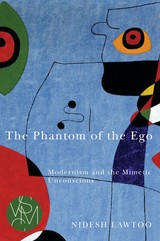 The Phantom of the Ego: Modernism and the Mimetic Unconscious
Nidesh Lawtoo
Michigan State University Press, 2013 The Phantom of the Ego is the first comparative study that shows how the modernist account of the unconscious anticipates contemporary discoveries about the importance of mimesis in the formation of subjectivity. Rather than beginning with Sigmund Freud as the father of modernism, Nidesh Lawtoo starts with Friedrich Nietzsche’s antimetaphysical diagnostic of the ego, his realization that mimetic reflexes—from sympathy to hypnosis, to contagion, to crowd behavior—move the soul, and his insistence that psychology informs philosophical reflection. Through a transdisciplinary, comparative reading of landmark modernist authors like Nietzsche, Joseph Conrad, D. H. Lawrence, and Georges Bataille, Lawtoo shows that, before being a timely empirical discovery, the “mimetic unconscious” emerged from an untimely current in literary and philosophical modernism. This book traces the psychological, ethical, political, and cultural implications of the realization that the modern ego is born out of the spirit of imitation; it is thus, strictly speaking, not an ego, but what Nietzsche calls, “a phantom of the ego.” The Phantom of the Ego opens up a Nietzschean back door to the unconscious that has mimesis rather than dreams as its via regia, and argues that the modernist account of the “mimetic unconscious” makes our understanding of the psyche new.
The Phantom of the Temple: A Judge Dee Mystery
Robert van Gulik
University of Chicago Press, 1966 A diabolically clever puzzle mystery that could only be solved by Judge Dee, a detective the Los Angeles Times ranked with Sherlock Holmes
Judge Dee presided over his imperial Chinese court with a unique brand of Confucian justice. A near mythic figure in China, he distinguished himself as a tribunal magistrate, inquisitor, and public avenger. Long after his death, accounts of his exploits were celebrated in Chinese folklore, and later immortalized by Robert van Gulik in his electrifying mysteries.
In The Phantom of the Temple, three separate puzzles—the disappearance of a wealthy merchant's daughter, twenty missing bars of gold, and a decapitated corpse—are pieced together by the clever judge to solve three murders and one complex, gruesome plot.
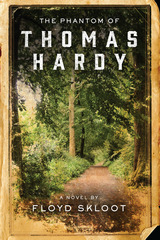 The Phantom of Thomas Hardy
Floyd Skloot
University of Wisconsin Press, 2016 On a street in Dorchester, England, there is a gateway between real and imagined lives. A plaque identifies a Barclays Bank building as “lived in by the Mayor of Casterbridge in Thomas Hardy’s story of that name written in 1885.”
In this imaginative novel, worlds continue to collide as Floyd, an American writer recovering from a devastating neuro-viral attack, and his wife, Beverly, immerse themselves in Hardy’s world. While pondering the enigma of a fictional character living in a factual building, Floyd is approached by Hardy himself—despite his death in 1928.
This phantom—possibly conjured out of Floyd’s damaged brain—tasks the Americans with finding out what Hardy missed in love. Embarking on their quest, they visit Hardy’s birthplace, home, and grave, exploring the Dorset landscape and the famous novels with their themes of tormented love. Peering into the Victorian past, they slowly dismantle the clutter of screens that Hardy placed around his private life, even as their own love story unfolds, filled with healing and hope.
The Phantom Respondents: Opinion Surveys and Political Representation
John Brehm
University of Michigan Press, 1993 Polls and surveys pervade political and social life in ways that are both conspicuous and subtle. We gauge the success of presidential aspirants by how well they score in polls broadcast on the nightly news. Our political leaders and candidates for every major office study the polls to identify the public’s preferences on controversial policies. The Phantom Respondent’s develops the simple premise that public opinion surveys and polls have become a modern vehicle for political representation, and that, therefore, we must attend to the quality of representation that surveys and polls provide.
 Phantom Signs: The Muse in Universe City
Philip Brady
University of Tennessee Press, 2019 What are the paradoxes of the writing life, especially for a writer who represents the work of other writers? Philip Brady, poet at Youngstown State University and publisher at Etruscan Press, begins Phantom Signs pondering this question from his dual perspective as a professional writer and small-press publisher. This book emerges from the tension between these modes of being in the world: the writer’s dark; the editor’s light.
With humor, grace, and intelligence, this collection of personal essays comprises a reflective memoir, offering insights into the way that art affirms and resists identity. Rather than recounting events chronologically, Brady lets the “muse” meander through discourses on childhood poems, heart surgery, basketball, Homer, and po-biz, featuring a cast of characters that range from the Sea Nymph to The Three Stooges. Throughout, Brady plays on the creative tension between poetry’s dual means of apprehension: sound and text. Fixed yet ephemeral, poems make “phantom signs.” From this viewpoint, poetry is not merely a canon or even a literary genre, but a way to reshape mind and world—and what a world: bars, hospitals, swimming pools, bandstands, publishing offices, hoops courts, prisons, mythic love trysts, and descents into the underworld, as well as classrooms from four decades on three continents.
Brady’s experiences will ring true not only for those who would peer behind the curtain into the writers’ life but also for those who wrestle with the implications of their own aging. Readers who fear that poetry is bound by anthologies, cliques, and textbooks, will be heartened. Shimmering with lyrical prose, clever wordplay, and a lifetime’s immersion in literature, Brady’s reflections on the power of the muse are essential reading.
Phantom Skies and Shifting Ground: Landscape, Culture, and Rephotography in Eadweard Muybridge's Illustrations of Central America
Byron Wolfe and Scott Brady
Temple University Press, 2017 In 1875, after being acquitted for the murder of his wife’s lover, Eadweard Muybridge spent a year photographing along the Central American Pacific Coast, particularly in Guatemala and Panamá. Upon his return to California in 1876, he published a very limited number of albums of the photographs (11 are known), each of which was unique in size and scope. In 2007, photographer Byron Wolfe (born 1967) tracked down and cataloged every known Muybridge Central American photograph. Then, with cultural geographer Scott Brady, he traveled to many of Muybridge’s sites to rephotograph them. Through photographic collage, interpretive rephotography, illustrations and essays, this book examines an exceptionally rare series by Muybridge. Also included is a catalogue of every known Muybridge Central American picture.
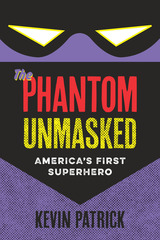 The Phantom Unmasked: America's First Superhero
Kevin Patrick
University of Iowa Press, 2017 Before Superman, before Batman, there was—the Phantom! Making its debut as an American newspaper comic strip in 1936, The Phantom was the forerunner of the comic-book superhero genre that today animates vast billion-dollar franchises spanning print, film, television, video games, and licensed merchandise. But you’ve probably never heard of it—you probably think Superman inaugurated the genre. That’s because, despite its American origins, The Phantom comic strip has enjoyed far greater popularity with international audiences, most notably in Australia, Sweden, and India, where it has appeared in newspapers, magazines, and comic books. The paradox of the character’s relative obscurity in the United States, offset by his phenomenal success in these three markedly different countries, is the subject of The Phantom Unmasked.
By tracing the publication history of The Phantom in magazines and comic books across international markets since the mid-1930s, author Kevin Patrick delves into the largely unexplored prehistory of modern media licensing industries. He also explores the interconnections between the cultural, political, economic, and historical factors that fueled the character’s international popularity. The Phantom Unmasked offers readers a nuanced study of the complex cultural flow of American comic books around the world. Equally important, to provide a rare glimpse of international comics fandom, Patrick surveyed the Phantom’s “phans”—as they call themselves—and lets them explain how and why they came to love the world’s first masked superhero.
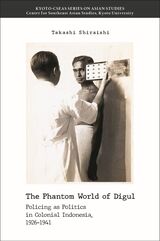 The Phantom World of Digul: Policing as Politics in Colonial Indonesia, 1926–1941
Takashi Shiraishi
National University of Singapore Press, 2020 Digul was an internment colony for political prisoners that was established in 1926 in West Papua. This book argues that Digul is the key to understanding Indonesia’s colonial governance between the failed communist rebellion of late 1926 and the declaration of independence in 1945, a time when the Dutch regime attempted to impose what they called “rust en orde,” or peace and order, on the Indonesian people via the suppression of politics by the police. The political policing regime the Dutch Indies state created, Takashi Shiraishi shows, was simultaneously a success and a failure. While unrest was to some degree put down, the native terrain was never completely pacified, as activists linked up with each other in fluid networks that cut across spatial and ideational boundaries.
How did the government deploy political policing to achieve its policy objectives? What were the consequences and challenges for Indonesian activists? How was the government able to fashion its policing apparatus as the most potent instrument to achieve peace and order when the Great Depression hit the Indies, nationalist and communist forces were gaining strength in other places of the world, and war was coming both in Europe and Asia? This book answers those questions and more, breaking new ground for our understanding of the history of the Dutch Indies state in the early part of the twentieth century.
Phantoms of the Prairie: The Return of Cougars to the Midwest
John W. Laundré
University of Wisconsin Press, 2012 Last seen in the 1880s, cougars (also known as pumas or mountain lions) are making a return to the plains regions of the Midwest. Their comeback, heralded by wildlife enthusiasts, has brought concern and questions to many. Will the people of the region make room for cougars? Can they survive the highly altered landscape of the Midwest? Is there a future for these intrepid pioneers if they head even farther east?
Using GIS technology, and historical data, among many other methods, Phantoms of the Prairie takes readers on a virtual journey, showing how the cougar might move over the landscape with minimal human contact. Drawing on his years of research on cougars, John W. Laundré offers an overview of what has been, what is, and what might be regarding the return of cougars to their ancestral prairie homeland.
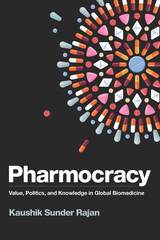 Pharmocracy: Value, Politics, and Knowledge in Global Biomedicine
Kaushik Sunder Rajan
Duke University Press, 2017 Continuing his pioneering theoretical explorations into the relationships among biosciences, the market, and political economy, Kaushik Sunder Rajan introduces the concept of pharmocracy to explain the structure and operation of the global hegemony of the multinational pharmaceutical industry. He reveals pharmocracy's logic in two case studies from contemporary India: the controversial introduction of an HPV vaccine in 2010, and the Indian Patent Office's denial of a patent for an anticancer drug in 2006 and ensuing legal battles. In each instance health was appropriated by capital and transformed from an embodied state of well-being into an abstract category made subject to capital's interests. These cases demonstrate the precarious situation in which pharmocracy places democracy, as India's accommodation of global pharmaceutical regulatory frameworks pits the interests of its citizens against those of international capital. Sunder Rajan's insights into this dynamic make clear the high stakes of pharmocracy's intersection with health, politics, and democracy.
Phase Noise in Signal Sources: Theory and applications
W.P. Robins
The Institution of Engineering and Technology, 1984 This book contains a thorough treatment of phase noise, its relationship to thermal noise and associated subjects such as frequency stability. The design of low phase noise signal sources, including oscillators and synthesisers, is explained and in many cases the measured phase noise characteristics are compared with the theoretical predictions. Full theoretical treatments are combined with physical explanations, helpful comments, examples of manufactured equipment and practical tips.
Phased-Array Radar Design: Application of radar fundamentals
Thomas W. Jeffrey
The Institution of Engineering and Technology, 2009 Phased-Array Radar Design is a text-reference designed for electrical engineering graduate students in colleges and universities as well as for corporate in-house training programs for radar design engineers, especially systems engineers and analysts who would like to gain hands-on, practical knowledge and skills in radar design fundamentals, advanced radar concepts, trade-offs for radar design and radar performance analysis.
Phase-Locked Frequency Generation and Clocking: Architectures and circuits for modern wireless and wireline systems
Woogeun Rhee
The Institution of Engineering and Technology, 2020 Phase-Locked Frequency Generation and Clocking covers essential topics and issues in current Phase-Locked Loop design, from a light touch of fundamentals to practical design aspects. Both wireless and wireline systems are considered in the design of low noise frequency generation and clocking systems. Topics covered include architecture and design, digital-intensive Phase-Locked Loops, low noise frequency generation and modulation, clock-and-data recovery, and advanced clocking and clock generation systems.
 The PhD Parenthood Trap: Caught Between Work and Family in Academia
Kerry F. Crawford and Leah C. Windsor
Georgetown University Press, 2021 What it’s really like to be a parent in the world of higher education, and how academia can make this hard climb a little less steep Academia has a big problem. For many parents—especially mothers—the idea of “work-life balance” is a work-life myth. Parents and caregivers work harder than ever to grow and thrive in their careers while juggling the additional responsibilities that accompany parenthood. Sudden disruptions and daily constraints such as breastfeeding, sick days that keep children home from school, and the sleep deprivation that plagues the early years of parenting threaten to derail careers. Some experience bias and harassment related to pregnancy or parental leave. The result is an academic Chutes and Ladders, where career advancement is nearly impossible for parents who lack access to formal or informal support systems. In The PhD Parenthood Trap, Kerry F. Crawford and Leah C. Windsor reveal the realities of raising kids, on or off the tenure track, and suggest reforms to help support parents throughout their careers. Insights from their original survey data and poignant vignettes from scholars across disciplines make it clear that universities lack understanding, uniform policies, and flexibility for family formation, hurting the career development of parent-scholars. Each chapter includes recommendations for best practices and policy changes that will help make academia an exemplar of progressive family-leave policies. Topics covered include pregnancy, adoption, miscarriage and infant loss, postpartum depression, family leave, breastfeeding, daily parenting challenges, the tenure clock, and more. The book concludes with advice to new or soon-to-be parents to help them better navigate parenthood in academia. The PhD Parenthood Trap provides scholars, academic mentors, and university administrators with empirical evidence and steps to break down personal and structural barriers between parenthood and scholarly careers.
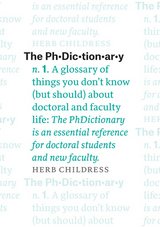 The PhDictionary: A Glossary of Things You Don't Know (but Should) about Doctoral and Faculty Life
Herb Childress
University of Chicago Press, 2016 Navigating academia can seem like a voyage through a foreign land: strange cultural rules dictate everyday interactions, new vocabulary awaits at every turn, and the feeling of being an outsider is unshakable. For students considering doctoral programs and doctoral students considering faculty life, The PhDictionary is a lighthearted companion that illuminates the often opaque customs of academic life.
With more than two decades as a doctoral student, college teacher, and administrator, Herb Childress has tripped over almost every possible misunderstood term, run up against every arcane practice, and developed strategies to deal with them all. He combines current data and personal stories into memorable definitions of 150 key phrases and concepts graduate students will need to know (or pretend to know) as they navigate their academic careers. From ABD to white paper—and with buyout, FERPA, gray literature, and soft money in between—each entry contains a helpful definition and plenty of relevant advice. Wry and knowledgeable, Childress is the perfect guide for anyone hoping to scale the ivory tower.
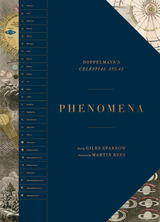 Phenomena: Doppelmayr's Celestial Atlas
Giles Sparrow
University of Chicago Press, 2022 Lavishly illustrated volume revealing the intricacies of a 1742 map of the cosmos.
The expansive and intricate Atlas Coelestis, created by Johann Doppelmayr in 1742, set out to record everything known about astronomy at the time, covering constellations, planets, moons, comets, and more, all rendered in exquisite detail. Through stunning illustrations, historical notes, and scientific explanations, Phenomena contextualizes Doppelmayr’s atlas and creates a spectacular handbook to the heavens.
Phenomena begins by introducing Doppelmayr’s life and work, placing his extraordinary cosmic atlas in the context of discoveries made in the Renaissance and Enlightenment and highlighting the significance of its publication. This oversized book presents thirty beautifully illustrated and richly annotated plates, covering all the fundamentals of astronomy—from the dimensions of the solar system to the phases of the moon and the courses of comets. Each plate is accompanied by expert analysis from astronomer Giles Sparrow, who deftly presents Doppelmayr’s references and cosmological work to a modern audience. Each plate is carefully deconstructed, isolating key stars, planets, orbits, and moons for in-depth exploration. A conclusion reflects on the development of astronomy since the publication of the Atlas and traces the course of the science up to the present day. Following the conclusion is a timeline of key discoveries from ancient times onward along with short biographies of the key players in this history.
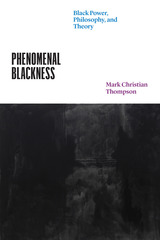 Phenomenal Blackness: Black Power, Philosophy, and Theory
Mark Christian Thompson
University of Chicago Press, 2022 This unorthodox account of 1960s Black thought rigorously details the field’s debts to German critical theory and explores a forgotten tradition of Black singularity.
Phenomenal Blackness examines the changing interdisciplinary investments of key mid-century Black writers and thinkers, including the growing interest in German philosophy and critical theory. Mark Christian Thompson analyzes this shift in intellectual focus across the post-war decades, placing Black Power thought in a philosophical context.
Prior to the 1960s, sociologically oriented thinkers such as W. E. B. Du Bois had understood Blackness as a singular set of socio-historical characteristics. In contrast, writers such as Amiri Baraka, James Baldwin, Angela Y. Davis, Eldridge Cleaver, and Malcolm X were drawn to notions of an African essence, an ontology of Black being. With these perspectives, literary language came to be seen as the primary social expression of Blackness. For this new way of thinking, the works of philosophers such as Adorno, Habermas, and Marcuse were a vital resource, allowing for continued cultural-materialist analysis while accommodating the hermeneutical aspects of Black religious thought. Thompson argues that these efforts to reimagine Black singularity led to a phenomenological understanding of Blackness—a “Black aesthetic dimension” wherein aspirational models for Black liberation might emerge.
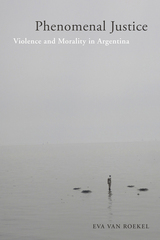 Phenomenal Justice: Violence and Morality in Argentina
Eva van Roekel
Rutgers University Press, 2020 2020 Choice Outstanding Academic Title
Short-listed for the Juan E. Méndez Book Award for Human Rights in Latin America from Duke University Libraries
How do victims and perpetrators of political violence caught up in a complicated legal battle experience justice on their own terms? Phenomenal Justice is a compelling ethnography about the reopened trials for crimes against humanity committed during the brutal military dictatorship that ruled Argentina between 1976 and 1983. Grounded in phenomenological anthropology and the anthropology of emotion, this book establishes a new theoretical basis that is faithful to the uncertainties of justice and truth in the aftermath of human rights violations. The ethnographic observations and the first-person stories about torture, survival, disappearance, and death reveal the enduring trauma, heartfelt guilt, happiness, battered pride, and scratchy shame that demonstrate the unreserved complexities of truth and justice in post-conflict societies. Phenomenal Justice will be an indispensable contribution to a better understanding of the military dictatorship in Argentina and its aftermath.
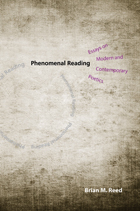 Phenomenal Reading: Essays on Modern and Contemporary Poetics
Brian M. Reed
University of Alabama Press, 2012 Normal0falsefalsefalseMicrosoftInternetExplorer4 The essays in Phenomenal Reading entice readers to cross accepted barriers, and highlight the work of poets who challenge language-as-usual in academia and the culture at large. Phenomenal Reading is comprised of essays that are central to how best to read poetry. This book examines individually and collectively poets widely recognized as formal and linguistic innovators. Why do their words appear in unconventional orders? What end do these arrangements serve? Why are they striking? Brian Reed focuses on poetic form as a persistent puzzle, using historical fact and the views of other key critics to clarify how particular literary works are constructed and how those constructions lead to specific effects. Understanding that explication and contextualization do not always sufficiently harness the power of poetry, Reed pursues phenomenological methods that take into account each reader’s unique perception of the world. This collection of twelve essays values narrative as a tool for conveying the intricacy, contingency, and richness of poetic experience.
Phenomenological Approaches to Popular Culture
Michael T. Carroll
University of Wisconsin Press, 2000 Within popular culture studies, one finds discussions about quantitative sociology, Marxism, psychoanalysis, myth criticism, feminism, and semiotics, but hardly a word on the usefulness of phenomenology, the branch of philosophy concerned with human experience. In spite of this omission, there is a close relationship between the aims of phenomenology and the aims of popular culture studies, for both movements have attempted to redirect academic study toward everyday lived experience.
The fifteen essays in this volume demonstrate the way in which phenomenological approaches can illuminate popular culture studies, and in so doing they take on the entire range of popular culture.
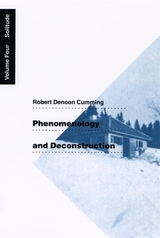 Phenomenology and Deconstruction, Volume Four: Solitude
Robert Denoon Cumming
University of Chicago Press, 2001 In this final volume of Robert Denoon Cumming's four-volume history of the phenomenological movement, Cumming examines the bearing of Heidegger's philosophy on his original commitment to Nazism and on his later inability to face up to the implication of that allegiance. Cumming continues his focus, as in previous volumes, on Heidegger's connection with other philosophers. Here, Cumming looks first at Heidegger's relation to Karl Jaspers, an old friend on whom Heidegger turned his back when Hitler consolidated power, and who discredited Heidegger in the denazification that followed World War II. The issues at stake are not merely personal, Cumming argues, but regard the philosophical relevance of the personal.
After the war Heidegger disavowed Sartre, a move related to Heidegger's renunciation of his association with the phenomenological movement at large, and one that illustrates the dynamics of the history Cumming himself has completed. Serving as convincing punctuation for this remarkable series, this book demonstrates the importance of the history of philosophy in coming to grips with the proclaimed end of philosophy.
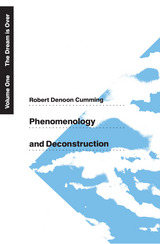 Phenomenology and Deconstruction, Volume One: The Dream is Over
Robert Denoon Cumming
University of Chicago Press, 1991 "Philosophy as . . . a rigorous science . . . the dream is over," Edward Husserl once declared. Heidegger (Husserl's successor), Derrida, and Rorty have propounded versions of "the end of philosophy." Cumming argues that what would count as philosophy's coming to an end can only be determined with some attention to disruptions which have previously punctuated the history of philosophy. He arrives at categories for interpreting what is at issue in such disruptions by analyzing Heidegger's and Husserl's break with each other, Heidegger's break with Sartre, and Merleau-Ponty's break with Sartre.
In this analysis Cumming deals with how a philosophy can be vulgarized (as Heidegger's was by Nazism but in Heidegger's own view by Sartre), with problems of periodization, with how the history of philosophy can be disinguished as a philosophical discipline from intellectual history. Cumming also elaborates an analogy between a philosophical method and style.
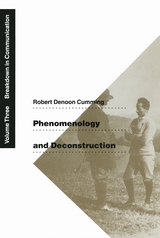 Phenomenology and Deconstruction, Volume Three: Breakdown in Communication
Robert Denoon Cumming
University of Chicago Press, 2001 Philosophers are committed to objective understanding, but the
history of philosophy demonstrates how frequently one philosopher
misunderstands another. The most notorious such breakdown in
communication in twentieth-century philosophy was between Husserl and
Heidegger. In the third volume of his history of the phenomenological
movement, Robert Denoon Cumming argues that their differences involve
differences in method; whereas Husserl follows a "method of
clarification," with which he eliminates ambiguities by relying on an
intentional analysis that isolates its objects, Heidegger rejects the
criterion of "clarity" and embraces ambiguities as exhibiting
overlapping relations.
Cumming also explores the differences between how
deconstruction—Heidegger's procedure for dealing with other
philosophers—is carried out when Heidegger interprets Husserl versus
when Derrida interprets Husserl. The comparison enables Cumming to
show how deconstruction is associated with Heidegger's arrival at the
end of philosophy, paving the way for the deconstructionist movement.
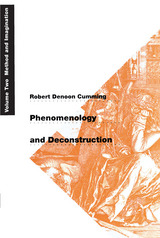 Phenomenology and Deconstruction, Volume Two: Method and Imagination
Robert Denoon Cumming
University of Chicago Press, 1992 "Husserl had captured me, I saw everything in terms of the perspectives of his philosophy," wrote Sartre of his conversion to Husserl's phenomenology. In the present volume Cumming analyzes Sartre's transformation of Husserl's phenomenological method into a rudimentary dialectic. Cumming thus provides an introduction to phenomenology itself, and more generally to the ways in which debts to previous philosophies can be refurbished in later philosophies. He shows how phenomenology, which for Husserl was a theory of knowledge in which "we can always presume sincerity," becomes for Sartre a theory in which imagination, self-deception, and role playing are crucial.
Cumming also shows that conversion is not merely a personal predisposition of Sartre's—further manifest in his later conversions to Heidegger and to a version of Marxism. Conversion is also philosophical preoccupation, illustrated by the "conversion to the imaginary" whereby Sartre explains how he himself, as well as Genet and Flaubert, became writers. Finally, Cumming details how Husserl's phenomenological method contributed both to the shaping of Sartre's style as a literary writer and to his theory of style.
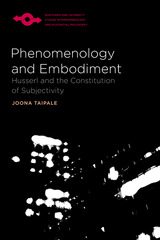 Phenomenology and Embodiment: Husserl and the Constitution of Subjectivity
Joona Taipale
Northwestern University Press, 2014 At the dawn of the modern era, philosophers reinterpreted their subject as the study of consciousness, pushing the body to the margins of philosophy. With the arrival of Husserlian thought in the late nineteenth century, the body was once again understood to be part of the transcendental field. And yet, despite the enormous influence of Husserl’s phenomenology, the role of "embodiment" in the broader philosophical landscape remains largely unresolved. In his ambitious debut book, Phenomenology and Embodiment, Joona Taipale tackles the Husserlian concept—also engaging the thought of Maurice Merleau-Ponty, Jean-Paul Sartre, and Michel Henry—with a comprehensive and systematic phenomenological investigation into the role of embodiment in the constitution of self-awareness, intersubjectivity, and objective reality. In doing so, he contributes a detailed clarification of the fundamental constitutive role of embodiment in the basic relations of subjectivity.
Phenomenology and the Problem of History: A Study of Husserl's Transcendental Philosophy
David Carr
Northwestern University Press, 2009 In Phenomenology and the Problem of History, David Carr examines the paradox involving Husserl's transcendental philosophy and his later historicist theory. Rejecting the arguments of earlier critics that compromise aspects of Husserl's writing, Carr proposes a model of the transcendental philosopher who balances necessary historical reduction with a strict mind to historical context.
Phenomenology and the Social Sciences
Maurice Natanson
Northwestern University Press, 1973 The idea of this anthology is to explore the relationships between phenomenology and the social sciences.
Phenomenology and Theory of Science
Aron Gurwitsch
Northwestern University Press, 1974 Essays on the relationship between perceptual experience and scientific thought—an introduction to the phenomenology of science.
Phenomenology: Between Essentialism and Transcendental Philosophy
J.N. Mohanty
Northwestern University Press, 1997 J. N. Mohanty is one of America's leading interpreters of Husserl's phenomenology and the phenomenological movement for which Husserl's work was the impetus.
This collection of essays traces the themes of essentialism and transcendentalism as they have appeared in the development of phenomenology from Husserl to Derrida. Beginning with Husserl's major phenomenological themes--essence, meaning, transcendental subjectivity, and life-world--Mohanty examines the tensions within phenomenology in general and within Husserl's phenomenology in particular. The accessibility of these essays, coupled with Mohanty's consideration of lesser-known phenomenologists (Ingarden, Scheler, Hartmann, et. al.) mark this as a major updating of phenomenology for a contemporary audience.
 Phenomenology for Actors: Theatre-Making and the Question of Being
Daniel Johnston
Intellect Books, 2021 A valuable new touchstone for phenomenology and performance as research.
In this book, Daniel Johnston examines how phenomenology can describe, analyze, and inspire theater-making. Each chapter introduces themes to guide the creative process through objects, bodies, spaces, time, history, freedom, and authenticity. Key examples in the work are drawn from Chekhov’s The Cherry Orchard, Sophocles’ Antigone, and Shakespeare’s Hamlet. Practical tasks throughout explore how the theatrical event can offer unique insights into being and existence, as Johnston’s philosophical perspective shines a light on broader existential issues of being. In this way, the book makes a bold contribution to the study of acting as an embodied form of philosophy and reveals how phenomenology can be a rich source of creativity for actors, directors, designers, and collaborators in the performance process.
Brimming with insight into the practice and theory of acting, this original new work stimulates new approaches to rehearsal and sees theater-making as capable of speaking back to philosophical discourse.
The Phenomenology of Aesthetic Experience
Mikel Dufrenne
Northwestern University Press, 1973 The Phenomenology of Aesthetic Experience (Fr. Phénoménologie de l'expérience esthétique) was first published in 1953. In the first of four parts, Dufrenne distinguishes the "aesthetic object" from the "work of art." In the second, he elucidates types of works of art, especially music and painting. He devotes his third section to aesthetic perception. In the fourth, he describes a Kantian critique of aesthetic experience.
A perennial classic in the SPEP series, the work is rounded out by a detailed "Translator's Foreword" especially helpful to readers in aesthetics interested in the context and circumstances around which the original was published as well as the phenomenological background of the book.
The Phenomenology of Dance
Maxine Sheets-Johnstone
Temple University Press, 2015 When The Phenomenology of Dance was first published in 1966, Maxine Sheets-Johnstone asked: “When we look at a dance, what do we see?” Her questions, about the nature of our experience of dance and the nature of dance as a formed and performed art, are still provocative and acutely significant today. Sheets-Johnstone considers dance as an aesthetic mode of expression, and integrates theories of dance into philosophical discussions of the nature of movement.
Back in print after nearly 20 years, The Phenomenology of Dance provides an informed approach to teaching dance and to dance education, appreciation, criticism, and choreography. In addition to the foreword by Merce Cunningham from the original edition, and the preface from the second edition, this fiftieth anniversary edition includes an in-depth introduction that critically and constructively addresses present-day scholarship on movement and dance.
 Phenomenology of Merleau-Ponty: A Search For The Limits Of Consciousness
Gary Brent Madison
Ohio University Press, 1981 The first study of its kind to appear in English, The Phenomenology of Merleau-Ponty is a sustained ontological reading of Merleau-Ponty which traces the evolution of his philosophy of being from his early work to his late, unfinished manuscripts and working notes. Merleau-Ponty, who contributed greatly to the theoretical foundations of hermeneutics, is here approached hermeneutically. Most commentators are agreed that towards the end Merleau-Ponty’s philosophy underwent a strange and interesting mutation. The exact nature of this mutation or conceptual shift is what this study seeks to disclose. Thus, although Madison proceeds in a generally progressive, chronological fashion, examining Merleau-Ponty’s major works in the order of their composition, his reading is ultmately regressive in that Merleau-Ponty’s earlier works are viewed in the light of the new and enigmatic ontological orientation which makes its appearance in his later work. The merit of this approach is that, as Paul Ricoeur has remarked, it enables the author to expose the “anticipatory, hollowed-out presence” of Merleau-Ponty’s late philosophy “in the difficulties of his early phenomenology,” such that “the unifying intention between his first philosophy of meaning and the body and the late, more ontological philosophy is made manifest.” This book begins with a detailed study of Merleau-Ponty’s two major early works, The Structure of BehaviorThe Phenomenology of Perception. In the following three chapters, Madison traces the development of Merleau-Ponty’s thought from the beginning to the end of his philosophical career in regard to three topics of special concern to the French phenomenologist: painting, language, philosophy. In the final chapter, he is concerned to articulate, as much as the unfinished state of Merleau-Ponty’s final work allows, the unspoken thought of this work and of The Visible and Invisible in particular. Merleau-Ponty’s notion of “wild being” and his attempt to work out an “indirect” or “negative” ontology are thoroughly analyzed. In the end the reader will see that through his self-criticism and the development in his own phenomenology Merleau-Ponty has brought phenomenology itself to its limits and to the point where it must transcend itself as a philosophy of consciousness in the Husserlian sense if it is to remain faithful to Husserl’s own goal of bringing “experience to the full expression of its own meaning.” Because Madison submits Merleau-Ponty to the same kind of interpretive retrieval as the latter did with Husserl, Roger Cailloise has said of this “clear and very complete book” that it “goes will beyond a simple exposition and merits being read as an original work.”
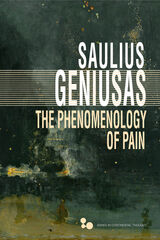 The Phenomenology of Pain
Saulius Geniusas
Ohio University Press, 2020 The Phenomenology of Pain is the first book-length investigation of its topic to appear in English. Groundbreaking, systematic, and illuminating, it opens a dialogue between phenomenology and such disciplines as cognitive science and cultural anthropology to argue that science alone cannot clarify the nature of pain experience without incorporating a phenomenological approach. Building on this premise, Saulius Geniusas develops a novel conception of pain grounded in phenomenological principles: pain is an aversive bodily feeling with a distinct experiential quality, which can only be given in original first-hand experience, either as a feeling-sensation or as an emotion. Geniusas crystallizes the fundamental methodological principles that underlie phenomenological research. On the basis of those principles, he offers a phenomenological clarification of the fundamental structures of pain experience and contests the common conflation of phenomenology with introspectionism. Geniusas analyzes numerous pain dissociation syndromes, brings into focus the de-personalizing and re-personalizing nature of chronic pain experience, and demonstrates what role somatization and psychologization play in pain experience. In the process, he advances Husserlian phenomenology in a direction that is not explicitly worked out in Husserl’s own writings.
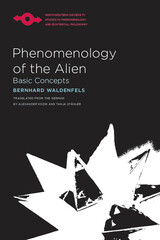 Phenomenology of the Alien: Basic Concepts
Translated from the German by Alexander Kozin and Tanja Stähler
Northwestern University Press, 2011 Tanja Stähler and Alexander Kozin’s elegant translation of Bernhard Waldenfels’s Phenomenology of the Alien (Grundmotive einer Phänomenologie des Fremden) introduces the English readership to the philosophy of alien-experience, a multifaceted and multidimensional phenomenon that permeates our everyday experiences of the life-world with immediate implications for the ways we conduct our social, political, and ethical affairs.
With impressive erudition Waldenfels weaves in xenological themes from classical philosophy, contemporary phenomenology, literature, linguistics, sociology, and anthropology to address the boundaries of experience that unite and separate human beings, their collectives, their perceptions, and aspirations. While the debate has long raged in German-speaking circles, Waldenfels’s work is largely unavailable to the English-speaking audience, with the only other translation being The Order in the Twilight (1996). Phenomenology of the Alien is a superb introduction to both xenological phenomenology, and the the question of the alien as it has been unfolding in contemporary thought.
Phenomenology of the Social World
Alfred Schutz
Northwestern University Press, 1967 In this book, his major work, Alfred Schutz attempts to provide a sound philosophical basis for the sociological theories of Max Weber. Using a Husserlian phenomenology, Schutz provides a complete and original analysis of human action and its "intended meaning."
 Phenomenology: Responses and Developments
Edited by Leonard Lawlor
University of Chicago Press, 2010 From Kant to Kierkegaard, from Hegel to Heidegger, continental philosophers have indelibly shaped the trajectory of Western thought since the eighteenth century. Although much has been written about these monumental thinkers, students and scholars lack a definitive guide to the entire scope of the continental tradition. The most comprehensive reference work to date, this eight-volume History of Continental Philosophy will both encapsulate the subject and reorient our understanding of it. Beginning with an overview of Kant’s philosophy and its initial reception, the History traces the evolution of continental philosophy through major figures as well as movements such as existentialism, phenomenology, hermeneutics, and poststructuralism. The final volume outlines the current state of the field, bringing the work of both historical and modern thinkers to bear on such contemporary topics as feminism, globalization, and the environment. Throughout, the volumes examine important philosophical figures and developments in their historical, political, and cultural contexts.
The first reference of its kind, A History of Continental Philosophy has been written and edited by internationally recognized experts with a commitment to explaining complex thinkers, texts, and movements in rigorous yet jargon-free essays suitable for both undergraduates and seasoned specialists. These volumes also elucidate ongoing debates about the nature of continental and analytic philosophy, surveying the distinctive, sometimes overlapping characteristics and approaches of each tradition. Featuring helpful overviews of major topics and plotting road maps to their underlying contexts, A History of Continental Philosophy is destined to be the resource of first and last resort for students and scholars alike.
Phenomenology's Material Presence: Video, Vision and Experience
Gabrielle A Hezekiah
Intellect Books, 2010 Phenomenology’s Material Presence draws on recent work in phenomenology, embodiment, and cinema and extends the field by examining metaphysical presence in postcolonial cinema. Where other scholarship has assimilated insight from individual phenomenological thinkers, Phenomenology’s Material Presence utilizes the methods of these thinkers—Husserl, Heidegger, and Merleau-Ponty—to produce a richly textured and poetic essay that brings them into conversation. Through a meditation on three experimental videos by Trinidadian filmmaker Robert Yao Ramesar, this book makes the case that video performs an act of phenomenological inquiry. Phenomenology’s Material Presence extends our theorizing in both film studies and philosophy.
The Phenomenon of Life: Toward a Philosophical Biology
Hans Jonas
Northwestern University Press, 2001 A classic of phenomenology and existentialism, The Phenomenon of Life sets forth a systematic and comprehensive philosophy—an existential interpretation of biological facts laid out in support of his claim that the mind is prefigured throughout organic existence. Hans Jonas shows how life-forms present themselves on an ascending scale of perception and freedom of action, a scale reaching its apex in a human being's capacity for thought and morally responsible behavior.
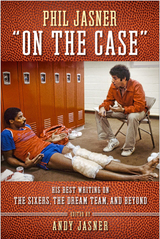 Phil Jasner "On the Case": His Best Writing on the Sixers, the Dream Team, and Beyond
Andy Jasner
Temple University Press, 2017 Allen Iverson loved Philadelphia Daily News basketball beat reporter Phil Jasner, calling him “the best” in the world of sports journalism. From 1981 until his death in 2010, Jasner was always “on the case,” going to great lengths to track athletes down for a quote or a story. He was most known for covering the team’s famous players, including World B. Free and Bobby Jones, Julius Erving and Moses Malone, Charles Barkley, and, of course, Iverson. His tremendous output was beloved by players and fans alike, earning him many honors, including inductions into six Halls of Fame. Phil Jasner “On the Case” collects the best of Jasner’s writing throughout his illustrious career. Jasner wrote about baseball, the Eagles, and the Philadelphia Atoms’ soccer with the same insight and aplomb he showed in his coverage of The Big 5, the 76ers’ championship season in 1983, and the Dream Team. Lovingly assembled—each chapter is introduced by some of the most prominent figures Jasner covered, from Vince Papale, Doug Collins, and Billy Cunningham to Iverson and Barkley—this collection recounts a distinguished sportswriter’s remarkable career.
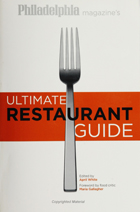 Phila Magazine'S Ultimate Restaurant Gde: Restaurant Guide
April White
Temple University Press, 2004 When renowned national food critic John Mariani ranked Philadelphia's food scene among the top ten in the country, placing it alongside longtime culinary destinations New York and San Francisco, nobody at PhiladelphiaMagazine was surprised. That's what the magazine's food critics—always in search of the best of Philly—have known for years. Now, the PhiladelphiaMagazine's Ultimate Restaurant Guide condenses their comprehensive knowledge—and thousands of meals—into one informative, easy-to-digest handbook, essential for both the Philadelphia foodie and the hungry tourist.
What's on the menu:
* Profiles of Philadelphia's most influential chefs and restaurant owners, including Le Bec-Fin's Georges Perrier, and restaurant mogul Stephen Starr.
* A behind-the-scenes look at the Philadelphia food purveyors, who are responsible for some of the nation's hottest food trends—from La Colombe coffee to Metropolitan Bakery's artisanal breads to Jubilee Chocolates.
* Reviews of more than 230 of the best restaurants in the Philadelphia region, from Center City mainstays Susanna Foo and Morimoto to suburban destinations Alison at Blue Bell and Carmine's Café.
* Easy-to-use index of restaurants by cuisine and neighborhood.
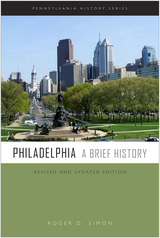 Philadelphia: A Brief History
Roger D. Simon
Temple University Press, 2017 Understanding Philadelphia’s history requires that we understand that nothing is inevitable; history is not made by abstract forces, but by the decisions of real individuals as they conduct their lives. With its insightful analysis and engaging prose, Philadelphia provides an accessible and readable overview of the history of the Quaker City from its founding by William Penn to the deindustrialization and gentrification of the early twenty-first century. Roger Simon asserts that the history of Philadelphia is a story of the efforts to sustain economic prosperity while fulfilling community needs, and the continued tension between those priorities. Philadelphia devotes considerable attention to the evolving physical development of the city and to the social conditions and class structure of the people. Three dozen maps and illustrations enrich this edition, which has been fully updated and revised to reflect new scholarship on Philadelphia’s role in the post-industrial present and the diverse communities that incorporated women and minorities into the economic and social fabric of the city. Published in association with the Pennsylvania Historical Association
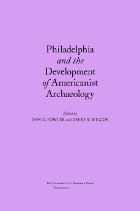 Philadelphia and the Development of Americanist Archaeology
Edited by Don Fowler and David R. Wilcox
University of Alabama Press, 2003 For two and a half centuries, Philadelphians have been actively involved in archaeological research. In particular, three vital and venerable cultural institutions—the American Philosophical Society (founded 1743), the Academy of Natural Sciences (founded 1812), and the University Museum of the University of Pennsylvania (founded 1893)—have nurtured the "systematic study of antiquities."
The ten essays in this volume focus on Philadelphians who were concerned with Americanist archaeology, or the "archaeology of the New World." As Europeans, and later, Euroamericans, spread across North, Central, and South America in the 16th through the 19th centuries, they encountered a bewildering variety of native peoples, customs, and languages, as well as tens of thousands of ancient ruins attesting to a long endemic culture history of obvious complexity.
The essays examine most of the key players in the development of the methods to study these phenomena. Enlightenment scholars such as Benjamin Smith Barton, Peter S. Duponceau, Thomas Jefferson, Daniel Garrison Brinton, John Wesley Powell, and Benjamin Rush all contributed to the surge of scientific study of America's prehistoric cultures. So did two pioneering women who have received scant attention to date—Sara Yorke Stevenson and Lucy W. Wilson—but whose work is well treated in this study. Other essays detail the varied contributions of C. C. Abbott, Frank Hamilton Cushing, Clarence B. Moore, Edgar Lee Hewett, and John L. Cotter. This volume should stimulate continued interest in the origins and history of archaeology and the relationship of Philadelphia patrons and institutions to scientific inquiry.
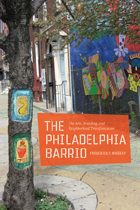 The Philadelphia Barrio: The Arts, Branding, and Neighborhood Transformation
Frederick F. Wherry
University of Chicago Press, 2011 How does a so-called bad neighborhood go about changing its reputation? Is it simply a matter of improving material conditions or picking the savviest marketing strategy? What kind of role can or should the arts play in that process? Does gentrification always entail a betrayal of a neighborhood’s roots? Tackling these questions and offering a fresh take on the dynamics of urban revitalization, The Philadelphia Barrio examines one neighborhood’s fight to erase the stigma of devastation.
Frederick F. Wherry shows how, in the predominantly Latino neighborhood of Centro de Oro, entrepreneurs and community leaders forged connections between local businesses and cultural institutions to rebrand a place once nicknamed the Badlands. Artists and performers negotiated with government organizations and national foundations, Wherry reveals, and took to local galleries, stages, storefronts, and street parades in a concerted, canny effort to reanimate the spirit of their neighborhood.
Complicating our notions of neighborhood change by exploring the ways the process is driven by local residents, The Philadelphia Barrio presents a nuanced look at how city dwellers can make commercial interests serve the local culture, rather than exploit it.
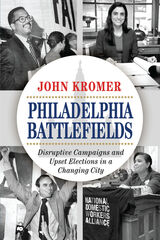 Philadelphia Battlefields: Disruptive Campaigns and Upset Elections in a Changing City
John Kromer
Temple University Press, 2020 Should the surprisingly successful outcomes achieved by outsider candidates in Philadelphia elections be interpreted as representing fundamental changes in the local political environment, or simply as one-off victories, based largely on serendipitous circumstances that advanced individual political careers? John Kromer’s insightful Philadelphia Battlefields considers key local campaigns undertaken from 1951 to 2019 that were extraordinarily successful despite the opposition of the city’s political establishment. Kromer draws on election data and data-mapping tools that explain these upset elections as well as the social, economic, and demographic trends that influenced them to tell the story of why these campaign strategies were successful. He deftly analyzes urban political dynamics through case studies of newcomer Rebecca Rhynhart’s landslide victory over a veteran incumbent for Philadelphia City Controller; activist Chaka Fattah’s effective use of grassroots organizing skills to win a seat in Congress; and Maria Quiñones-Sánchez’s hard-fought struggle to become the first Hispanic woman to win a City Council seat, among others. Philadelphia Battlefields shows how these candidates’ efforts to increase civic engagement, improve municipal governance, and become part of a new generation of political leadership at the local and state level were critical to their successes.
The Philadelphia Connection: Conversations with Playwrights
B. J. Burton
Intellect Books, 2015 Philadelphia is one of America’s most interesting and innovative cities for theater, rich in new theaters, new plays, and rising playwrights. This book paints a picture of the city’s burgeoning scene through interviews with some of Philadelphia’s most influential and successful playwrights. Featuring interviews with Bruce Graham, Michael Hollinger, Thomas Gibbons, Seth Rozin, Louis Lippa, Jules Tasca, Kimmika Williams-Witherspoon, Ed Shockley, Larry Loebell, Arden Kass, Nicholas Wardigo, Alex Dremann, Katharine Clark Gray, and Jacqueline Goldfinger, the book will be a source of inspiration for playwrights in Philadelphia and far beyond.
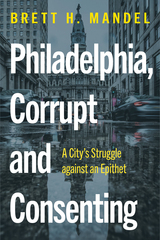 Philadelphia, Corrupt and Consenting: A City’s Struggle against an Epithet
Brett H. Mandel
Temple University Press, 2023 More than a century after muckraking journalist Lincoln Steffens derided the city of Philadelphia as being “corrupt and contented,” Philadelphia struggles to rise above this unfortunate characterization. Philadelphia, Corrupt and Consentingis the story of a city’s confrontation with a history that threatens its future. Author Brett Mandel, who has been a reform-oriented government official and political insider, provides a detailed account of the corruption investigation of John Dougherty, one of the city’s most powerful political figures, in order to expose and explore networks of corruption. He examines the costs of corruption, both financial and nonpecuniary, and considers the opportunity cost that corruption imposes. Mandel explores the nature and development of Philadelphia’s unique culture of corruption, emphasizing how machine politics and self-dealing are entwined with city history, creating a culture that allows corruption to thrive. In addition, he provides practical, achievable policies and actions that can produce positive change in Philadelphia and elsewhere. Mandel seeks to provide insight into how our collective actions or inattention give consent to the corruption, as well as its roots and effects, and the reasons for its persistence. Philadelphia, Corrupt and Consenting is a critique, but above all, it is a call to action.
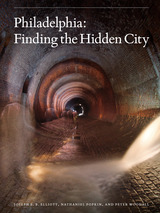 Philadelphia: Finding the Hidden City
Joseph E. B. Elliott
Temple University Press, 2017 Philadelphia possesses an exceptionally large number of places that have almost disappeared—from workshops and factories to sporting clubs and societies, synagogues, churches, theaters, and railroad lines. In Philadelphia: Finding the Hidden City, urban observers Nathaniel Popkin and Peter Woodall uncover the contemporary essence of one of America’s oldest cities. Working with accomplished architectural photographer Joseph Elliott, they explore secret places in familiar locations, such as the Metropolitan Opera House on North Broad Street, the Divine Lorraine Hotel, Reading Railroad, Disston Saw Works in Tacony, and mysterious parts of City Hall. Much of the real Philadelphia is concealed behind facades. Philadelphia artfully reveals its urban secrets. Rather than a nostalgic elegy to loss and urban decline, Philadelphia exposes the city’s vivid layers and living ruins. The authors connect Philadelphia’s idiosyncratic history, culture, and people to develop an alternative theory of American urbanism, and place the city in American urban history. The journey here is as much visual as it is literary; Joseph Elliott’s sumptuous photographs reveal the city's elemental beauty.
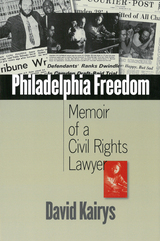 Philadelphia Freedom: Memoir of a Civil Rights Lawyer
David Kairys
University of Michigan Press, 2008 "David Kairys is one of the grand long-distance runners in the struggle for justice in America. His brilliant legal mind and superb lawyerly skills are legendary. This marvelous book is his gift to us!"
---Cornel West, Professor of Religion and African American Studies, Princeton University, and award-winning author of Race Matters Philadelphia Freedom is the spellbinding tale of an idealistic young lawyer coming of age in the political cauldron of the 1960s and 1970s. From his immersion in the civil rights movement to his determined court battles to quell criminal violence by Philadelphia police, Kairys recounts how he helped make history in the city of brotherly love."
---William K. Marimow, Editor and Executive Vice President, Philadelphia Inquirer, and recipient of two Pulitzer Prizes "In the current climate of political deception and the trampling of our civil rights, Kairys's compelling book is a clenched fist, a prayer for social justice and a call to conscience."
---Steve Lopez, Los Angeles Times columnist and former Philadelphia Inquirer columnist "With engaging, insider stories of innovative legal strategies of a truly creative lawyer, this book evokes the ebullient spirit of progressive social change launched in the 1960s and should be read by aspiring and practicing lawyers as well as anyone interested in American social history. Philadelphia Freedom reads like a suspense novel and reveals how novel legal and political thinking can and does make a real difference to individuals and to the quality of justice."
---Martha L. Minow, Jeremiah Smith, Jr. Professor of Law, Harvard University "David Kairys's compelling book properly explains the vital role that civil rights attorneys play in our system of justice."
---Judge John E. Jones III, United States District Court for the Middle District of Pennsylvania, and presiding judge in the landmark Kitzmiller v. Dover Area School District case A memoir that is also a compelling page-turner, Philadelphia Freedom is the poignant, informative, often inspiring account of renowned civil-rights lawyer David Kairys's personal quest for achieving social justice during the turbulent 1960s and 70s. Philadelphia Freedom brings us intimately and directly into Kairys's burgeoning law career and the struggles of the 60s as his professional and private life navigated the turmoil and promise of the civil rights and antiwar movements. Many of the cases Kairys took on involved discrimination and equal protection, freedom of speech, and government malfeasance. Kairys is perhaps most well known for his victory in the Camden 28 draft board case, in which the FBI set up a sting of the Catholic anti-war left at the behest of the highest levels of government. The stories and cases range from nationally important and recognizable---the family of the scientist the CIA unwittingly gave LSD in the 1950s; the leading race discrimination case against the FBI; Dr. Benjamin Spock's First Amendment case before the Supreme Court; the city handgun lawsuits Kairys conceived---to those he encountered in his early work as a public defender. The characters include public figures such as FBI Directors J. Edgar Hoover and Louis Freeh; CIA Director William Colby; Pennsylvania Senator Arlen Specter; New York Attorney General Eliot Spitzer; U.S. Attorneys General Edward Levi and John Mitchell; Georgia Governor Lester Maddox; Pennsylvania Governor, former Philadelphia Mayor, and Democratic National Committee chair Ed Rendell; Philadelphia Mayor and Police Commissioner Frank Rizzo. But some of the most memorable are not well known, involving regular people caught up in the often heartless machinery of the courts and legal system. Though it reads like a novel, with all the elements of character, plot, and suspense, Philadelphia Freedom also has historical significance as a firsthand account of the 1960s and 70s and contains social commentary about race as well as insights and major perspectives on the nature and social role of law. David Kairys is Professor of Law at Beasley School of Law, Temple University. He was a full-time civil rights lawyer from 1968 to 1990.
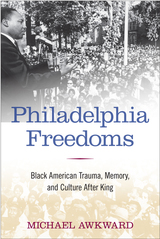 Philadelphia Freedoms: Black American Trauma, Memory, and Culture after King
Michael Awkward
Temple University Press, 2013 Michael Awkward’s Philadelphia Freedoms captures the energetic contestations over the meanings of racial politics and black identity during the post-King era in the City of Brotherly Love. Looking closely at four cultural moments, he shows how racial trauma and his native city’s history have been entwined. He introduces each of these moments with poignant personal memories of the decade in focus and explores representation of African American freedom and oppression from the 1960s to the 1990s. Philadelphia Freedoms explores NBA players’ psychic pain during a playoff game the day after Martin Luther King, Jr.'s assassination; themes of fatherhood and black masculinity in the soul music produced by Philadelphia International Records; class conflict in Andrea Lee’s novel Sarah Phillips; and the theme of racial healing in Oprah Winfrey’s 1997 film, Beloved. Awkward closes his examination of racial trauma and black identity with a discussion of candidate Barack Obama’s speech on race at Philadelphia’s Constitution Center, pointing to the conflict between the nation’s ideals and the racial animus that persists even into the second term of America’s first black president.
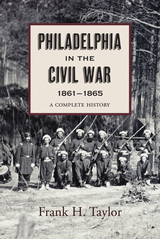 Philadelphia in the Civil War, 1861–1865
Frank H. Taylor
Westholme Publishing, 2014 A Treasure Trove of Primary Source Material Chronicling the Role of a Pivotal City in America’s Most Important Conflict The city of Philadelphia played a major role in the Civil War as a manufacturing base, naval port, arsenal, financial and transportation center, and supplier of thousands of troops for the Union cause. Philadelphia provided the most uniforms for the Union army, built warships, was the site of the two largest military hospitals in the North, and recruited more than fifty infantry and cavalry regiments. Philadelphia was the closest free-state metropolitan area to the Confederacy and in fact had close contact with the South before the war. However, once the war began, Philadelphians embraced the Union cause.
First published one hundred years ago, Philadelphia in the Civil War presents the complete story of the city during America’s greatest conflict. Richly illustrated with rare images, the book describes every detail of the region’s response to the war, ranging from accounts of each of the military units that served, medicine and medical staffs, and the city’s defense measures to lists of information, such as regiments losing fifty or more men, officers who gained the rank of general, recruiting stations, and famous songs.
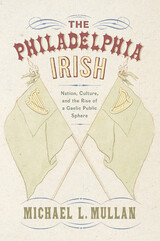 The Philadelphia Irish: Nation, Culture, and the Rise of a Gaelic Public Sphere
Michael L. Mullan
Rutgers University Press, 2021 This book describes the flowering of the Irish American community and the 1890s growth of a Gaelic public sphere in Philadelphia, a movement inspired by the cultural awakening in native Ireland, transplanted and acted upon in Philadelphia’s robust Irish community. The Philadelphia Irish embraced this export of cultural nationalism, reveled in Gaelic symbols, and endorsed the Gaelic language, political nationalism, Celtic paramilitarism, Gaelic sport, and a broad ethnic culture.
Using Jurgen Habermas’s concept of a public sphere, the author reveals how the Irish constructed a plebian “counter” public of Gaelic meaning through various mechanisms of communication, the ethnic press, the meeting rooms of Irish societies, the consumption of circulating pamphlets, oratory, songs, ballads, poems, and conversation.
Settled in working class neighborhoods of vast spatial separation in an industrial city, the Irish resisted a parochialism identified with neighborhood and instead extended themselves to construct a vibrant, culturally engaged network of Irish rebirth in Philadelphia, a public of Gaelic meaning.
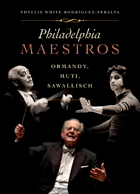 Philadelphia Maestros: Ormandy, Muti, Sawallisch
Phyllis Rodriquez-Peralta
Temple University Press, 2006 Over the past century, the Philadelphia Orchestra has earned its reputation as one of the finest orchestras in the world. Philadelphia Maestros tells the tale of this marvelous orchestra through the tenures of three conductors: Eugene Ormandy, Riccardo Muti, and Wolfgang Sawallisch. With their singular approaches to sound and public image, all three maestros left an indelible mark on the Orchestra, and the cultural life of the city of Philadelphia. A lifelong fan and scholar of the Philadelphia Orchestra, Phyllis White Rodríguez-Peralta paints intimate portraits of the conductors using archival material and interviews with musicians, including pianists Gary Graffman and Lang Lang, and violinist Sarah Chang. Rodríguez-Peralta's text captivates as she recounts Eugene Ormandy's performance as a last-minute substitute for guest conductor Arturo Toscanini; Riccardo Muti's magnetic presence and international fame; and the role of Wolfgang Sawallisch in moving the Orchestra to its grand new hall at the Kimmel Center. Engaging and entertaining, Philadelphia Maestros will be a welcome addition to any aficionado's bookshelf.
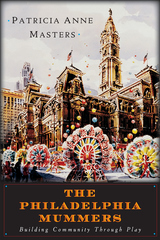 The Philadelphia Mummers: Building Community Through Play
Patricia Anne Masters
Temple University Press, 2007 Every New Year's Day since 1901, the Philadelphia Mummers have presented a spectacular show of shows that raucously snakes and shimmies its way through city streets. The Mummers Parade features music, dance, comedy, and mime, along with dazzling costumes and floats. Although the lavish event is now televised to a wide audience, it is still rooted in the same neighborhoods where it began. This book explores the community created and annually reaffirmed by the Philadelphia Mummers. The author spent more than five years with the Mummers, observing their lives and rituals as she took part in their preparations and parades. Writing with the fascination of a sociologist and the excitement of a participant, Masters examines the Mummers from their beginnings. Through the prism of their century-long history, we can see how communities retain their identities and how they are affected by larger cultural trends.
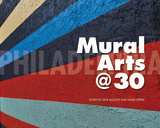 Philadelphia Mural Arts @ 30
Jane Golden
Temple University Press, 2014 The Mural Arts Program of Philadelphia began in 1984 as a summer youth program with modest support from city government. Under the guidance of Jane Golden, however, it gradually grew into one of the largest and most successful public art organizations in the country, garnering support from local corporations, foundations, and individuals to extend the reach and effectiveness of its innovative programs. Now three decades later, the Mural Arts Program has created more than 3,800 murals and public art projects that have made lasting imprints in every Philadelphia neighborhood. In the process, Mural Arts has engaged thousands of people of all ages from across the city, helped hundreds of ex-offenders train for new jobs, transformed the face of struggling commercial corridors, and developed funding partners in both public and private sectors. While the Mural Arts Program has significantly changed the appearance of the city, it has also demonstrated how participatory public art can empower individuals and promote communal healing around difficult issues. Philadelphia Mural Arts @ 30 is a celebration of and guide to the program's success. Unlike Philadelphia Murals and the Stories They Tell and its sequel, More Philadelphia Murals and the Stories They Tell, Philadelphia Murals @ 30 showcases the results of 21 projects completed since 2009 and features essays by policy makers, curators, scholars, and educators that offer valuable lessons for artists, activists, and communities to emulate. Philadelphia Mural Arts @ 30 traces the program's history and evolution, acknowledging the challenges and rewards of growth and change while maintaining a core commitment to social, personal, and community transformation. Contributors include: Dr. Arthur C. Evans, Jr., Arlene Goldbard, Thora Jacobson, Rick Lowe, Dr. Samantha L. Matlin, Paulette Moore, Jeremy Nowak, Maureen H. O'Connell, Elisabeth Perez Luna, Robin Rice, Dr. Jacob Kraemer Tebes, Elizabeth Thomas, Cynthia Weiss, Howard Zehr, and the editors.
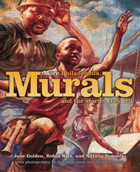 Philadelphia Murals & Stories They Tell
Jane Golden
Temple University Press, 2002 In June 1984, Jane Golden, a young muralist from Margate, New Jersey, headed up a project that was originally planned as a six-week youth program in the fledgling Philadelphia Anti-Graffiti Network. This small exercise in fighting graffiti grew into the most vibrant public art project in the United States. Led by Golden and dozens of artists, neighborhood residents, and volunteers, the Philadelphia Mural Arts Program has adorned the city with over two thousand murals. In the process, this vibrant art, painted mostly on city walls, helped to change the look of the city, creating an enduring legacy in all of the neighborhoods in which the murals were added.In this lavishly illustrated chronicle of the Mural Arts Program, you will see the murals in all of their beauty and learn about their inspiring legacies in neighborhoods throughout the city. Go behind the scenes to find out how murals are made and why the process is as much an art of diplomacy and consensus building as paint and perspective. Discover through pictures and text how murals give communities a new way to define themselves, not in terms of the streets and intersections that border them, but in terms of the people who came together to create something of dramatic beauty.
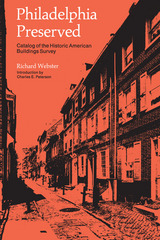 Philadelphia Preserved: Catalog of the Historic American Buildings Survey
Richard Webster
Temple University Press, 1981 Association of American University Presses Book Jacket Award, 1977
"As a key to Philadelphia's historic environment, this will become a standard work."
--Museum News
Today, William Penn's town is the living history of 300 years of architecture told in outstanding examples of Colonial, Federal, Italianate, and other early styles, and in the twentieth-century innovations of LeCorbusier, Kahn, and Wright. This new paperback edition updates the Historic American Buildings Survey collection, with new information on buildings lost through fire or demolition, or altered to restore the original architecture.
Organized by the traditional sections of the city, the entries include extensive physical descriptions of the structures, analyses of architecturally notable features, dates of construction, alteration, or demolition, and a new street index. The book contains more than 100 drawings, photos, and maps from the HABS collection.
"[F]rom Colonial, Federal and Italiante styles to the 20th-century innovation of LeCorbusier, Kahn, and Wright."
--Philadelphia Inquirer
"A cause for celebration. The editor's introductions set each part of the city into understandable units. The book is a clearly told story of success and failure in historic preservation."
--J.E. Mooney, Director, Historical Society of Pennsylvania
"A lovely portrait of Philadelphia's rich history of buildings."
--The Pennsylvania Magazine of History and Biography
The Philadelphia Reader
Robert Huber
Temple University Press, 2006 Do you love Philadelphia? Do you love good writing? Well, this is the book for you. It's about the people of Philadelphia--the good, the fine, and the imperfect. Yes, the sports heroes are here--Mike Schmidt, Julius ("Dr. J.") Erving. And the politicians--Ed Rendell, John Street. And the moguls--Brian Roberts, Comcast honcho. And the would-be moguls--Mark Yagalla, world-class embezzler. And so many more, including--writing in their own words--Terry Gross, Patti LaBelle, W. Wilson Goode, Sr., Judy Wicks, Judith Rodin, and Smarty Jones (proving that this horse is no one-trick pony). And so many more--25 of them in all. The people--and the horse--who have meant something to this city during the last 20 years. Ripped from the pages of Philadelphia magazine (well, OK, carefully removed and lovingly pasted into this book), here are profiles of the people who made an era.
Philanthropic Foundations in Latin America
Ann Stromberg
Russell Sage Foundation, 1956 Provides a directory of the rapidly expanding philanthropic foundations in Latin America, identifying over 750 foundations and presenting detailed information on 364 of them. In addition, the directory contains an introduction that analyzes historical data on Latin American foundations, a country-by-country summary of legal processes regarding foundations and pertinent tax laws, two essays by North and South American foundation presidents discussing the organization and management of private foundations, and an appendix with models of bylaws and financial statements of Latin American foundations.
Philanthropic Giving
Frank Emerson Andrews
Russell Sage Foundation, 1950 This book presents and informing picture of giving in the United States. It glances briefly at the history of philanthropy, including the growth in government services, but its emphasis is on recent changes and the special opportunities of today. It offers estimates of giving, as to amounts, sources, and benefiting agencies, believed to be more comprehensive than are elsewhere available. It includes a discussion of legal and tax aspects of philanthropy.
Philanthropy and Social Change in Latin America
Cynthia Sanborn
Harvard University Press, 2005 Latin America is a profoundly philanthropic region with deeply rooted traditions of solidarity with the less fortunate. Recently, different forms of philanthropy are emerging in the region, often involving community organization and social change.
This volume brings together groundbreaking perspectives on such diverse themes as corporate philanthropy, immigrant networks, and new grant-making and operating foundations with corporate, family, and community origins.
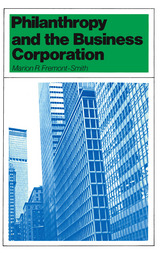 Philanthropy and the Business Corporation
Marion R. Fremont-Smith
Russell Sage Foundation, 1972 Attempts to study corporation philanthropy inevitably prove frustrating, for it is a subject surrounded by rhetoric and almost entirely devoid of hard facts. Marion R. Fremont-Smith's concise appraisal of corporation philanthropy takes a close look at the donative policies of corporations and their methods of giving. Concentrating on the legal and historical setting, as well as corporation philanthropy in practice, the author analyzes recent expansion in the field of traditional philanthropy and the accompanying shift in public attitude toward the responsibility of business corporations. The book shows how this new attitude has brought with it a reappraisal of the philosophical and legal bases for corporate action in the social sphere. In conclusion, Mrs. Fremont-Smith calls for a more imaginative and independent definition of the objectives of corporate philanthropic policies and not merely a continuing series of ill-considered defensive reactions.
 Philanthropy, Conflict Management and International Law: The 1914 Carnegie Report on the Balkan Wars of 1912/13
Stefan Troebst
Central European University Press, 2022 This book centers on the Report of the International Commission to Inquire into the Causes and Conduct of the Balkan Wars, published in Washington in the early summer of 1914 by the Carnegie Endowment for International Peace. The volume was born from the conviction that the full assessment of the significance of the Carnegie Report—one of the first international non-governmental fact-finding missions with the intention to promote peace—requires a deeper exploration of the context of its birth. The authors examine how the countries involved in the wars handled the inquires of the Carnegie Commission and the role of the report in the remembrance of the wars in the respective states. Although the report considered both the Ottoman Empire and the Balkan nation-states insufficiently civilized to wage wars within the limits of the codes of conduct of international law, this orientalist conclusion can in part be explained by the liberal internationalist strategy of the Carnegie Endowment, and of the commission members’ professional, political, and ethnic background. Overshadowed by the outbreak of World War I, the Carnegie Report’s direct impact on international arbitration or international criminal law was limited, yet—in the authors’ opinion—it ultimately contributed to the further juridification of international relations
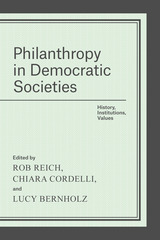 Philanthropy in Democratic Societies: History, Institutions, Values
Edited by Rob Reich, Chiara Cordelli, and Lucy Bernholz
University of Chicago Press, 2016 Philanthropy is everywhere. In 2013, in the United States alone, some $330 billion was recorded in giving, from large donations by the wealthy all the way down to informal giving circles. We tend to think of philanthropy as unequivocally good, but as the contributors to this book show, philanthropy is also an exercise of power. And like all forms of power, especially in a democratic society, it deserves scrutiny. Yet it rarely has been given serious attention. This book fills that gap, bringing together expert philosophers, sociologists, political scientists, historians, and legal scholars to ask fundamental and pressing questions about philanthropy’s role in democratic societies.
The contributors balance empirical and normative approaches, exploring both the roles philanthropy has actually played in societies and the roles it should play. They ask a multitude of questions: When is philanthropy good or bad for democracy? How does, and should, philanthropic power interact with expectations of equal citizenship and democratic political voice? What makes the exercise of philanthropic power legitimate? What forms of private activity in the public interest should democracy promote, and what forms should it resist? Examining these and many other topics, the contributors offer a vital assessment of philanthropy at a time when its power to affect public outcomes has never been greater.
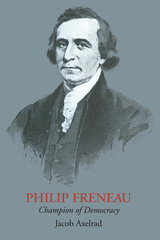 Philip Freneau: Champion of Democracy
By Jacob Axelrad
University of Texas Press, 1967 Philip Freneau was a poet, editor, and mariner. A graduate of Princeton, he was the roommate of James Madison and a classmate of Hugh Henry Brackenridge and Aaron Burr. When the colonies rebelled against England, he supported his newly born nation as a privateer, spending some time in a British prison as a result. He also served, more effectively, as “the poet of the Revolution.” Later he became the journalistic voice of the democrats. Ardently devoted to liberty, he believed himself to be a defender of the common man, for whom he fought selflessly and often vitriolicly throughout his life. In newspapers such as The Freeman’s Journal, The New York Daily Advertiser, The National Gazette, The Jersey Chronicle, and The Time-Piece, he published articles, letters, and poems, instructing the citizens of the new Republic about their rights, and attacking those who, he believed, were infringing on those rights. In the midst of the controversy in which he was so often involved, he also found time to write a small body of poetry whose sensitivity and beauty mark him as the poetic equal of his European contemporaries, and, in fact, as a precursor of the new Romantic movement In Philip Freneau: Champion of Democracy Jacob Axelrad provides a detailed biography of this pensman of the Revolution and early Republic. He gives a sympathetic, imaginative, perceptive, yet objective interpretation of Freneau and his place in history, and at the same time he presents a delightfully readable and clear picture of the period during which the poet lived. These pages not only re-create the battles between Whig and Tory, federalist and democrat, but they also are alive with the activities and philosophies of the men who made American history. James Madison, Thomas Jefferson, Alexander Hamilton, George Washington, John Adams, James Monroe go about the business of creating and shaping a new country, and as they do, they move into and out of the life of the poet of Monmouth, influencing him in a variety of ways. Above all, Axelrad brings to life for the reader the man Freneau: simple, direct, often uncritical in his devotion to the cause he believed in; courageous in sustaining his stand against strong opposition; disillusioned and pessimistic about human nature, yet boldly optimistic about the future of humanity and of his country. And always behind the furor the reader is aware of the man struggling to provide a living for himself and his family, and never quite succeeding.
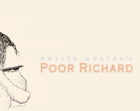 Philip Guston's Poor Richard
Debra Bricker Balken
University of Chicago Press, 2001 In 1971, as the race for the presidency heated up, the artist Philip Guston (1913-1980) created a series of caricatures of Richard Nixon titled Philip Guston's Poor Richard. Produced two years before Watergate and three years before Nixon's resignation, these provocative, searing condemnations of a corrupt head of state are remarkable, prescient political satire. The drawings mock Nixon's physical attributes—his nose is rendered as an enlarged phallus throughout-as well as his notoriously dubious, shifty character. Debra Bricker Balken's book is the first book—length publication of these drawings.
A visual narrative of Nixon's life, the drawings trace Nixon from his childhood, through his ascent to power, to his years in the White House. They incorporate Henry Kissinger (a pair of glasses), Spiro Agnew (a cone-head), and John Mitchell (a dolt smoking a pipe). They depict Nixon and his cohorts in China, plotting strategy in Key Biscayne, and shamelessly pandering to African Americans, hippies, and elderly tourists.
As Balken discusses in her accompanying essay, these drawings also reflect a dramatic transformation in Guston's work. In response to social unrest and the Vietnam War, he began to question the viability of a private art given to self-expression. His betrayal of aesthetic abstraction in favor of imagery imbued with personal and political meaning largely engendered the renewal of figuration in painting in America in the 1970s. These drawings not only represent one of the few instances of an artist in the late twentieth century engaging caricature in his work, they are also a witty, acerbic take on a corrupt figure and a scandalous political regime.
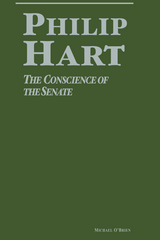 Philip Hart: the conscience of the Senate
Michael O'Brien
Michigan State University Press, 1995 Never a fiery orator nor a seeker of headlines, Phil Hart earned after eighteen years in congress the title of "The Conscience of the Senate" from colleauges on both sides of the aisle. Author and sponsor of critical legislation, particulalry in the areas of civil rights, antitrust enforcement, and consumer and and environmental protection, Hart took great pride in the fact that he was a leader in the Senate fight for the Voting Rights Act of 1965. He was intelligent and committed, idealistic and courageous, honest and humble, taking stands on contraversial issues. A role model for many, an inspiration for others, the extent of his influence was demonstrated in the fall of 1976 as he was retiring from the Senate and dying of cancer. In a tribute to his distinguished career, Senator Edward Kennedy suggested that the new Senate building be named after Hart. A bill sponsored by 85 senators passed, and the new structure became the Phil A. Hart Senate Office Building. "Naming it for Phil Hart was a nice gesture," wrote columnist Mary McGrory, "and if they could build his qualities...into the walls, we would have a Senate that would astound the world with its civility and enlightenment."
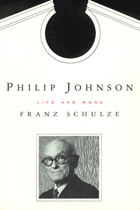 Philip Johnson: Life and Work
Franz Schulze
University of Chicago Press, 1996 In this critically acclaimed biography, Franz Schulze probes the private and professional life of one of the most famous architects and architectural critics of the twentieth century.
The only child of a wealthy Midwestern family, Philip Johnson was a millionaire by the time he graduated from Harvard, and in 1932 he helped stage the historic International Style exhibition at the Museum of Modern Art. A patron of the arts and a political activists who flirted with the politics of Hitler, Huey Long, and Father Coughlin, he went on to create controversial and historical structures such as the Glass House, the Roofless Church, the AT & T Building, the Crystal Cathedral, and many more. Johnson's personal charms paired with his manipulative ploys—like his "borrowing" of designs—shine through in this biography.
Drawing on Johnson's correspondence, personal photographs, and speeches, and on interviews with his friends and contemporaries, Schulze fills the biography with fascinating information on the architect's family, travels, friends and lovers, and his many buildings and spaces themselves.
Franz Schulze is a professor of art at Lake Forest College. He is the author of Fantastic Images: Chicago Art since 1945, One Hundred Years of Chicago Architecture, and Mies van der Rohe: A Critical Biography.
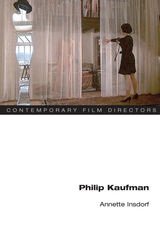 Philip Kaufman
Annette Insdorf
University of Illinois Press, 2012 American director Philip Kaufman is hard to pin down: a visual stylist who is truly literate, a San Franciscan who often makes European films, he is an accessible storyteller with a sophisticated touch. Celebrated for his vigorous, sexy, and reflective cinema, Kaufman is best known for his masterpiece The Unbearable Lightness of Being and the astronaut saga The Right Stuff. His latest film, Hemingway & Gellhorn(premiering May 2012 on HBO), stars Nicole Kidman and Clive Owen. In this study, Annette Insdorf argues that the stylistic and philosophical richness of Kaufman's cinema makes him a versatile auteur. She demonstrates Kaufman's skill at adaptation, how he finds the precise cinematic device for a story drawn from seemingly unadaptable sources, and how his eye translates the authorial voice from books that serve as inspiration for his films. Closely analyzing his movies to date (including Invasion of the Body Snatchers, The Wanderers, and Quills), Insdorf links them by exploring the recurring and resonant themes of sensuality, artistic creation, codes of honor, and freedom from manipulation. While there is no overarching label or bold signature that can be applied to his oeuvre, she illustrates the consistency of themes, techniques, images, and concerns that permeates all of Kaufman's works.
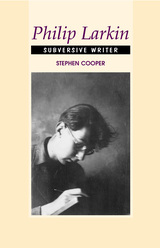 Philip Larkin: Subversive Writer
Stephen Cooper
Sussex Academic Press, 2022 Overturning many of the established perspectives on Larkin's poetry and prose, Cooper's book presents new evidence from a range of previously unpublished sources, and is the first full-length critical work to analyze Larkin's early fiction, as well as advance new readings of The Less Deceived, The Whitsun Weddings and High Windows. Critics have tended to label Larkin's poetry as sexist, racist and reactionary. However, this volume demonstrates that Larkin's artistic impulse throughout his career was to challenge orthodox models of social and sexual politics. Focusing on the Brunette Coleman novellas and the unfinished novels, a structural blueprint is identified as prefiguring the later poems' commentary on sexual and social conduct. Further unpublished material includes correspondence, workbook drafts, dream records, and a playscript, depicting, alternately, hostility to wartime heroics, revulsion to capitalism, unease with traditional gender roles and an interest in psychoanalysis. This study makes available to scholars paintings by Larkin's friend, James Sutton, which illuminate the writer's concern with social oppression, especially the predicament of women in the 1940s. Philip Larkin: Subversive Writer is a fresh and revealing study on Larkin's artistic subversion; stylistic and thematic, it reveals the underlying themes of Larkin's entire oeuvre.
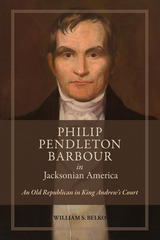 Philip Pendleton Barbour in Jacksonian America: An Old Republican in King Andrew’s Court
William S. Belko
University of Alabama Press, 2016 William S. Belko’s Philip Pendleton Barbour in Jacksonian America provides the first comprehensive biography of a pivotal yet nearly forgotten statesman who made numerous key contributions to a transformative period of early American history.
Barbour, a Virginia lawyer, participated in America’s transition from a mostly republican government to a truer majority democracy, notably while serving as the twelfth Speaker of the United States House of Representatives and later as an associate justice of the United States Supreme Court. After being elected to the US Congress during the War of 1812, Barbour also emerged as one of the foremost champions of states’ rights, consistently and energetically fighting against expansions of federal powers. He, along with other Jeffersonian Old Republicans, opposed federal plans for a national tariff and internal improvements. Later, Barbour became one of the first Jeffersonian politicians to join the Jacksonian Democrats in Jackson’s war against a national bank.
Barbour continued to make crucial strides in support of states’ rights after taking his seat on the United States Supreme Court in 1836 under Chief Justice Roger Taney. He contributed to the Charles River Bridge v. Warren Bridge and Briscoe v. Bank of Kentucky decisions, which bolstered states’ rights. He also delivered the opinion of the court in New York v. Miln, which provided the basis for the State Police Powers Doctrine.
Expertly interweaving biography, history, political science, and jurisprudence, Philip Pendleton Barbour in Jacksonian America remembers the man whose personal life and career were emblematic of the decades in which the United States moved from the Age of Jefferson to the Age of Jackson, contributing to developments that continue to animate American politics today.
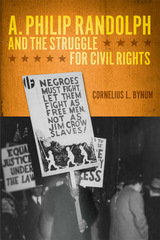 A. Philip Randolph and the Struggle for Civil Rights
Cornelius L. Bynum
University of Illinois Press, 2010 A. Philip Randolph's career as a trade unionist and civil rights activist fundamentally shaped the course of black protest in the mid-twentieth century. Standing alongside W. E. B. Du Bois, Marcus Garvey, and others at the center of the cultural renaissance and political radicalism that shaped communities such as Harlem in the 1920s and into the 1930s, Randolph fashioned an understanding of social justice that reflected a deep awareness of how race complicated class concerns, especially among black laborers. Examining Randolph's work in lobbying for the Brotherhood of Sleeping Car Porters, threatening to lead a march on Washington in 1941, and establishing the Fair Employment Practice Committee, Cornelius L. Bynum shows that Randolph's push for African American equality took place within a broader progressive program of industrial reform. Some of Randolph's pioneering plans for engineering change--which served as foundational strategies in the civil rights movement of the 1950s and 1960s--included direct mass action, nonviolent civil disobedience, and purposeful coalitions between black and white workers. Bynum interweaves biographical information on Randolph with details on how he gradually shifted his thinking about race and class, full citizenship rights, industrial organization, trade unionism, and civil rights protest throughout his activist career.
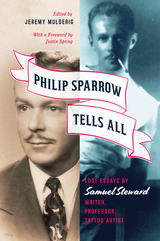 Philip Sparrow Tells All: Lost Essays by Samuel Steward, Writer, Professor, Tattoo Artist
Samuel Steward
University of Chicago Press, 2015 Samuel Steward (1909–93) was an English professor, a tattoo artist for the Hells Angels, a sexual adventurer who shared the considerable scope of his experiences with Alfred Kinsey, and a prolific writer whose publications ranged from scholarly articles to gay erotica (the latter appearing under the pen name Phil Andros). Perhaps his oddest authorial role was as a monthly contributor between 1944 and 1949 to the Illinois Dental Journal, an obscure trade publication for dentists, where writing as Philip Sparrow he produced a series of charming, richly allusive, and often quirky essays on a wildly eclectic assortment of topics.
In Philip Sparrow Tells All, Jeremy Mulderig has collected thirty of these engaging but forgotten columns, prefacing them with revealing introductions that relate the essays to people and events in Steward’s life and to the intellectual and cultural contexts in which he wrote during the 1940s. In these essays we encounter such famous friends of Steward as Gertrude Stein, André Gide, and Thornton Wilder. We hear of his stint as a holiday sales clerk at Marshall Field’s (where he met and seduced fellow employee Rock Hudson), of his roles as an opera and ballet extra in hilariously shoddy costumes, of his hoarding tendencies, his disappointment with the drabness of men’s fashions, and his dread of turning forty. We go along with him to a bodybuilding competition and a pet cemetery, and together we wander the boulevards of Paris and the alleys of Algiers. Throughout, Mulderig’s entertaining annotations explain the essays’ wide-ranging allusions and also highlight their gay subtext, which constituted a kind of private game that Steward played with his mostly oblivious audience of Midwestern dentists.
The first collection of any of Samuel Steward’s writings to be republished since his death in 1993, Philip Sparrow Tells All makes these lost essays available to a broad readership that Steward imagined but never actually enjoyed when he wrote them. In doing so, it takes a major step toward documenting his important place in twentieth-century gay literature and history.
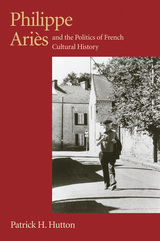 Philippe Aries and the Politics of French Cultural History
Patrick H. Hutton
University of Massachusetts Press, 2004 The author of Centuries of Childhood and other landmark historical works, Philippe Ariès (1914–1984) was a singular figure in French intellectual life. He was both a political reactionary and a path-breaking scholar, a sectarian royalist who supported the Vichy regime and a founder of the new cultural history—popularly known as l'histoire des mentalités—that developed in the decades following World War II. In this book, Patrick H. Hutton explores the relationship between Ariès's life and thought and evaluates his contribution to modern historiography, in France and abroad.
According to Hutton, the originality of Ariès's work and the power of his appeal derived from the way he drew together the two strands of his own intellectual life: his enduring ties to the old cultural order valued by the right-wing Action Française, and a newfound appreciation for the methodology of the leftist Annales school of historians. A demographer by training, he pioneered a new route into the history of private life that eventually won him a wide readership and in late life an appointment to the faculty of the prestigious École des Hautes Études en Sciences Sociales. At the same time, he fashioned himself as a man of letters in the intellectual tradition of the Action Française and became a perspicacious journalist as well as a stimulating writer of autobiographical memoirs. In Hutton's view, this helps explain why, more than any other historian, Philippe Ariès left his personal signature on his scholarship.
 Philippics
Cicero
Harvard University Press Cicero (Marcus Tullius, 10643 BCE), Roman lawyer, orator, politician and philosopher, of whom we know more than of any other Roman, lived through the stirring era which saw the rise, dictatorship, and death of Julius Caesar in a tottering republic. In his political speeches especially and in his correspondence we see the excitement, tension and intrigue of politics and the part he played in the turmoil of the time. Of about 106 speeches, delivered before the Roman people or the Senate if they were political, before jurors if judicial, 58 survive (a few of them incompletely). In the fourteenth century Petrarch and other Italian humanists discovered manuscripts containing more than 900 letters of which more than 800 were written by Cicero and nearly 100 by others to him. These afford a revelation of the man all the more striking because most were not written for publication. Six rhetorical works survive and another in fragments. Philosophical works include seven extant major compositions and a number of others; and some lost. There is also poetry, some original, some as translations from the Greek.
The Loeb Classical Library edition of Cicero is in twenty-nine volumes.
 Philippics 1–6
Edited and translated by D. R. Shackleton BaileyRevised by John T. Ramsey and Gesine Manuwald
Harvard University Press, 2009 Invectives against Antony.
Cicero (Marcus Tullius, 106–43 BC), Roman advocate, orator, politician, poet, and philosopher, about whom we know more than we do of any other Roman, lived through the stirring era that saw the rise, dictatorship, and death of Julius Caesar in a tottering republic. In Cicero’s political speeches and in his correspondence we see the excitement, tension, and intrigue of politics and the part he played in the turmoil of the time. Of about 106 speeches, 58 survive (a few incompletely), 29 of which are addressed to the Roman people or Senate, the rest to jurors. In the fourteenth century Petrarch and other Italian humanists discovered manuscripts containing more than 900 letters, of which more than 800 were written by Cicero, and nearly 100 by others to him. This correspondence affords a revelation of the man, all the more striking because most of the letters were not intended for publication. Six works on rhetorical subjects survive intact and another in fragments. Seven major philosophical works are extant in part or in whole, and there are a number of shorter compositions either preserved or known by title or fragments.
The Loeb Classical Library edition of Cicero is in twenty-nine volumes.
 Philippics 7–14
Edited and translated by D. R. Shackleton BaileyRevised by John T. Ramsey and Gesine Manuwald
Harvard University Press, 2009 Invectives against Antony.
Cicero (Marcus Tullius, 106–43 BC), Roman advocate, orator, politician, poet, and philosopher, about whom we know more than we do of any other Roman, lived through the stirring era that saw the rise, dictatorship, and death of Julius Caesar in a tottering republic. In Cicero’s political speeches and in his correspondence we see the excitement, tension, and intrigue of politics and the part he played in the turmoil of the time. Of about 106 speeches, 58 survive (a few incompletely), 29 of which are addressed to the Roman people or Senate, the rest to jurors. In the fourteenth century Petrarch and other Italian humanists discovered manuscripts containing more than 900 letters, of which more than 800 were written by Cicero, and nearly 100 by others to him. This correspondence affords a revelation of the man, all the more striking because most of the letters were not intended for publication. Six works on rhetorical subjects survive intact and another in fragments. Seven major philosophical works are extant in part or in whole, and there are a number of shorter compositions either preserved or known by title or fragments.
The Loeb Classical Library edition of Cicero is in twenty-nine volumes.
Philippine Confluence: Iberian, Chinese and Islamic Currents, C. 1500-1800
Edited by Jos Gommans and Ariel Lopez
Leiden University Press, 2020 Situated at the crossroads of the Indian and Pacific Oceans, the Spanish Philippines offer historians an intriguing middle ground of connected histories that raises fundamental new questions about conventional ethnic, regional and religious identities. This volume adds a new global perspective to the history of the Philippines by juxtaposing Iberian, Chinese and Islamic perspectives. By navigating various underexplored archival resources, senior and junior scholars from Asia, Europe and the Americas explore the diverse cultural, religious, and economic flows that shaped the early modern Philippine milieu. By zooming in from the global to the local, this book offers eleven fascinating Philippine case studies of early modern globalization.
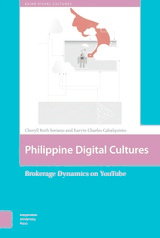 Philippine Digital Cultures: Brokerage Dynamics on YouTube
Cheryll Ruth Soriano
Amsterdam University Press, 2022 Social media platforms have been pivotal in redefining the conduct of contemporary society. Amid the proliferation of a range of new and ubiquitous online platforms, YouTube, a video-based platform, remains a key driver in the democratisation of creative, playful, vernacular, intimate, as well as political expressions. As a critical node of contemporary communication and digital cultures, its steady uptake and appropriation in a social media-savvy nation such as the Philippines requires a critical examination of its role in the continued reconstruction of identities, communities, and broader social institutions. This book closely analyses the diverse content and practices of amateur Filipino YouTubers, exposing and problematising the dynamics of brokering the contested aspirational logics of beauty and selfhood, interracial relationships, world-class labour, and progressive governance in a digital sphere. Ultimately, YouTube and Brokerage Dynamics in Philippine Digital Cultures offers a fresh, compelling, and nuanced account of YouTube as an important site for the mediation of culture, economy, and politics in Philippine postcolonial modernity amid rapid economic globalisation and digitalisation.
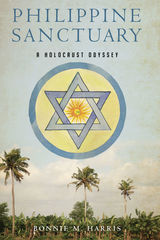 Philippine Sanctuary: A Holocaust Odyssey
Bonnie M. Harris
University of Wisconsin Press, 2022 During World War II, the United States government and many Western democracies limited or closed themselves off entirely to Jewish refugees. By contrast, a Pacific island nation decided to keep its doors open. Between 1938 and 1941, the Philippine Commonwealth provided safe asylum to more than 1,300 German Jews. In highlighting the efforts by Philippine president Manual Quezon and High Commissioner Paul V. McNutt, Bonnie M. Harris offers fuller implications for our understanding of the Roosevelt administration's response to the Holocaust.
This untold history is brought to life by focusing on the incredible journey of synagogue cantor Joseph Cysner. Drawing from oral histories, memoirs, and personal papers, Harris documents Cysner's harrowing escape from the Nazis and his heroic rescue by the American-led Jewish community of the Philippines in 1939. Moving and rich in historical detail, Philippine Sanctuary reveals new insights for an overlooked period in our recent history, and emphasizes the continued importance of humanitarian efforts to aid those being persecuted.
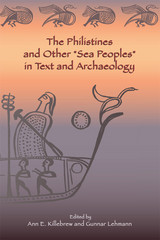 The Philistines and Other Sea Peoples in Text and Archaeology
Ann E. Killebrew
SBL Press, 2013 The search for the biblical Philistines, one of ancient Israel’s most storied enemies, has long intrigued both scholars and the public. Archaeological and textual evidence examined in its broader eastern Mediterranean context reveals that the Philistines, well-known from biblical and extrabiblical texts, together with other related groups of “Sea Peoples,” played a transformative role in the development of new ethnic groups and polities that emerged from the ruins of the Late Bronze Age empires. The essays in this book, representing recent research in the fields of archaeology, Bible, and history, reassess the origins, identity, material culture, and impact of the Philistines and other Sea Peoples on the Iron Age cultures and peoples of the eastern Mediterranean. The contributors are Matthew J. Adams, Michal Artzy, Tristan J. Barako, David Ben-Shlomo, Mario Benzi, Margaret E. Cohen, Anat Cohen-Weinberger, Trude Dothan, Elizabeth French, Marie-Henriette Gates, Hermann Genz, Ayelet Gilboa, Maria Iacovou, Ann E. Killebrew, Sabine Laemmel, Gunnar Lehmann, Aren M. Maeir, Amihai Mazar, Linda Meiberg, Penelope A. Mountjoy, Hermann Michael Niemann, Jeremy B. Rutter, Ilan Sharon, Susan Sherratt, Neil Asher Silberman, and Itamar Singer.
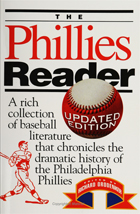 Phillies Reader
Richard Orodenker
Temple University Press, 2005 An anthology of some of the best writing about the up-and-down history of the Philadelphia Phillies, this updated paperback edition features several new essays—including one about Citizens Bank Park—and the team's recent history. The stories herein provide fans with some of the best sportswriting about the woes and triumphs of Phillies baseball. The Phillies Reader features essays on the athletic achievements of such legendary players as Chuck Klein, Richie Ashburn, Dick Allen, and Mike Schmidt; the political turmoil surrounding the "ok" from manager Ben Chapman to "ride" Jackie Robinson about the color of his skin; the bizarre shooting of Eddie Waitkus; the heroics of the Whiz Kids; the heartbreak of '64; and the occasional triumphs and frequent travails of controversial managers Gene Mauch, Frank Lucchesi, and Danny Ozark. It asks why fans boo great players such as Del Ennis, but forgave Pat Burrell for his horrendous 2003 slump. Featuring essays by Red Smith, Pete Dexter, Roger Angell, and James Michener, among others, The Phillies Reader presents a compendium of Phillies literature that reveals what it is that makes legends.
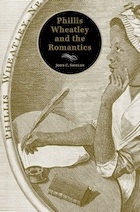 Phillis Wheatley and the Romantics
John C. Shields
University of Tennessee Press, 2010
Phillis Wheatley was the first African American to publish a book. Born in Gambia in 1753, she came to America aboard a slave ship, the Phillis. From an early age, Wheatley exhibited a profound gift for verse, publishing her first poem in 1767. Her tribute to a famed pastor, “On the Death of the Rev. Mr. George Whitefield,” followed in 1770, catapulting her into the international spotlight, and publication of her 1773 Poems on Various Subjects Religious and Moral in London created her an international star.
Despite the attention she received at the time, history has not been kind to Wheatley. Her work has long been neglected or denigrated by literary critics and historians. John C. Shields, a scholar of early American literature, has tried to help change this perception, and Wheatley has begun to take her place among the elite of American writers.
In Phillis Wheatley and the Romantic Age, Shields contends that Wheatley was not only a brilliant writer but one whose work made a significant impression on renowned Europeans of the Romantic age, such as Samuel Taylor Coleridge, who borrowed liberally from her works, particularly in his famous distinction between fancy and imagination. Shields shows how certain Wheatley texts, particularly her “Long Poem,” consisting of “On Recollection,” “Thoughts on the Works of Providence,” and “On Imagination,” helped shape the face of Romanticism in the late eighteenth and nineteenth centuries.
Phillis Wheatley and the Romantic Age helps demolish the long-held notion that literary culture flowed in only one direction: from Europe to the Americas. Thanks to Wheatley’s influence, Shields argues, the New World was influencing European literary masters far sooner than has been generally understood.
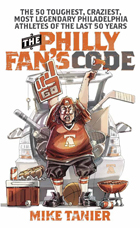 The Philly Fan's Code: The 50 Toughest, Craziest, Most Legendary Philadelphia Athletes of the Last 50 Years
Mike Tanier
Temple University Press, 2011 Face it: Philadelphia athletes are often as tough as their fans are passionate. How else to explain the rabid appeal of the bone-crunching Broad Street Bullies? Chuck Bednarik was one of the looniest tunes in Philadelphia sports history, but fuggedabout him. In The Philly Fan's Code, New York Times sportswriter Mike Tanier provides fun and opinionated essays that evaluate the 50 greatest, toughest, and most eccentric legends of Philly sports since Concrete Charlie hung up his cleats. Using his own "rubric" to calculate the impact of each athlete, Tanier ranks well-adjusted players like Mark Howe alongside both unpredictable athletes like Brad Lidge—who followed an almost perfect season with a 162-game catastrophe—and quirky ones, such as Wilt Chamberlain, who may be better known for bragging about his sexual conquests than for scoring 100 points in a game. And let's not forget our visitor from Planet Lovetron… Then there are the real wild cards-players like Terrell Owens, who does sit-ups in his driveway and whose impact—for better or worse— outlasted the few actual games he played for the Eagles. As for Tanier's choice for the No. 1 toughest, craziest, most legendary player, well, you'll have to read the book to see if you agree. Whether you do or don't, The Philly Fan's Code will provide hours of debates and memories of who our toughest sports heroes were—or weren't.
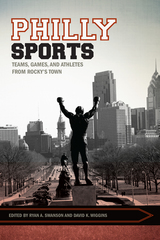 Philly Sports: Teams, Games, and Athletes from Rocky's Town
Ryan Swanson
University of Arkansas Press, 2016 Philadelphia sports—anchored by the Eagles, Flyers, Phillies, and 76ers—have a long, and sometimes tortured, history. Philly fans have booed more than their share and have earned a reputation as some of the most hostile in the country. They’ve been known, so the tales go, to jeer Santa Claus and cheer at the injury of an opposing player. Strangely though, much of America’s perception of Philadelphia sports has been shaped by a fictional figure: Rocky. The series of Hollywood films named after their title character has told and retold the Cinderella story of an underdog boxer rising up against long odds. One could plausibly make the argument that Rocky is Philadelphia’s most famous athlete. Beyond the major sports franchises and Rocky, lesser-known athletic competition in Philadelphia offers much to the interested observer. The city’s boxing culture, influence on Negro Leagues baseball, role in establishing interscholastic sport, and leadership in the rise of cricket all deserve and receive close investigation in this new collection. Philly Sports combines primary research and personal experiences—playing in the Palestra, scouting out the tombstones of the city’s best athletes, enjoying the fervor of a Philadelphia night with a local team in pursuit of a championship title. The essence of Philadelphia sport, and to a certain extent the city itself, is distilled here.
Philo: Foundations of Religious Philosophy in Judaism, Christianity, and Islam
Harry Austryn Wolfson
Harvard University Press In this authoritative study Professor Wolfson’s purpose is to trace the processes of reasoning by which Philo Judaeus of Alexandria arrived at his philosophic principles. These principles later became the common foundations of Jewish, Christian, and Moslem philosophy, and in the 17th century were made the target of attack by Spinoza. This comprehensive work will be indispensable to all serious students of Philo’s thought.
Philo: Foundations of Religious Philosophy in Judaism, Christianity, and Islam
Harry Austryn Wolfson
Harvard University Press In this authoritative study Professor Wolfson’s purpose is to trace the processes of reasoning by which Philo Judaeus of Alexandria arrived at his philosophic principles. These principles later became the common foundations of Jewish, Christian, and Moslem philosophy, and in the 17th century were made the target of attack by Spinoza. This comprehensive work will be indispensable to all serious students of Philo’s thought.
The Philo of Alexandria Scripture Index
Sean A. Adams
SBL Press, 2023 The Philo of Alexandria Scripture Index identifies and lists every instance in which Philo of Alexandria cites or alludes to passages from Jewish Scripture. With 7,831 references, this book is the most comprehensive study of its kind to date. Unlike other volumes with a single index of Philo’s citations and allusions organized by biblical book, this volume includes a second index that follows Philo’s treatise order. This second format allows students and scholars easily to examine Philo’s engagement with Scripture in individual treatises and to interrogate how Philo collected and grouped intertexts. In addition to the indices, Sean A. Adams and Zanne Domoney-Lyttle provide an introduction to their methodology and their selection of texts, including Philo’s fragmentary works and those that survive only in the Armenian tradition.
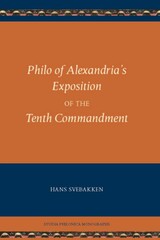 Philo of Alexandria's Exposition on the Tenth Commandment
Hans Svebakken
SBL Press, 2012 In his comprehensive exposition of the Tenth Commandment (Spec. 4.79–131), Philo considers the prohibition “You shall not desire”: what sort of desire it prohibits (and why) and how the Mosaic dietary laws collectively enforce that prohibition. This volume offers the first complete study of Philo’s exposition, beginning with an overview of its content, context, and place in previous research. In-depth studies of Philo’s concept of desire and his concept of self-control provide background and demonstrate Philo’s fundamental agreement with contemporary Middle-Platonic moral psychology, especially in his theory of emotion (pathos). A new translation of the exposition, with commentary, offers a definitive explanation of Philo’s view of the Tenth Commandment, including precisely the sort of excessive desire it targets and how the dietary laws work as practical exercises for training the soul in self-control.
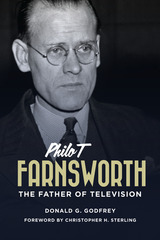 Philo T Farnsworth
Donald Godfrey
University of Utah Press, 2001 Philo T. Farnsworth (1906–1971) has been called the "forgotten father of television." He grew up in Utah and southern Idaho, and was described as a genius by those who knew and worked with him. With only a high school education, Farnsworth drew his first television schematic for his high school teacher in Rigby, Idaho. Subsequent claims and litigation notwithstanding, he was the first to transmit a television image. Farnsworth filed ten patents between 1927 and 1929 for camera tubes (transmitting), circuitry, and the cathode ray tube (viewing). After his early years as an inventor in San Francisco, he worked as an engineer, doing battle with RCA in the 1930s over patent rights, formed the Farnsworth Television Company in the 1940s, and worked for IT&T after their purchase of the Farnsworth enterprises. Every television set sold utilized at least six of his basic patents. Because of endless legal wrangling with RCA over patent rights, he received very little financial reward for his television patents. Donald Godfrey examines the genius and the failures in the life of Philo Farnsworth as he struggled to be both inventor and entrepreneur.
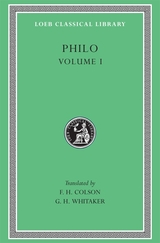 Philo, Volume I: On the Creation. Allegorical Interpretation of Genesis 2 and 3
Philo
Harvard University Press Syncretistic exegesis.
The philosopher Philo was born about 20 BC to a prominent Jewish family in Alexandria, the chief home of the Jewish Diaspora as well as the chief center of Hellenistic culture; he was trained in Greek as well as Jewish learning. In attempting to reconcile biblical teachings with Greek philosophy he developed ideas that had wide influence on Christian and Jewish religious thought.
The Loeb Classical Library edition of the works of Philo is in ten volumes and two supplements, distributed as follows. Volume I: Creation; Interpretation of Genesis II and III. II: On the Cherubim; The Sacrifices of Abel and Cain; The Worse Attacks the Better; The Posterity and Exile of Cain; On the Giants. III: The Unchangeableness of God; On Husbandry; Noah's Work as a Planter; On Drunkenness; On Sobriety. IV: The Confusion of Tongues; The Migration of Abraham; The Heir of Divine Things; On the Preliminary Studies. V: On Flight and Finding; Change of Names; On Dreams. VI: Abraham; Joseph; Moses. VII: The Decalogue; On Special Laws Books I–III. VIII: On Special Laws Book IV; On the Virtues; Rewards and Punishments. IX: Every Good Man Is Free; The Contemplative Life; The Eternity of the World; Against Flaccus; Apology for the Jews; On Providence. X: On the Embassy to Gaius; indexes. Supplement I: Questions on Genesis. II: Questions on Exodus; index to supplements.
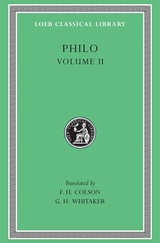 Philo, Volume II: On the Cherubim. The Sacrifices of Abel and Cain. The Worse Attacks the Better. On the Posterity and Exile of Cain. On the Giants
Philo
Harvard University Press Syncretistic exegesis.
The philosopher Philo was born about 20 BC to a prominent Jewish family in Alexandria, the chief home of the Jewish Diaspora as well as the chief center of Hellenistic culture; he was trained in Greek as well as Jewish learning. In attempting to reconcile biblical teachings with Greek philosophy he developed ideas that had wide influence on Christian and Jewish religious thought.
The Loeb Classical Library edition of the works of Philo is in ten volumes and two supplements, distributed as follows. Volume I: Creation; Interpretation of Genesis II and III. II: On the Cherubim; The Sacrifices of Abel and Cain; The Worse Attacks the Better; The Posterity and Exile of Cain; On the Giants. III: The Unchangeableness of God; On Husbandry; Noah's Work as a Planter; On Drunkenness; On Sobriety. IV: The Confusion of Tongues; The Migration of Abraham; The Heir of Divine Things; On the Preliminary Studies. V: On Flight and Finding; Change of Names; On Dreams. VI: Abraham; Joseph; Moses. VII: The Decalogue; On Special Laws Books I–III. VIII: On Special Laws Book IV; On the Virtues; Rewards and Punishments. IX: Every Good Man Is Free; The Contemplative Life; The Eternity of the World; Against Flaccus; Apology for the Jews; On Providence. X: On the Embassy to Gaius; indexes. Supplement I: Questions on Genesis. II: Questions on Exodus; index to supplements.
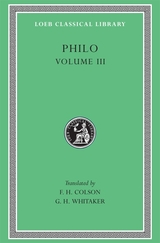 Philo, Volume III: On the Unchangeableness of God. On Husbandry. Concerning Noah’s Work as a Planter. On Drunkenness. On Sobriety
Philo
Harvard University Press Syncretistic exegesis.
The philosopher Philo was born about 20 BC to a prominent Jewish family in Alexandria, the chief home of the Jewish Diaspora as well as the chief center of Hellenistic culture; he was trained in Greek as well as Jewish learning. In attempting to reconcile biblical teachings with Greek philosophy he developed ideas that had wide influence on Christian and Jewish religious thought.
The Loeb Classical Library edition of the works of Philo is in ten volumes and two supplements, distributed as follows. Volume I: Creation; Interpretation of Genesis II and III. II: On the Cherubim; The Sacrifices of Abel and Cain; The Worse Attacks the Better; The Posterity and Exile of Cain; On the Giants. III: The Unchangeableness of God; On Husbandry; Noah's Work as a Planter; On Drunkenness; On Sobriety. IV: The Confusion of Tongues; The Migration of Abraham; The Heir of Divine Things; On the Preliminary Studies. V: On Flight and Finding; Change of Names; On Dreams. VI: Abraham; Joseph; Moses. VII: The Decalogue; On Special Laws Books I–III. VIII: On Special Laws Book IV; On the Virtues; Rewards and Punishments. IX: Every Good Man Is Free; The Contemplative Life; The Eternity of the World; Against Flaccus; Apology for the Jews; On Providence. X: On the Embassy to Gaius; indexes. Supplement I: Questions on Genesis. II: Questions on Exodus; index to supplements.
|
|


